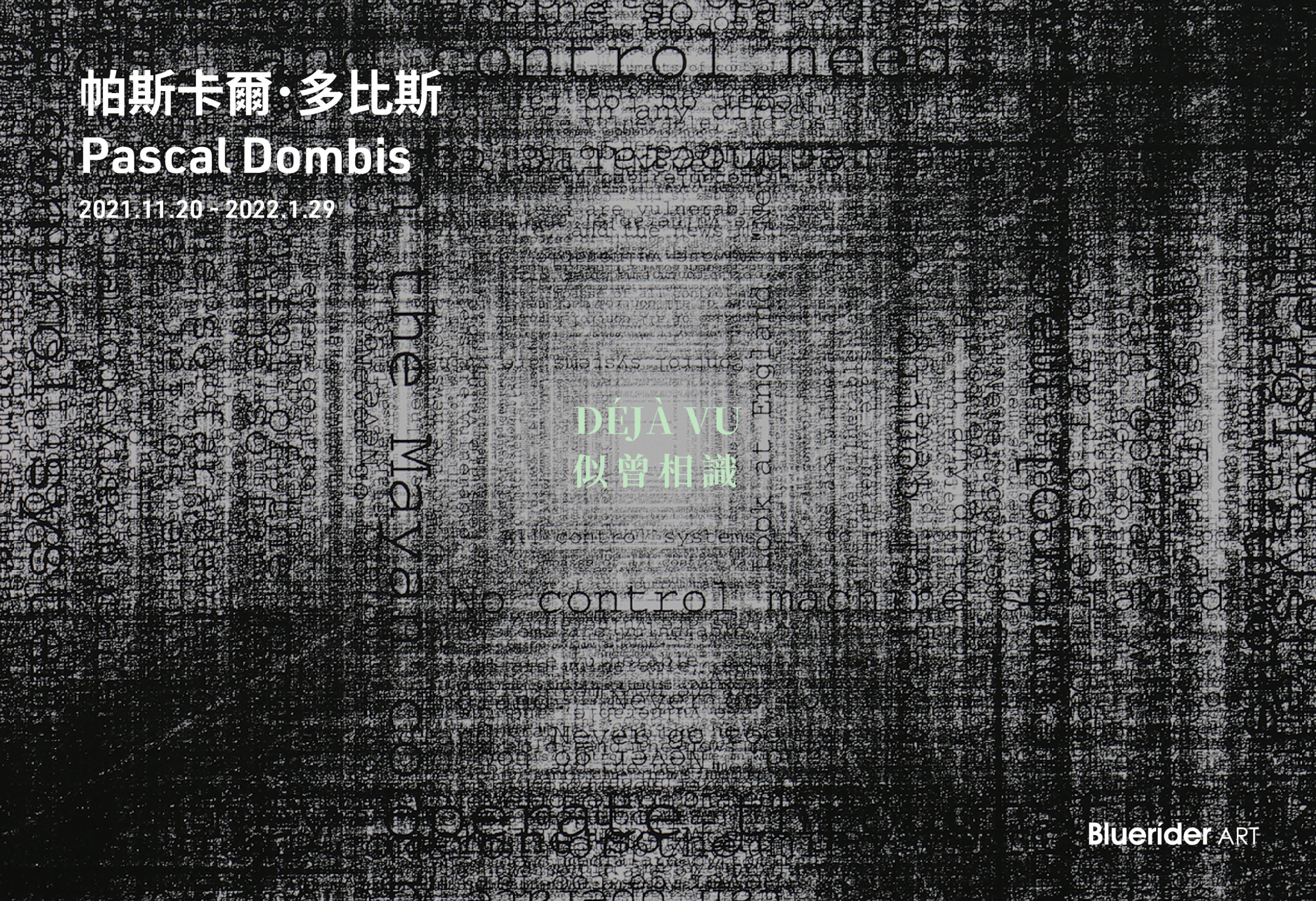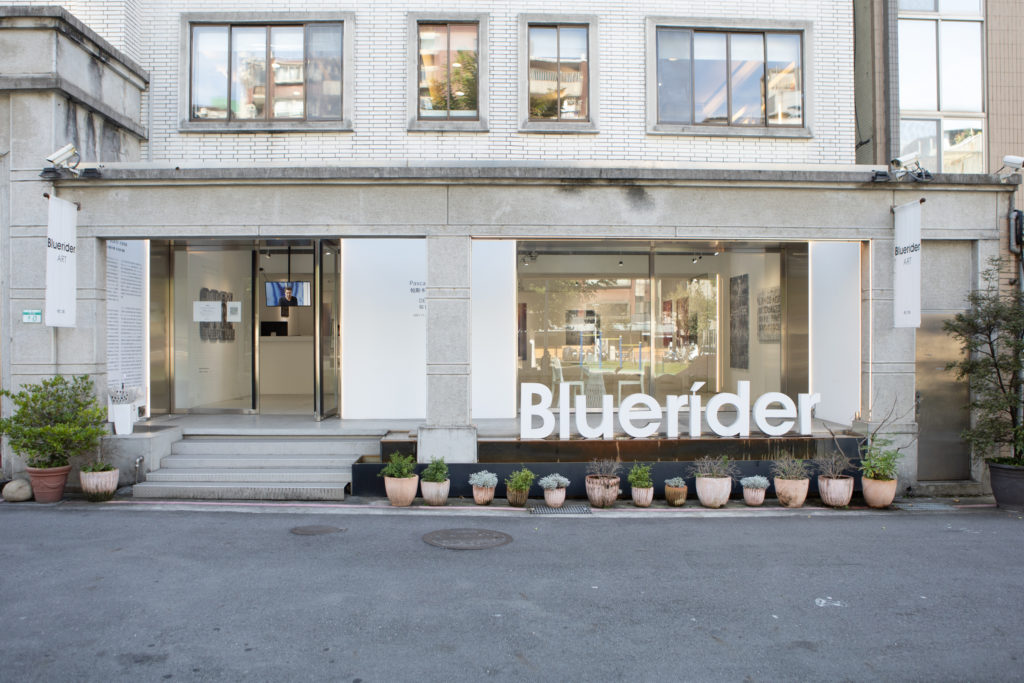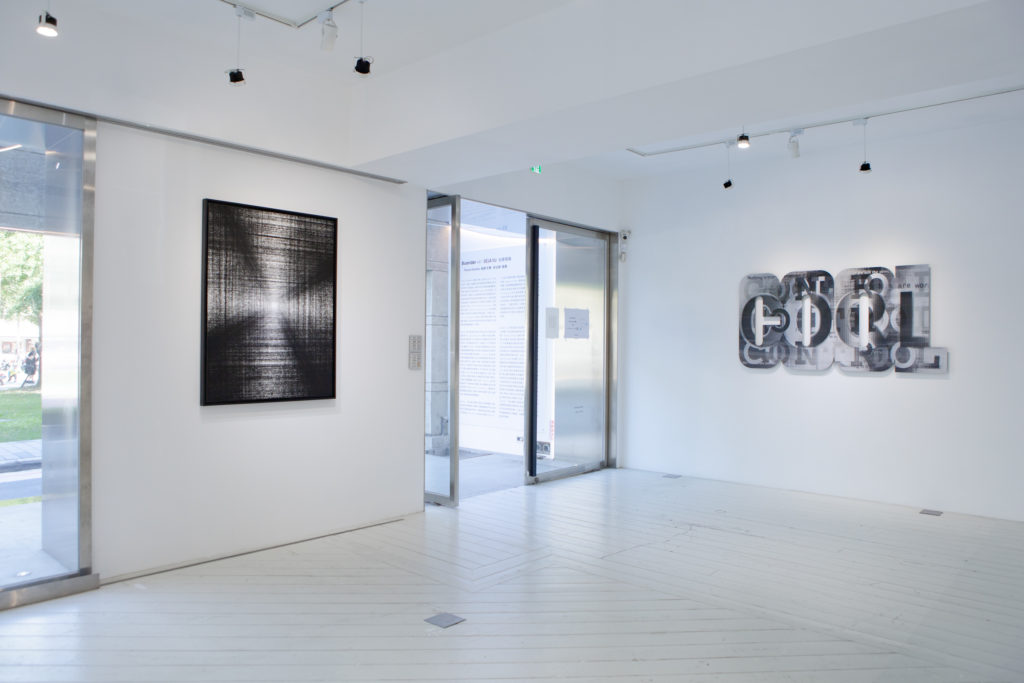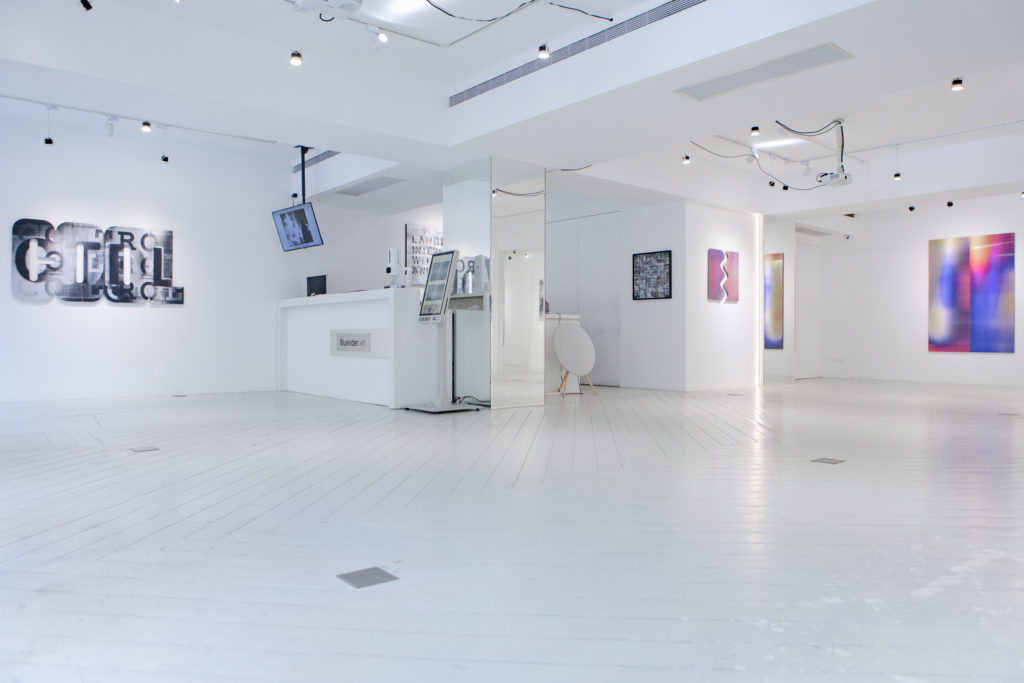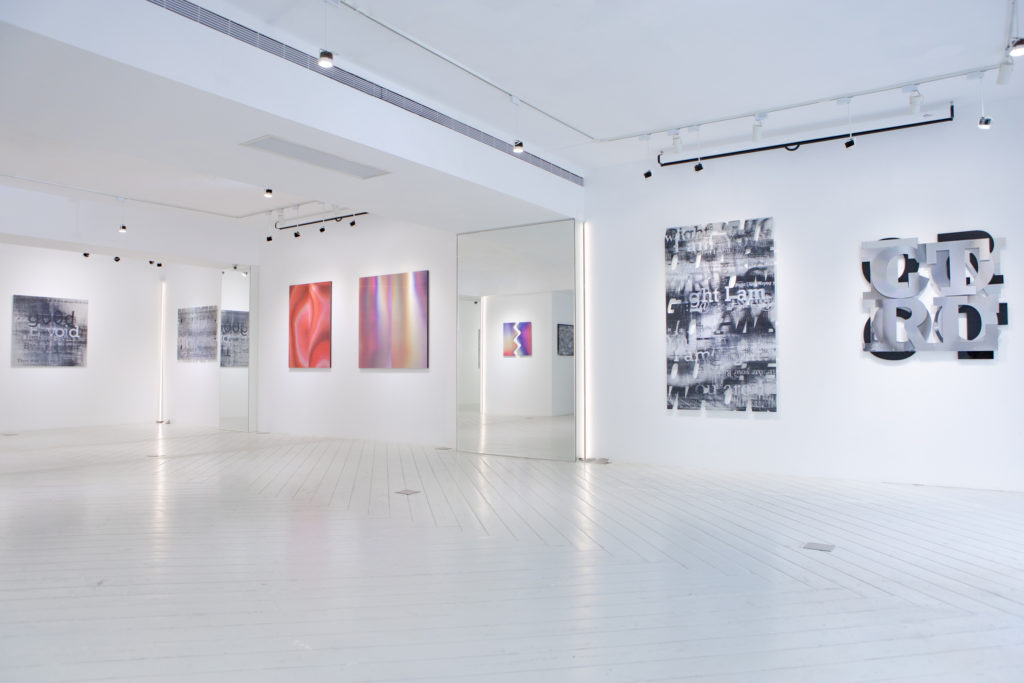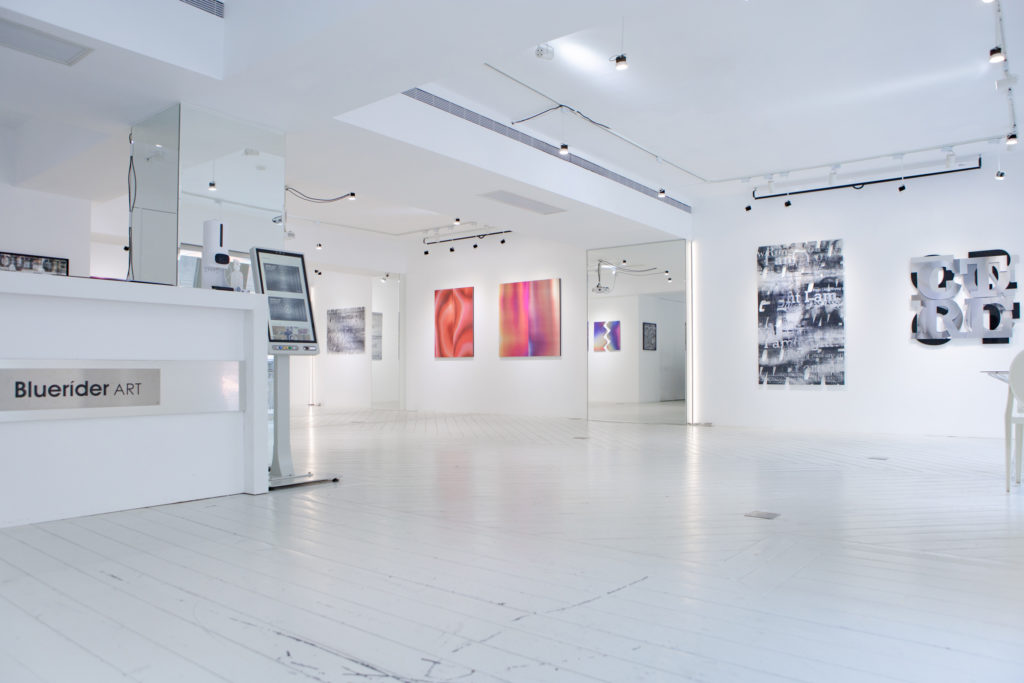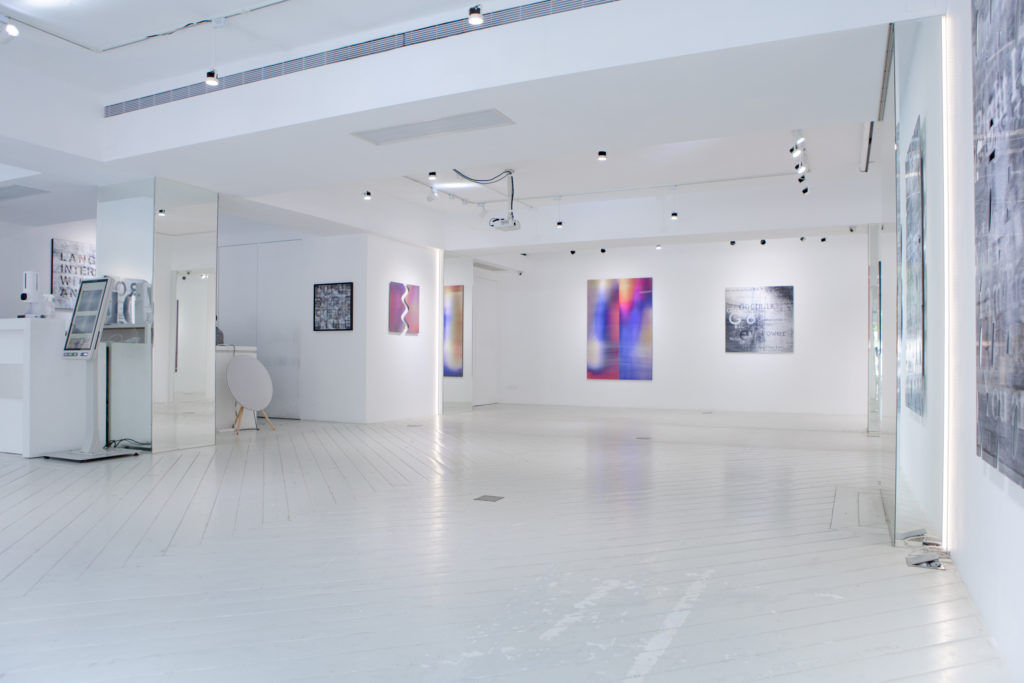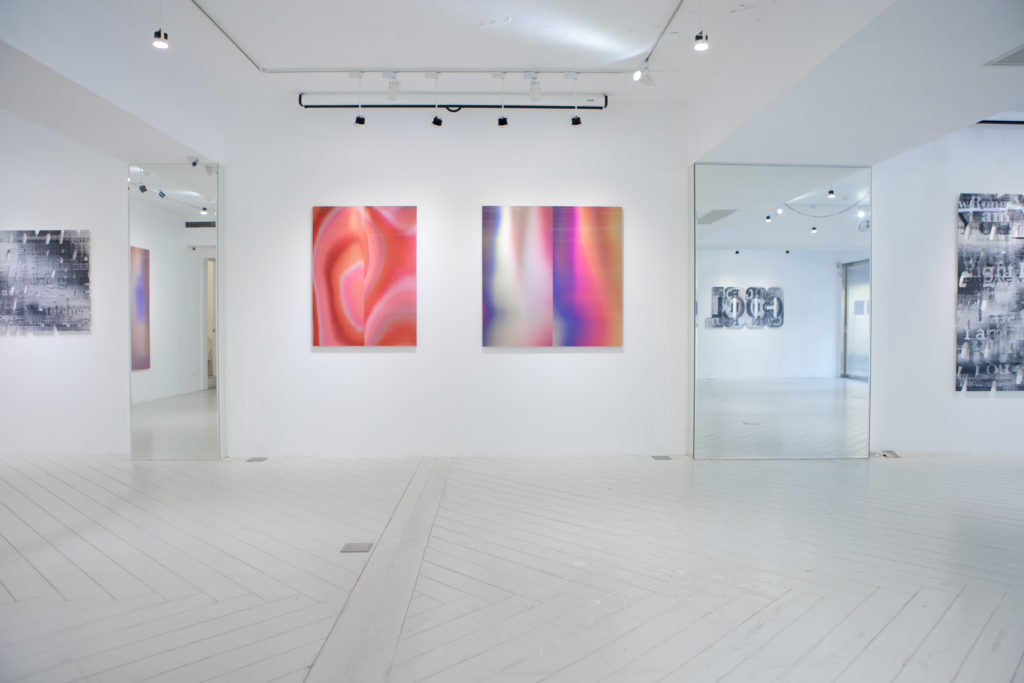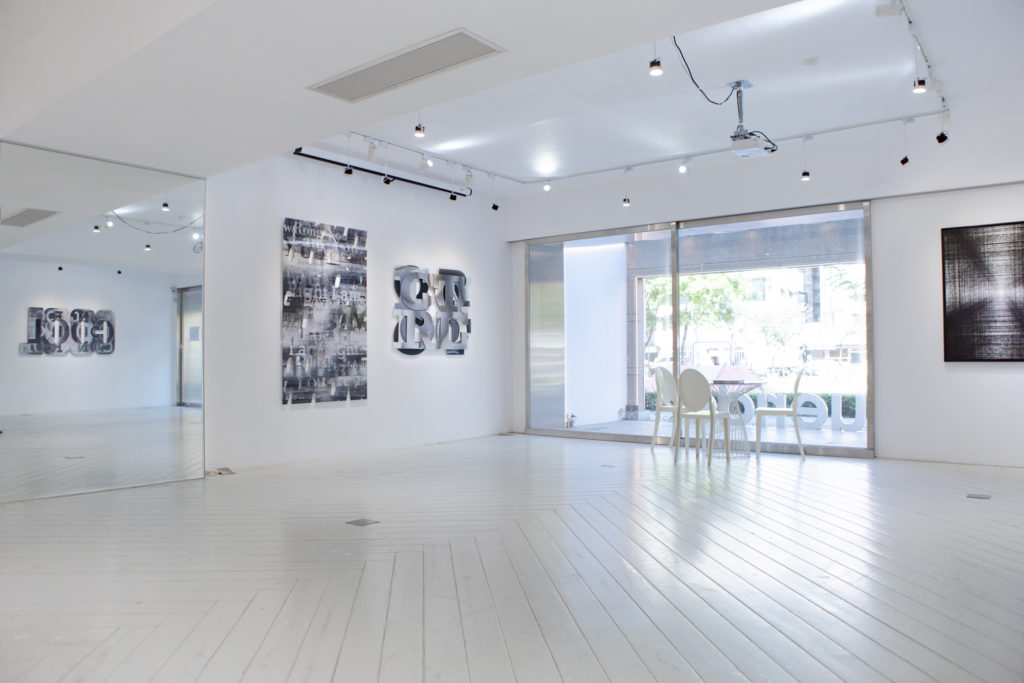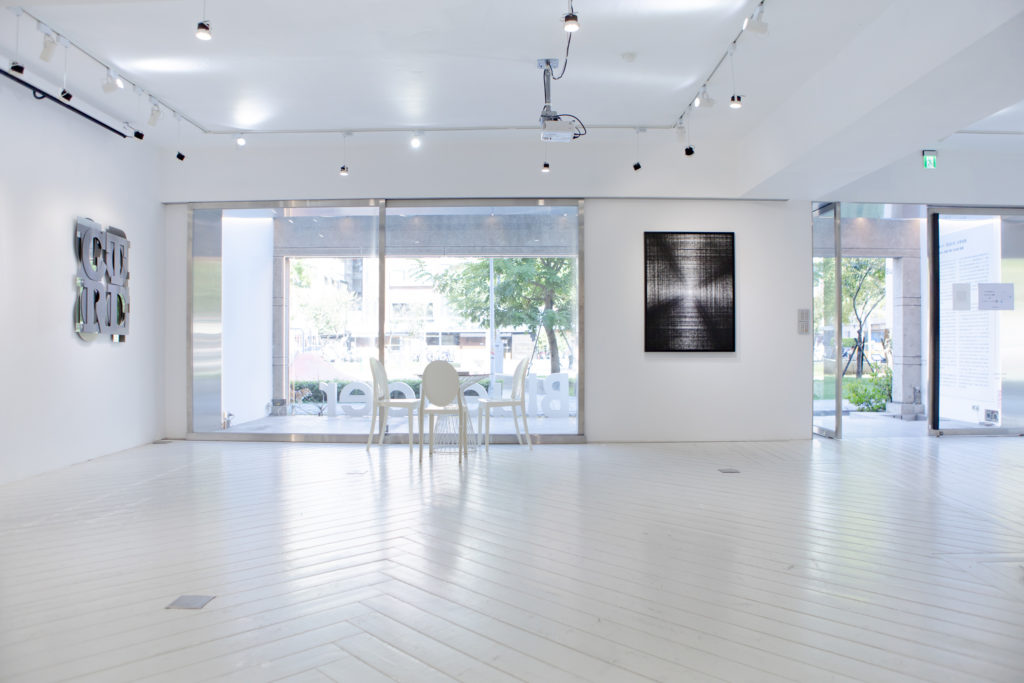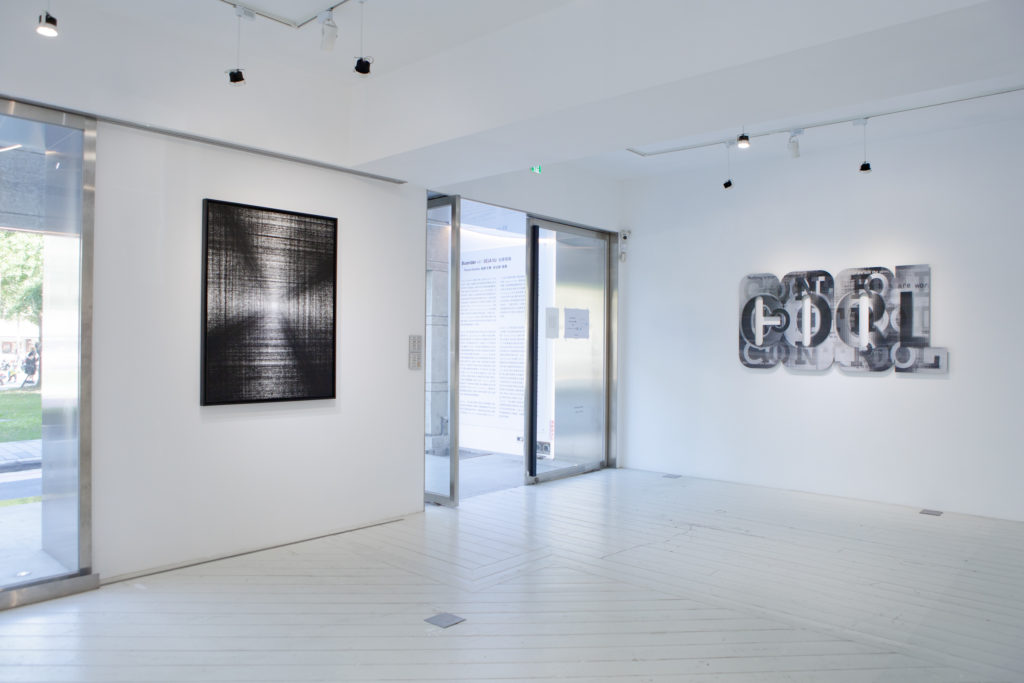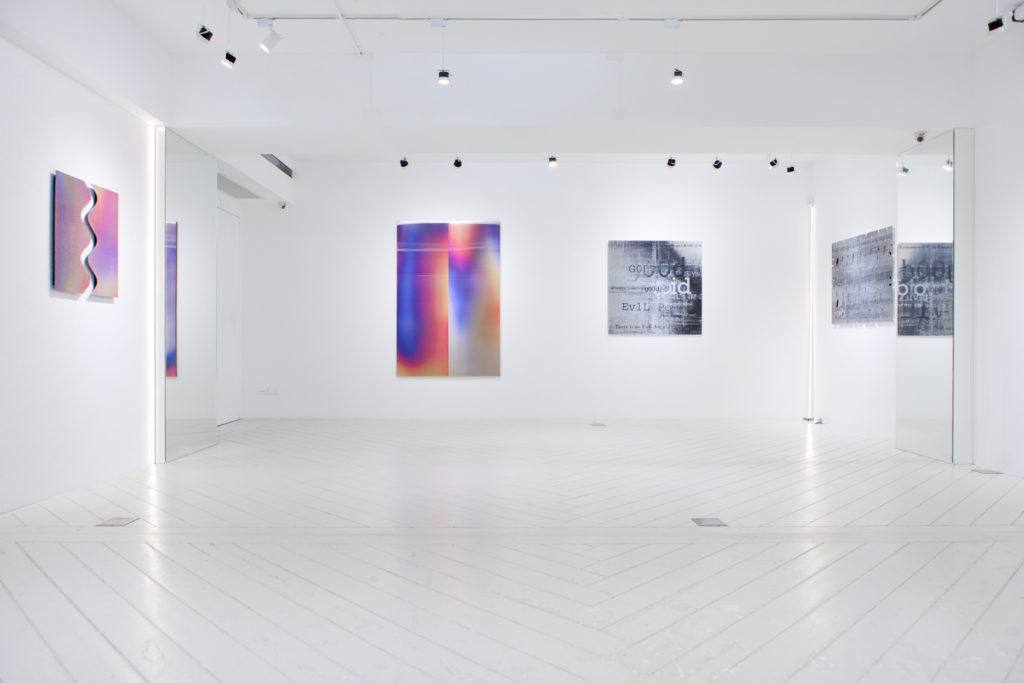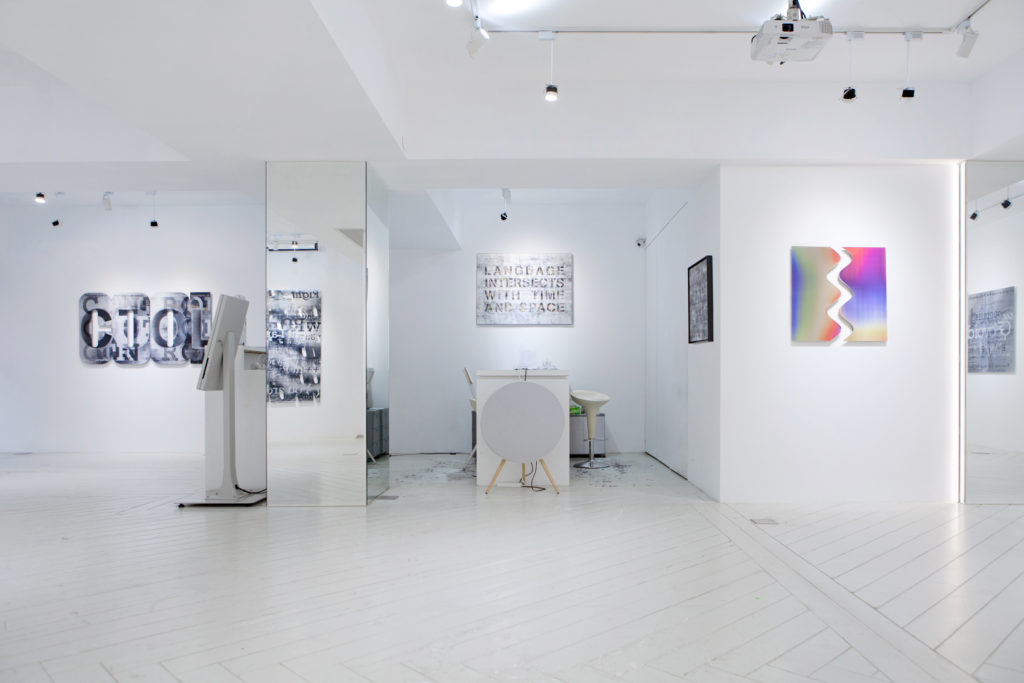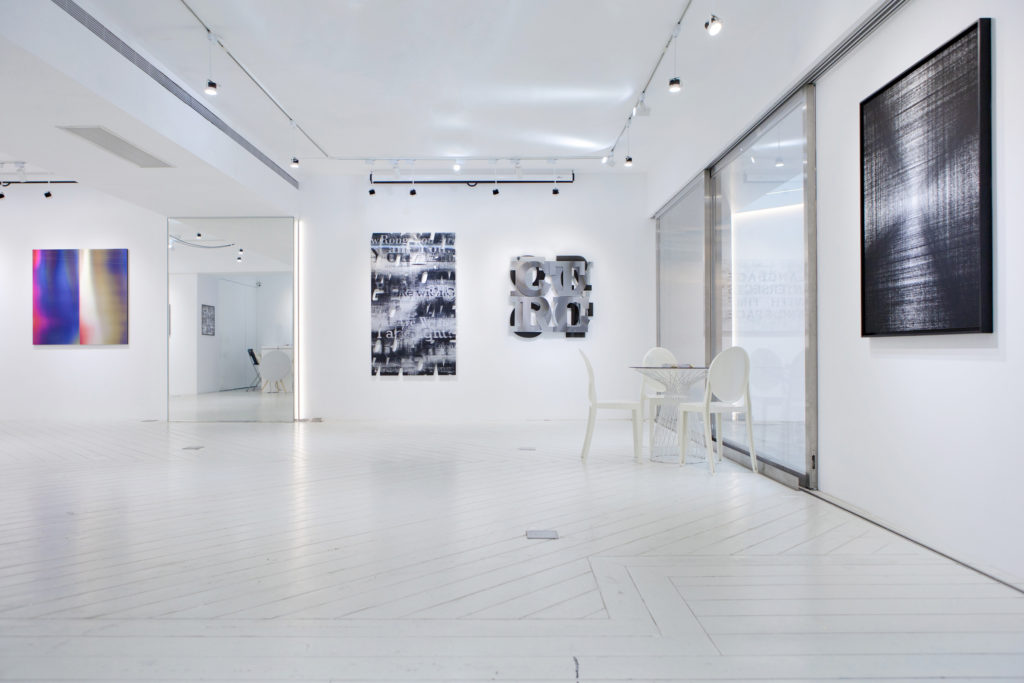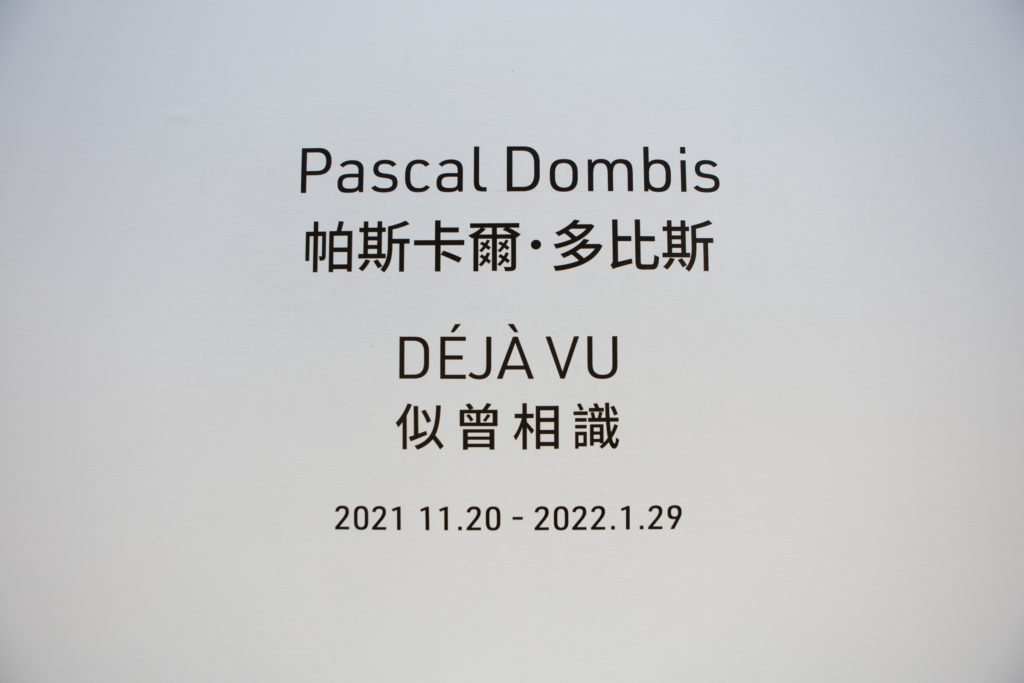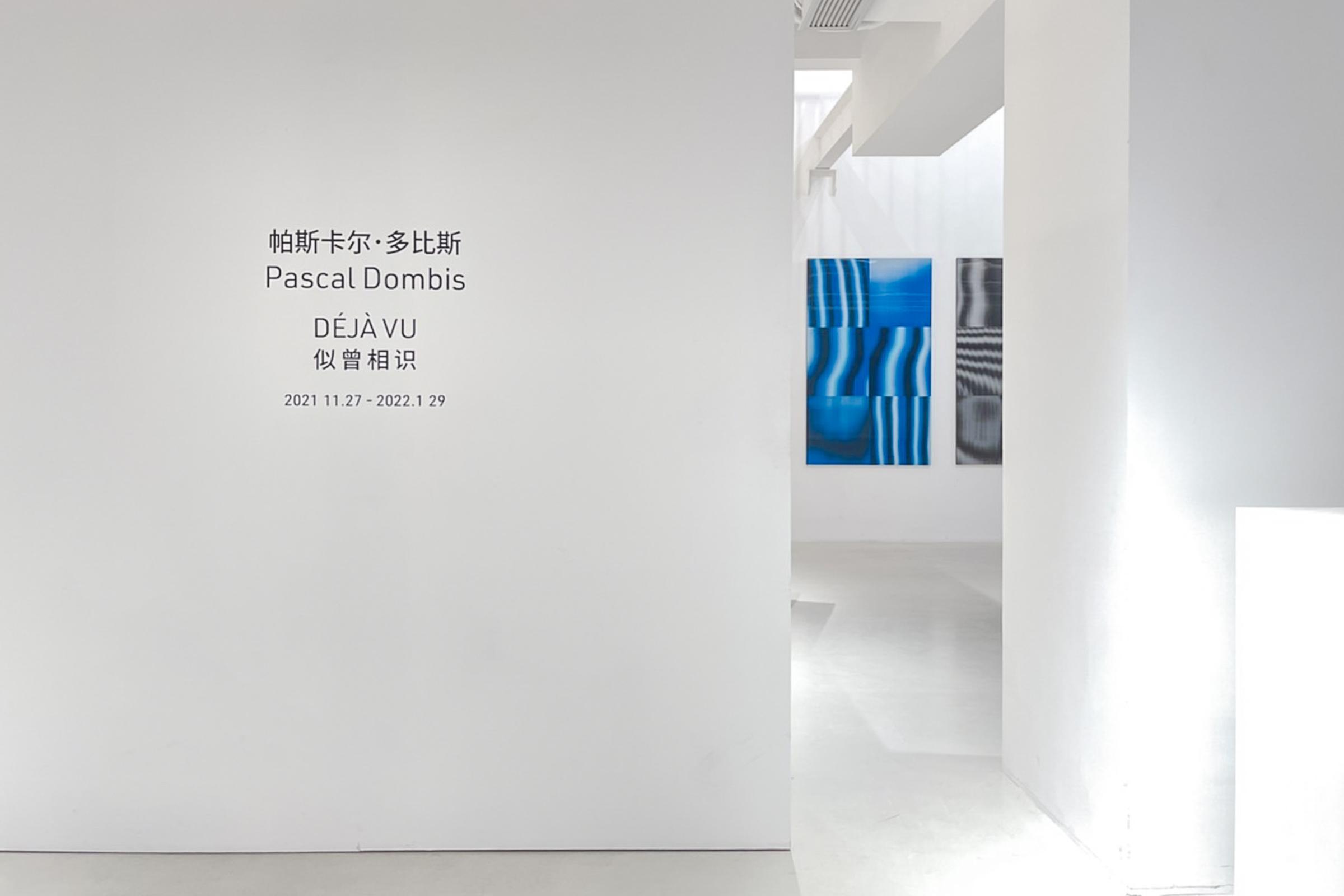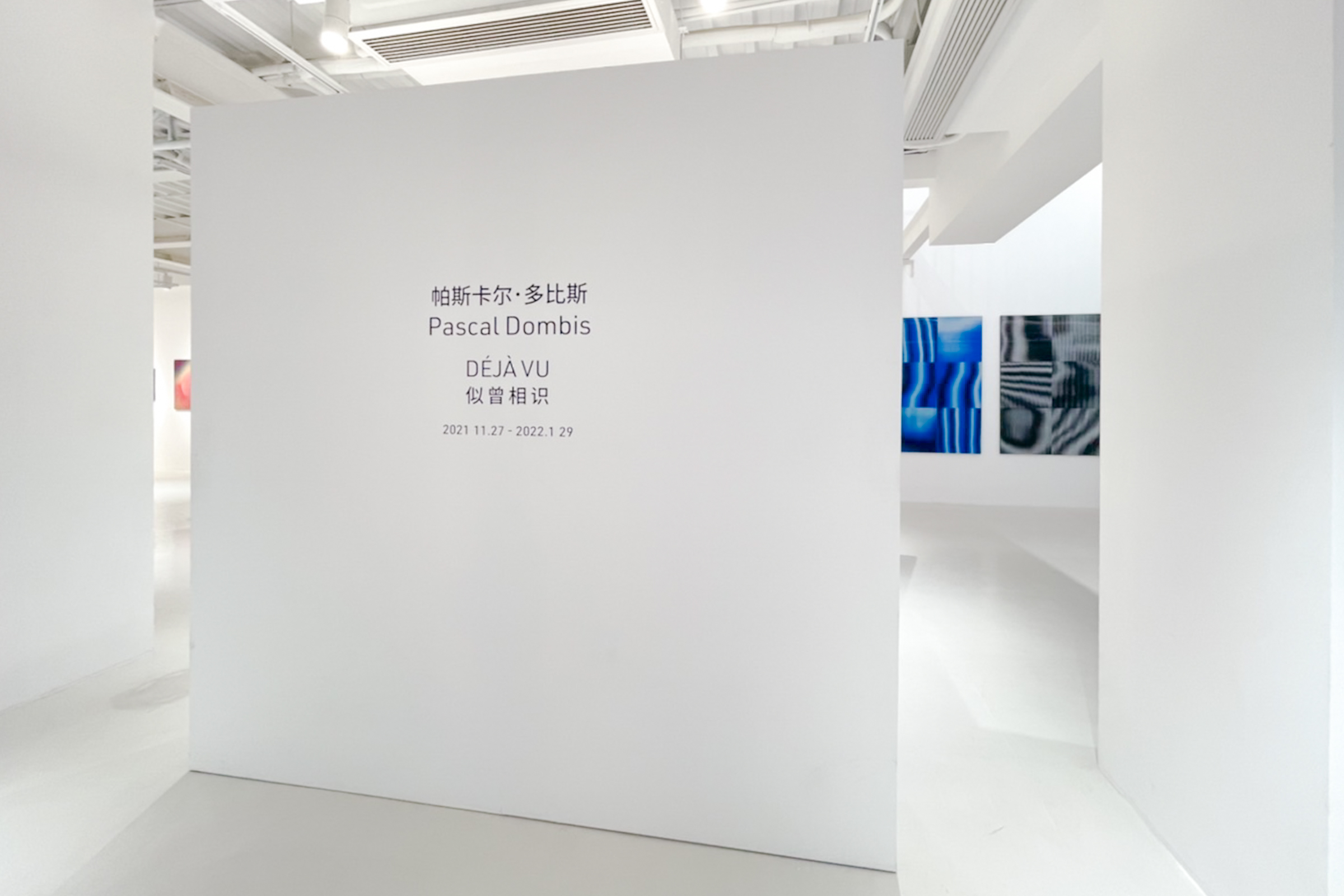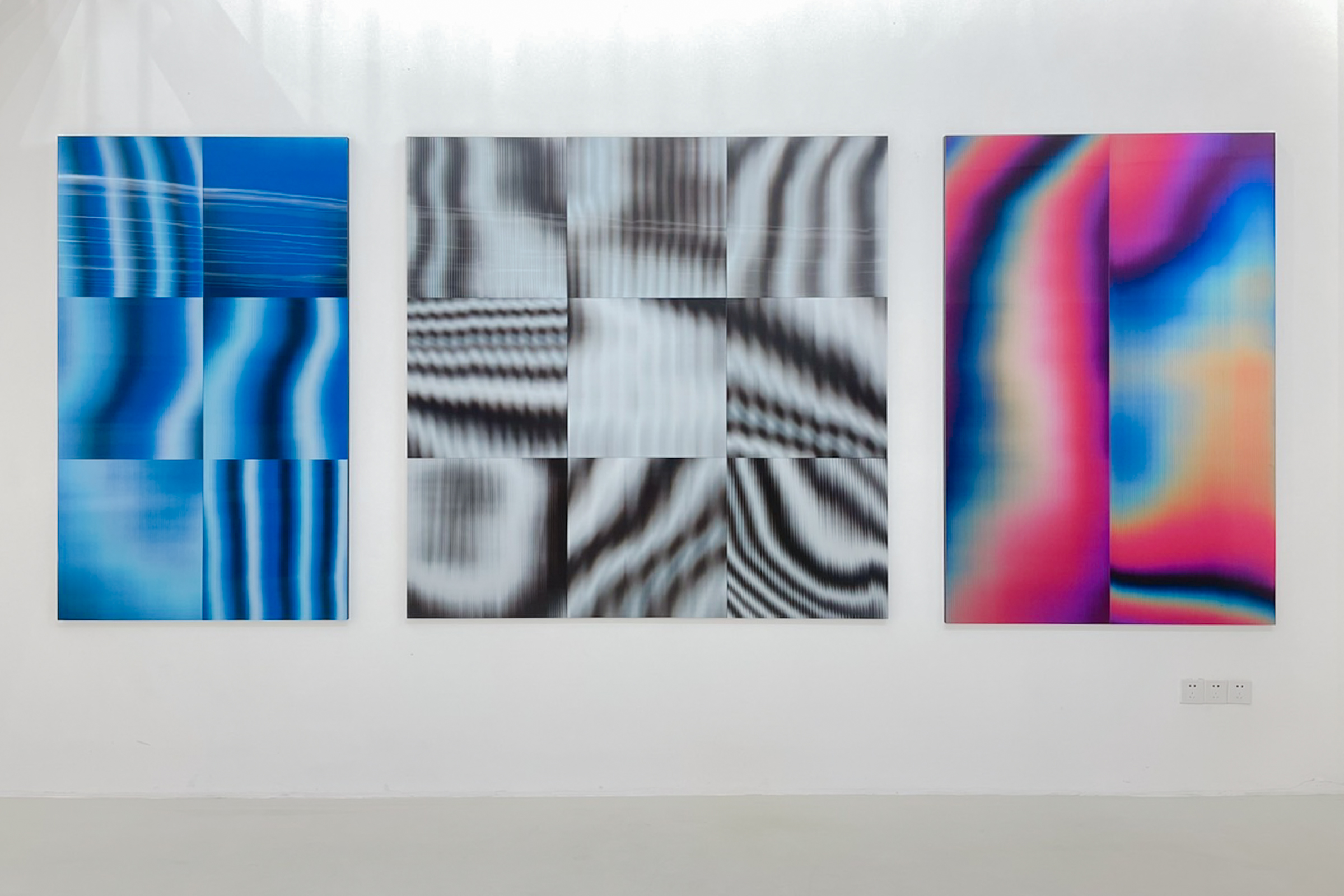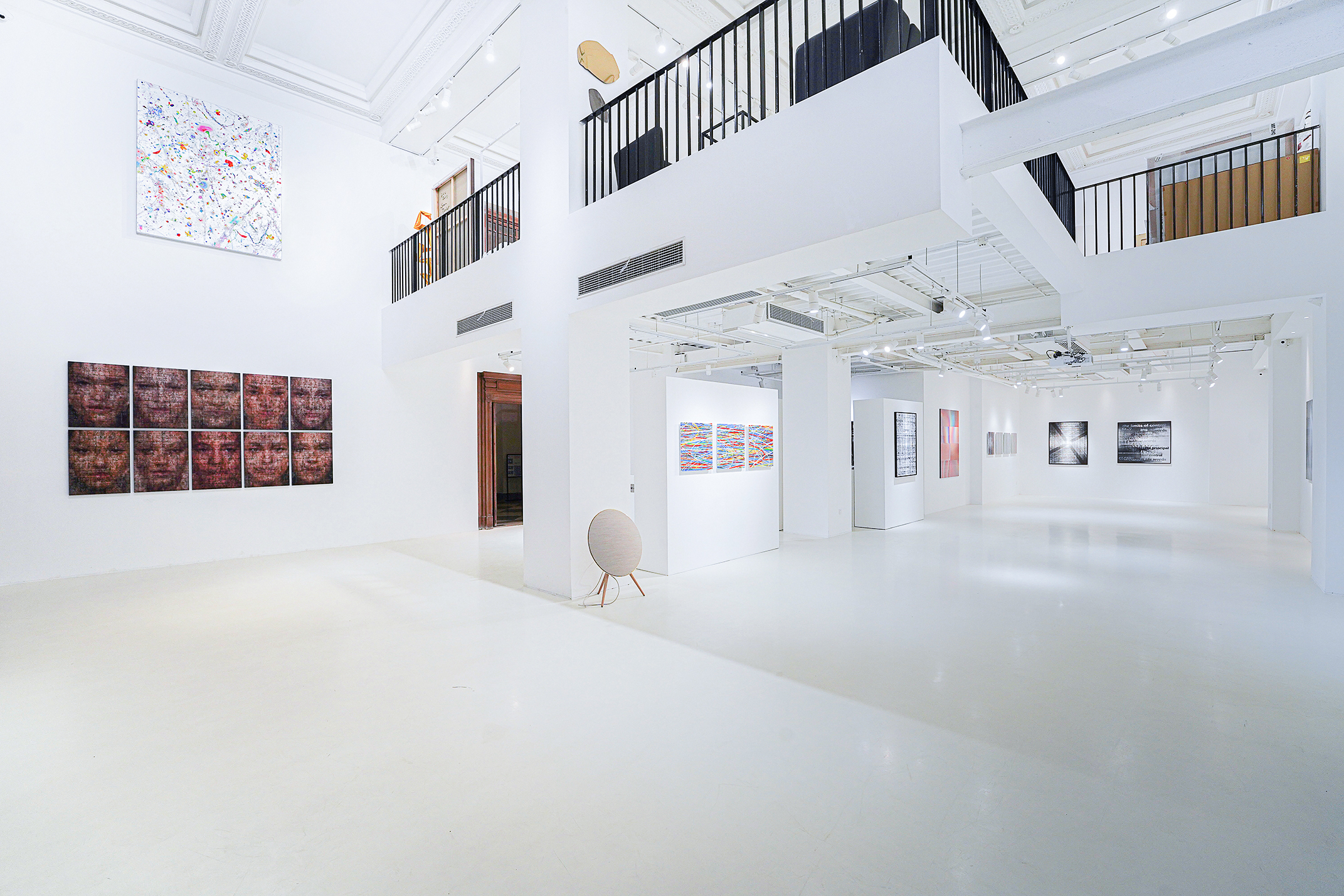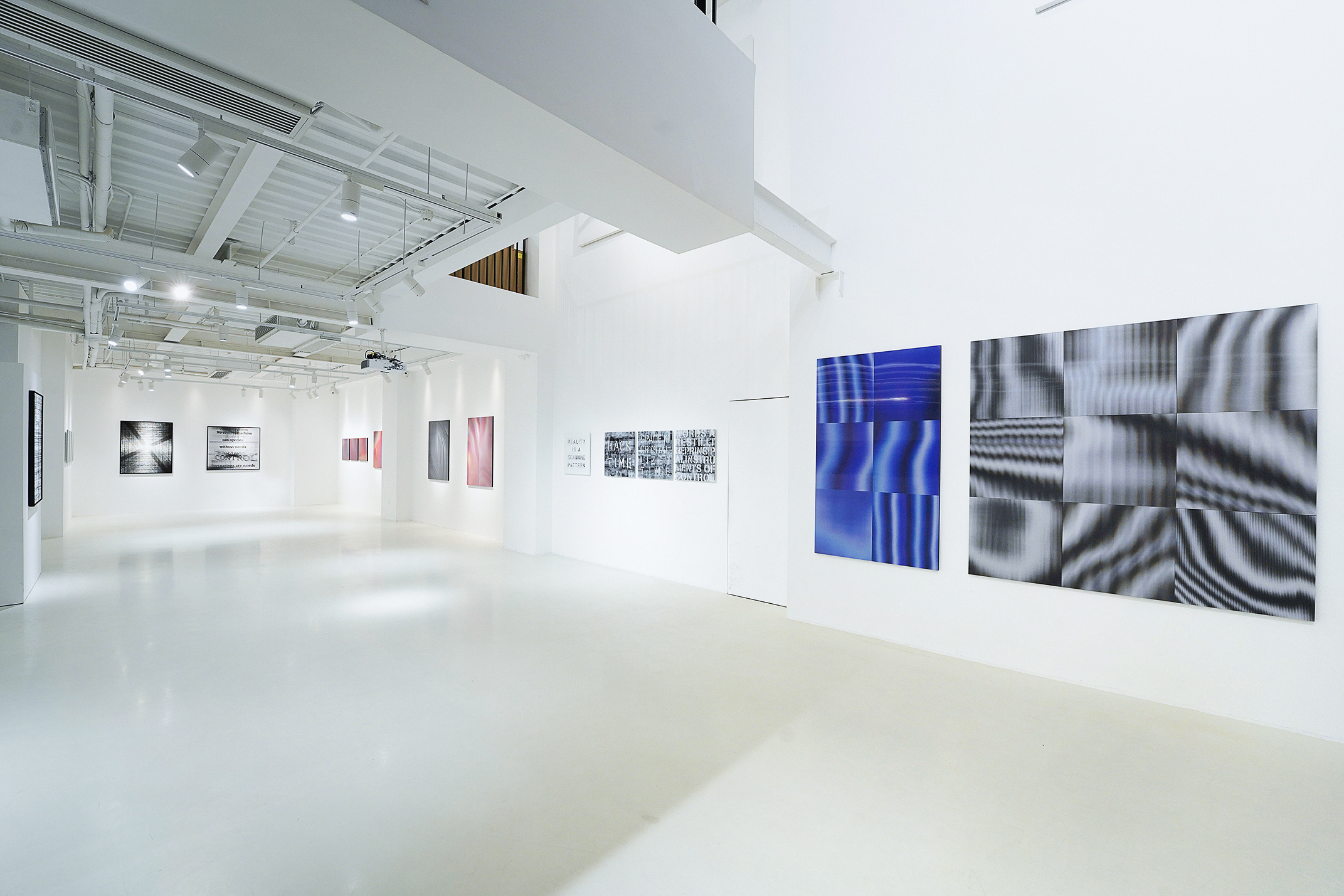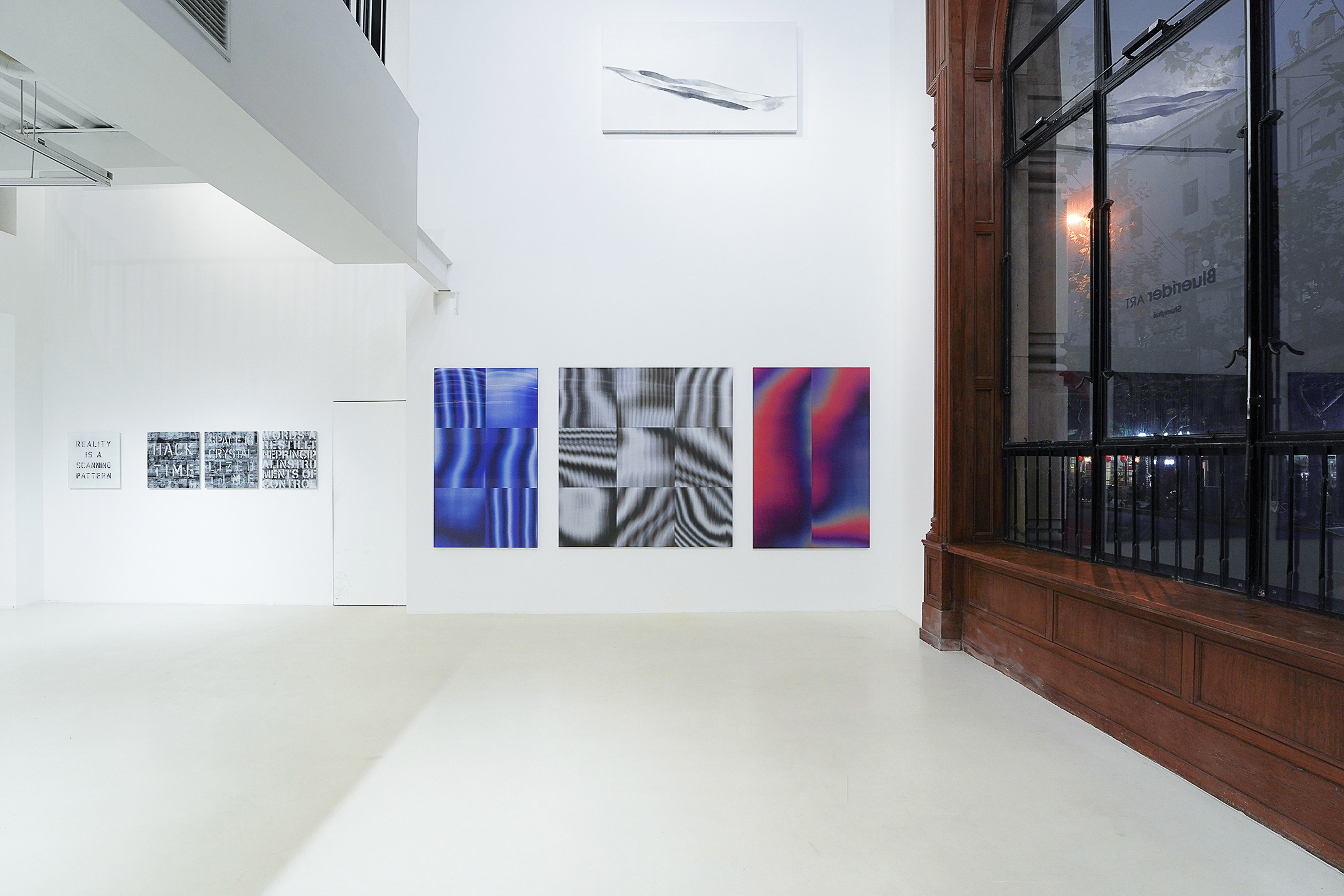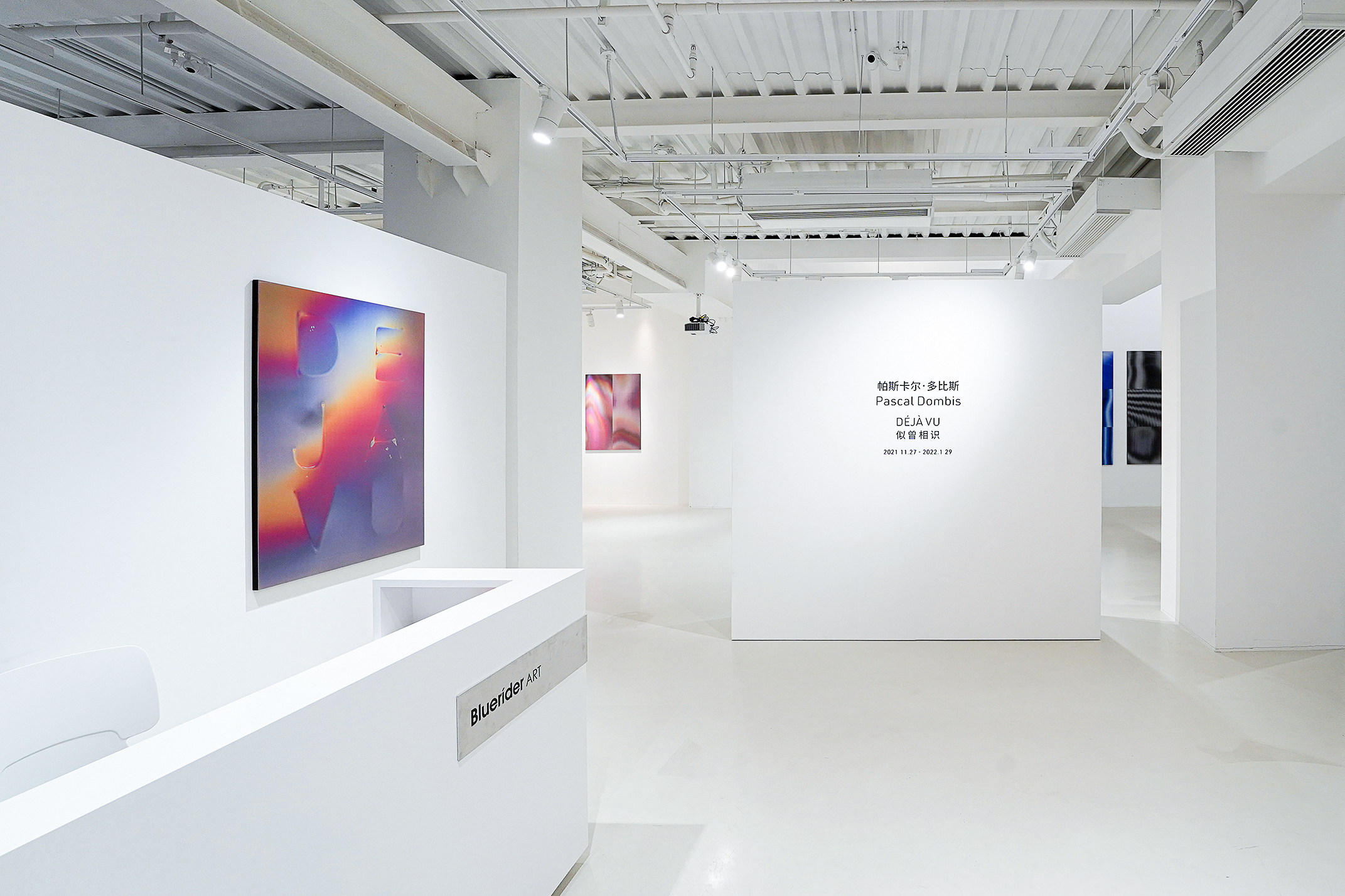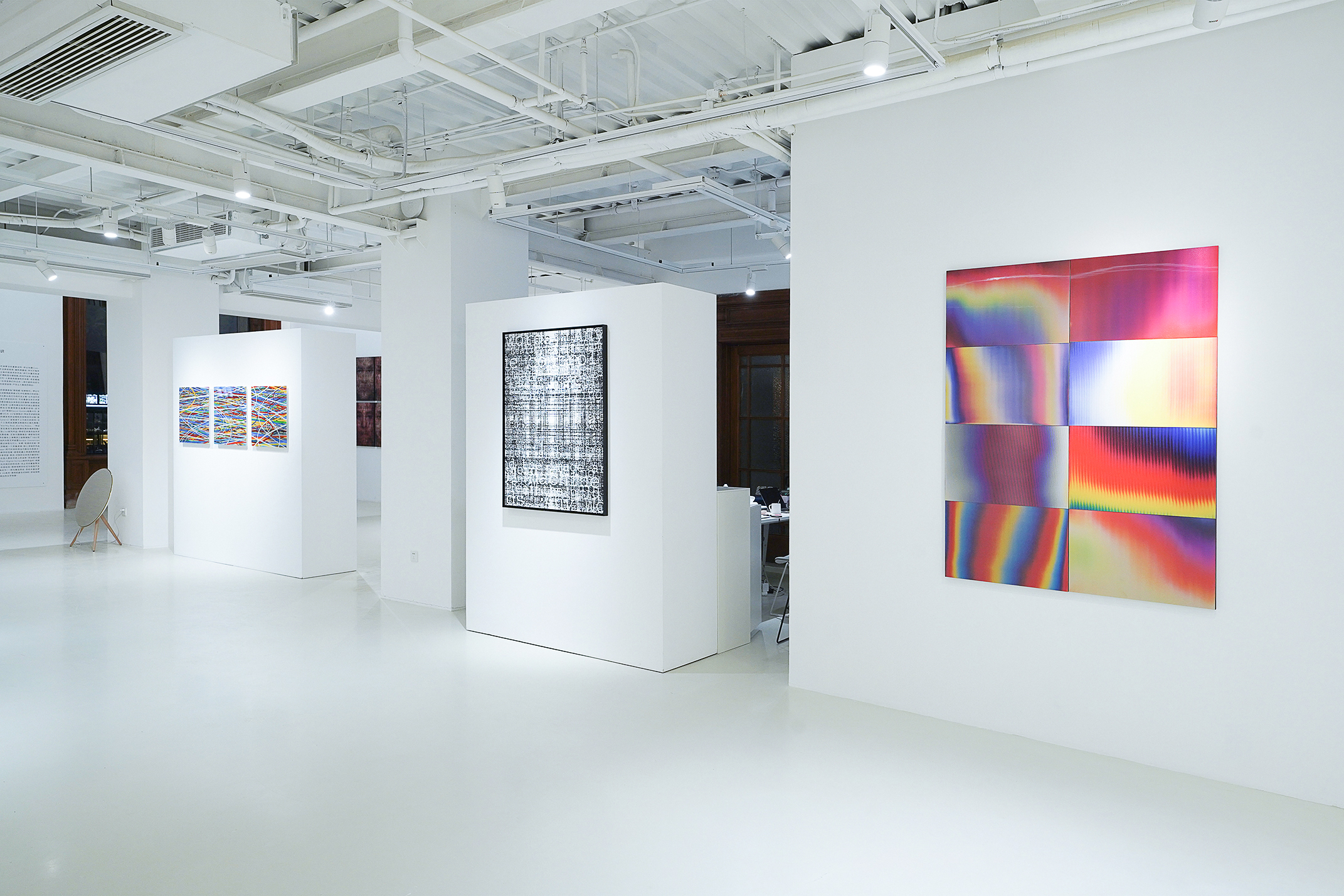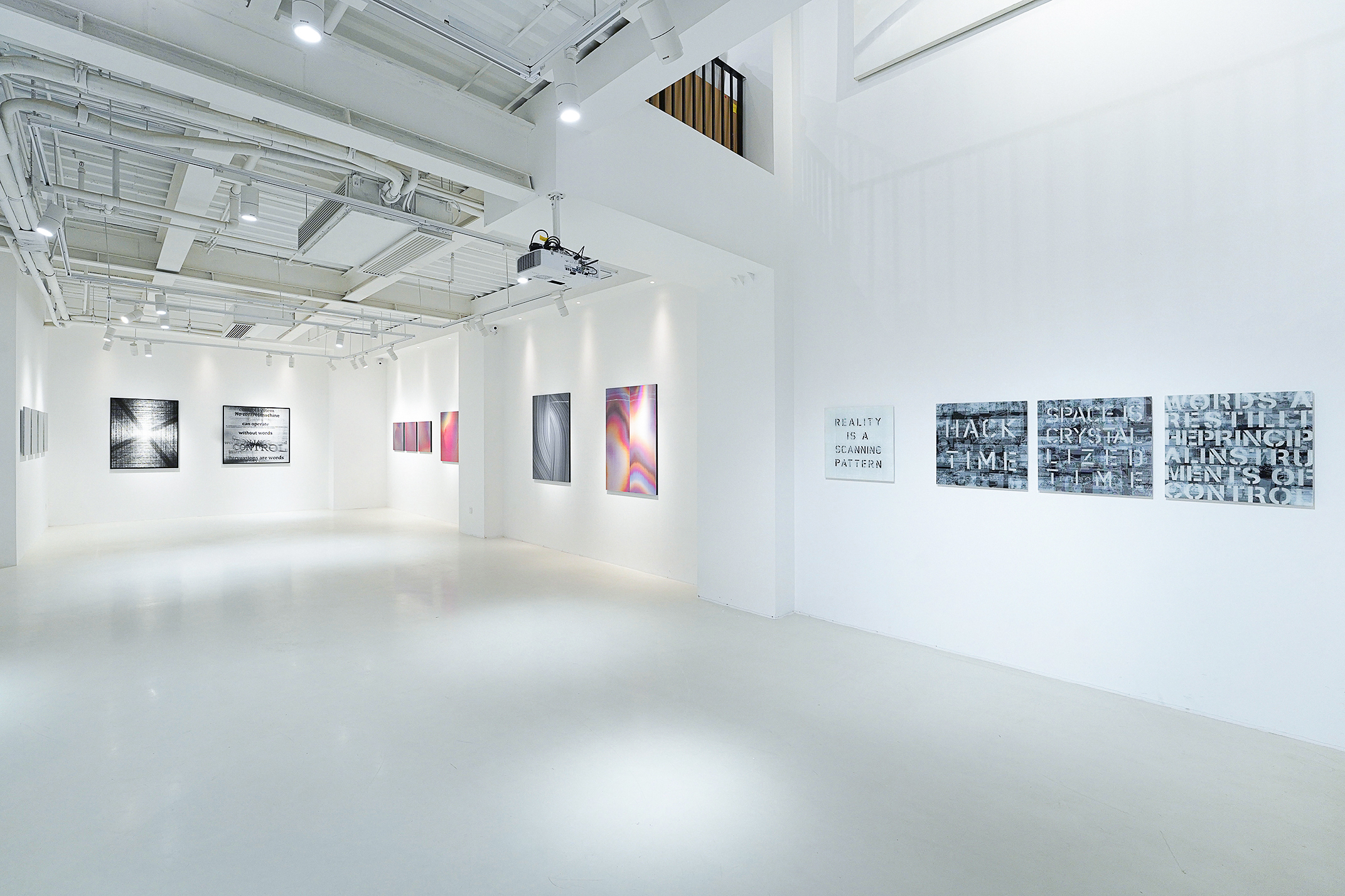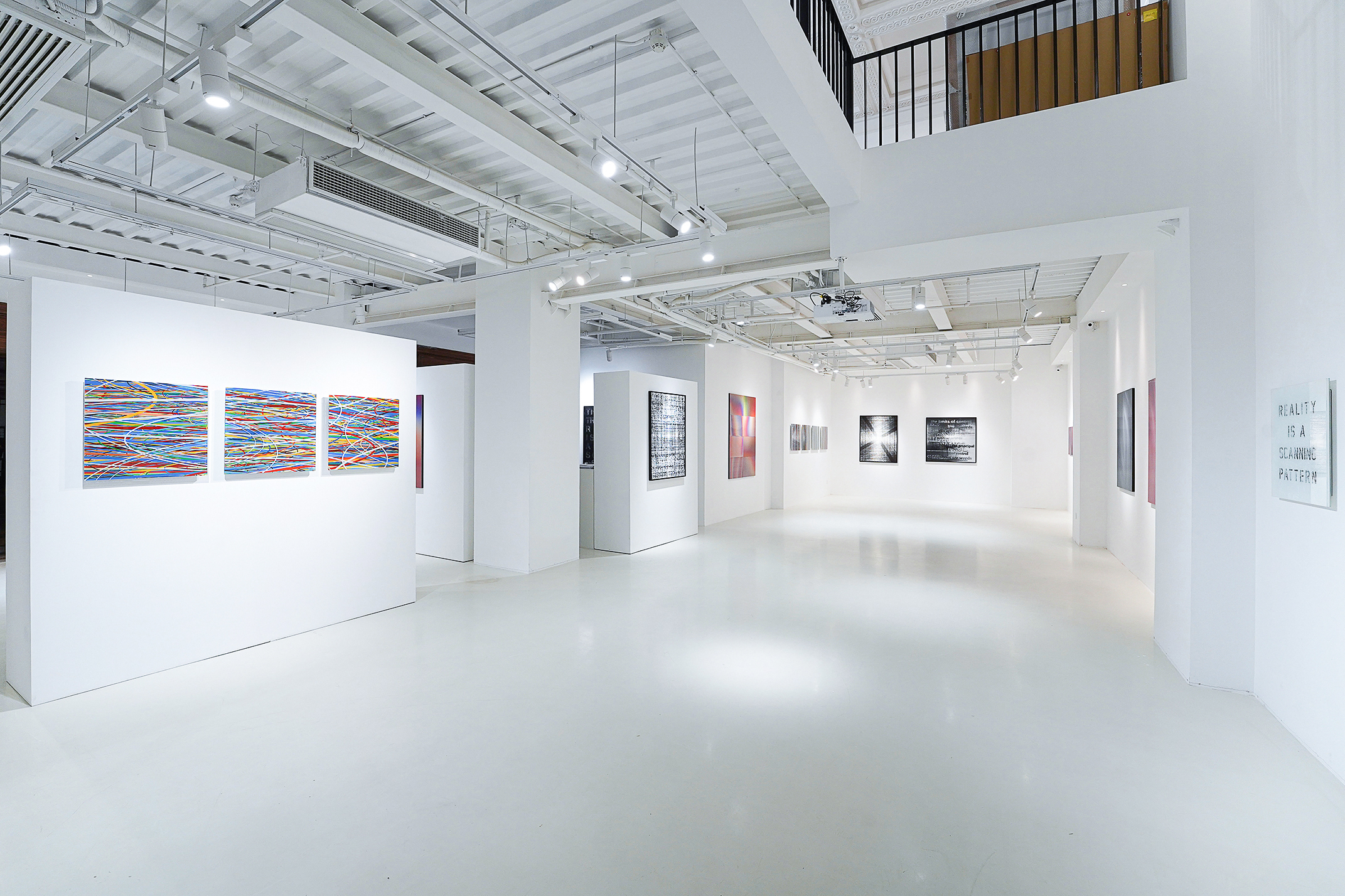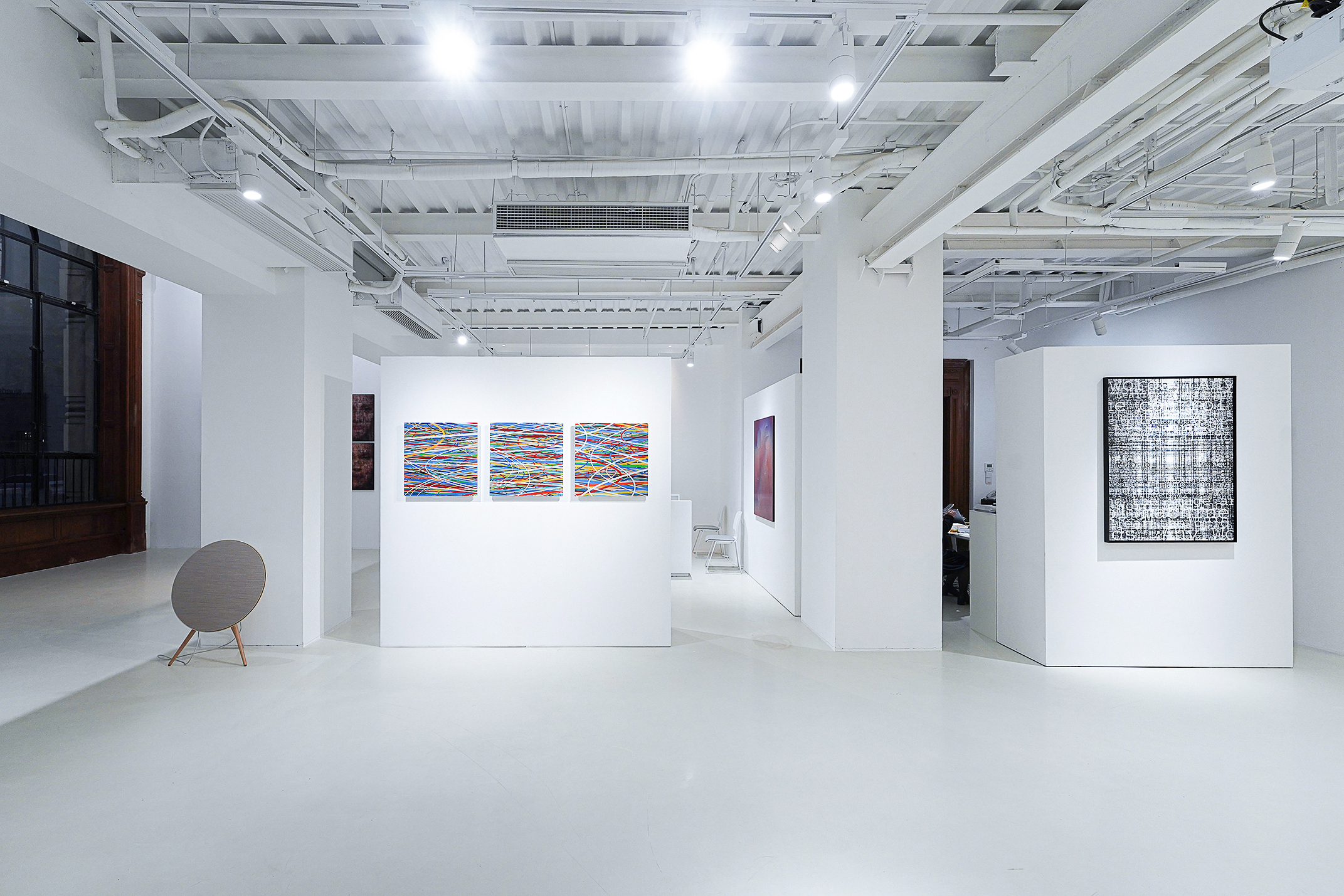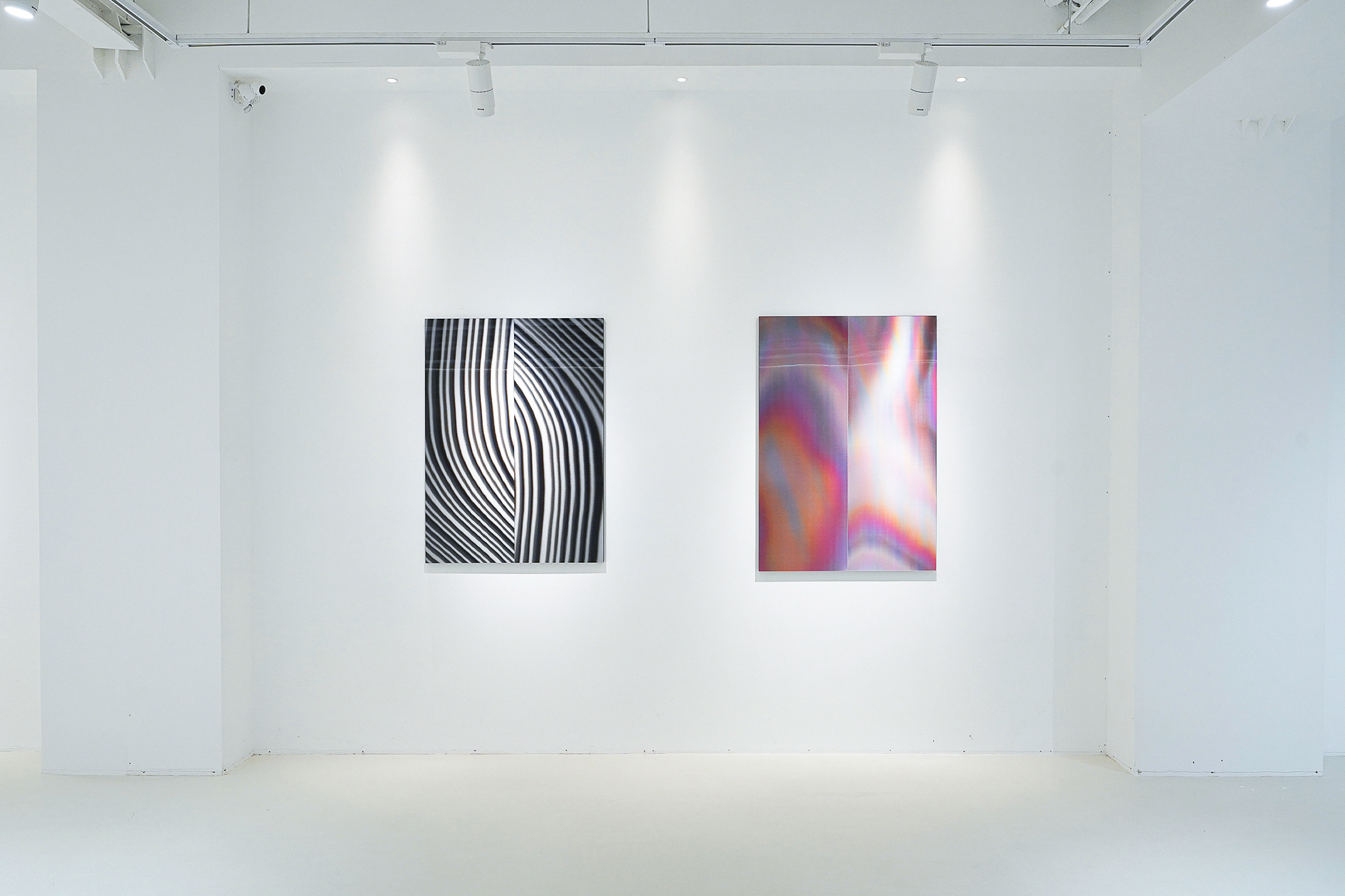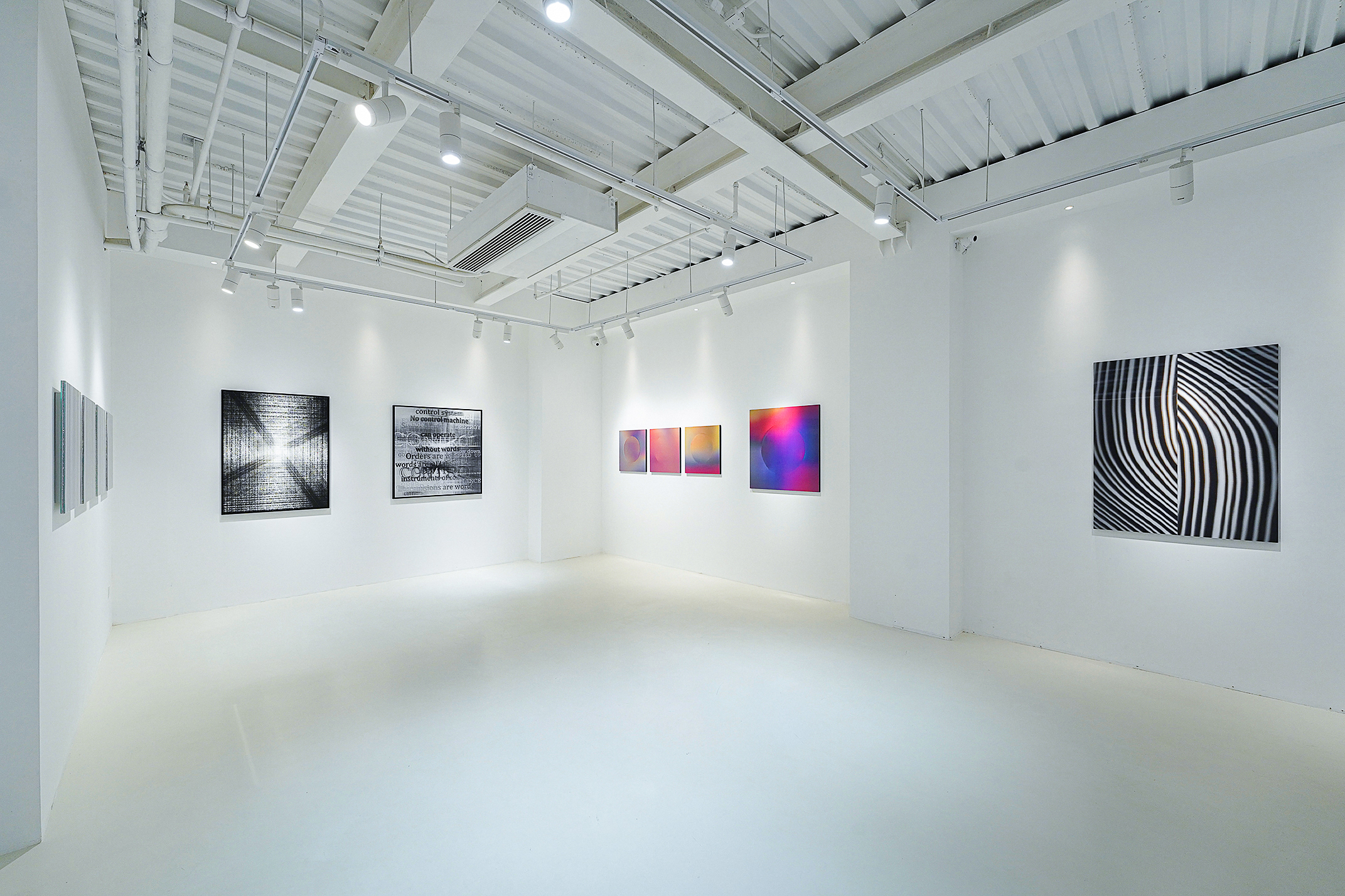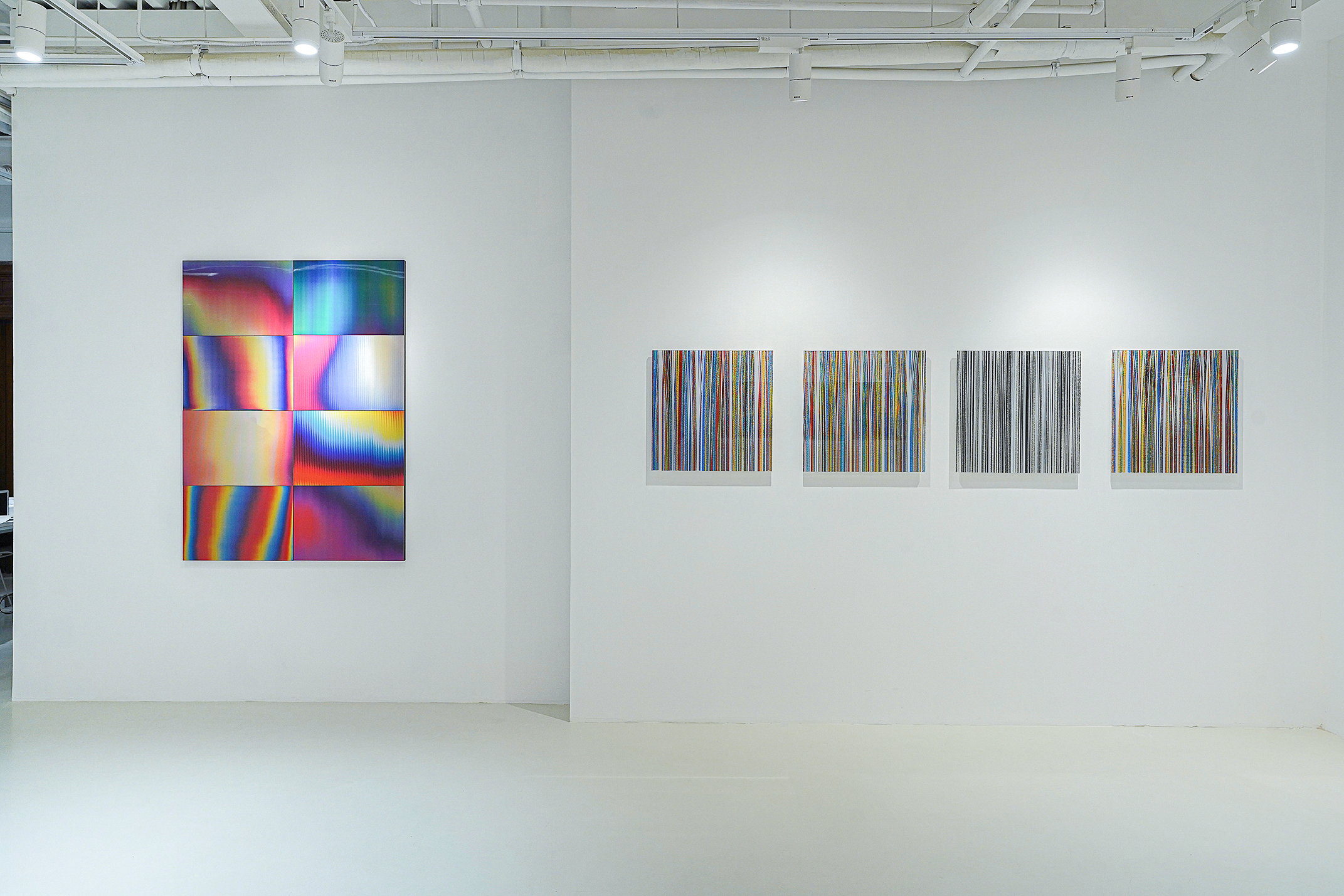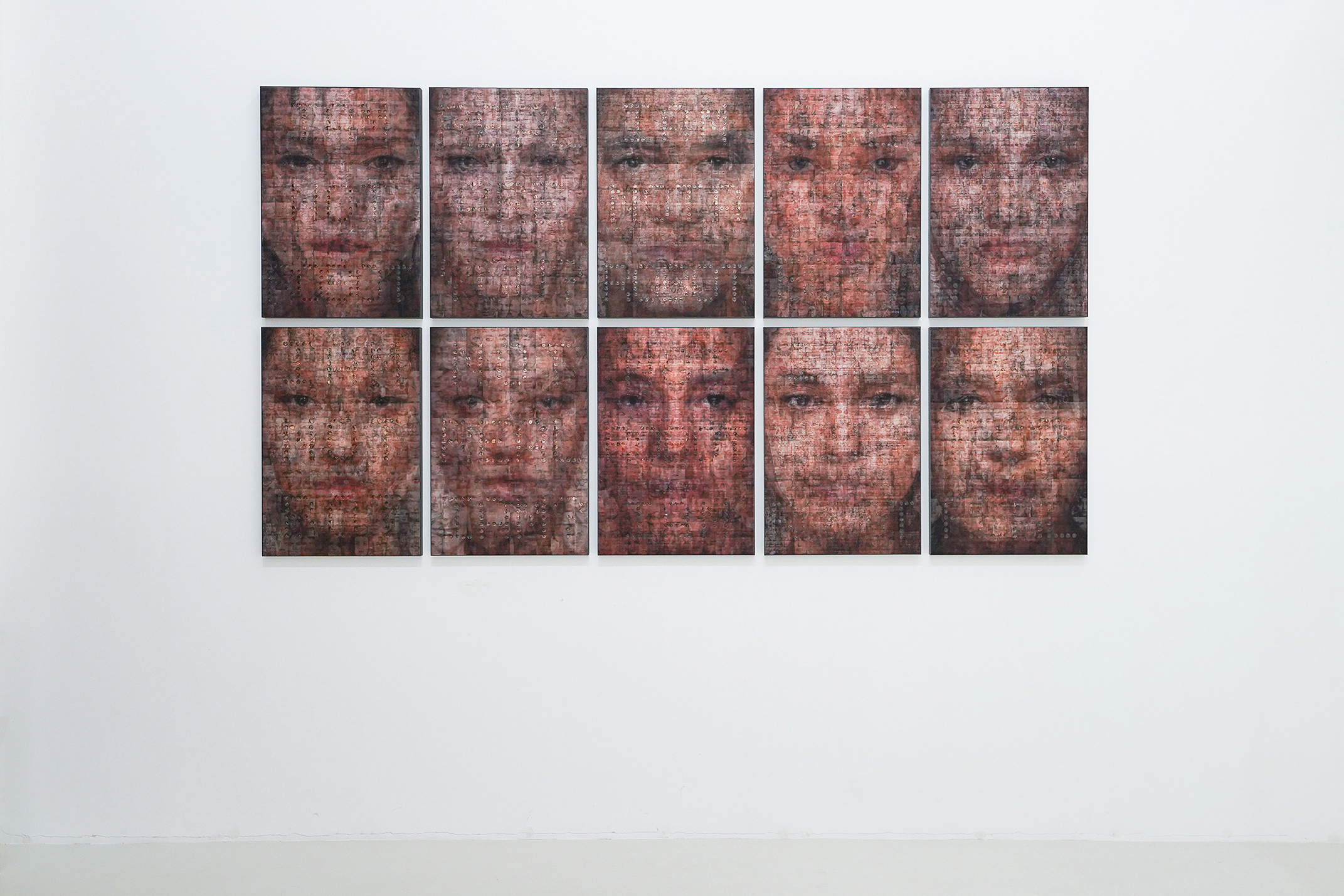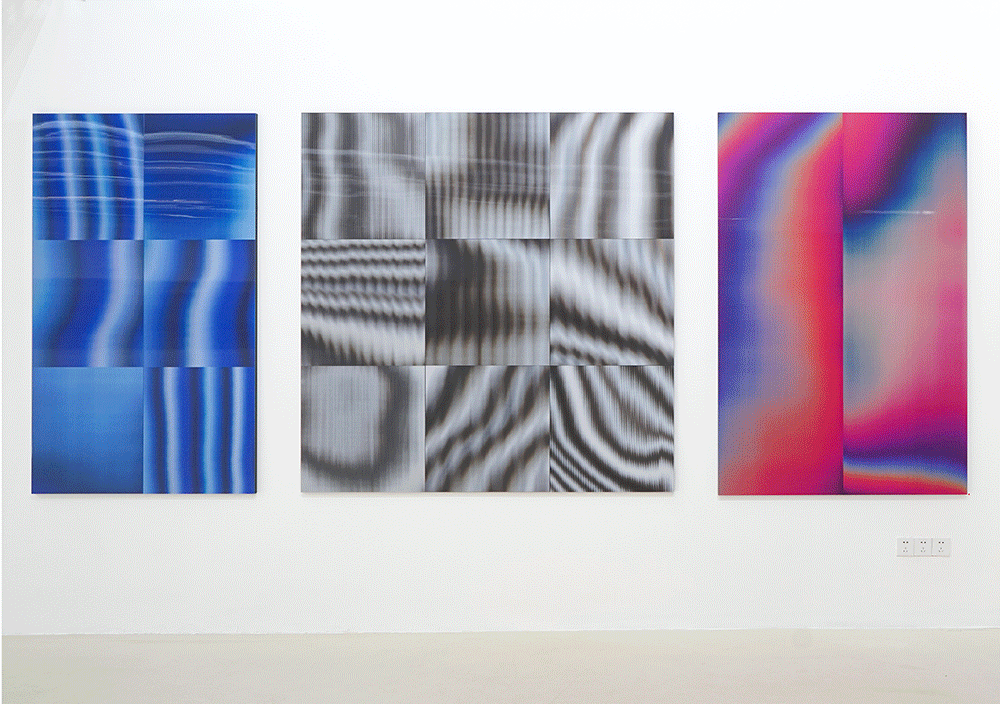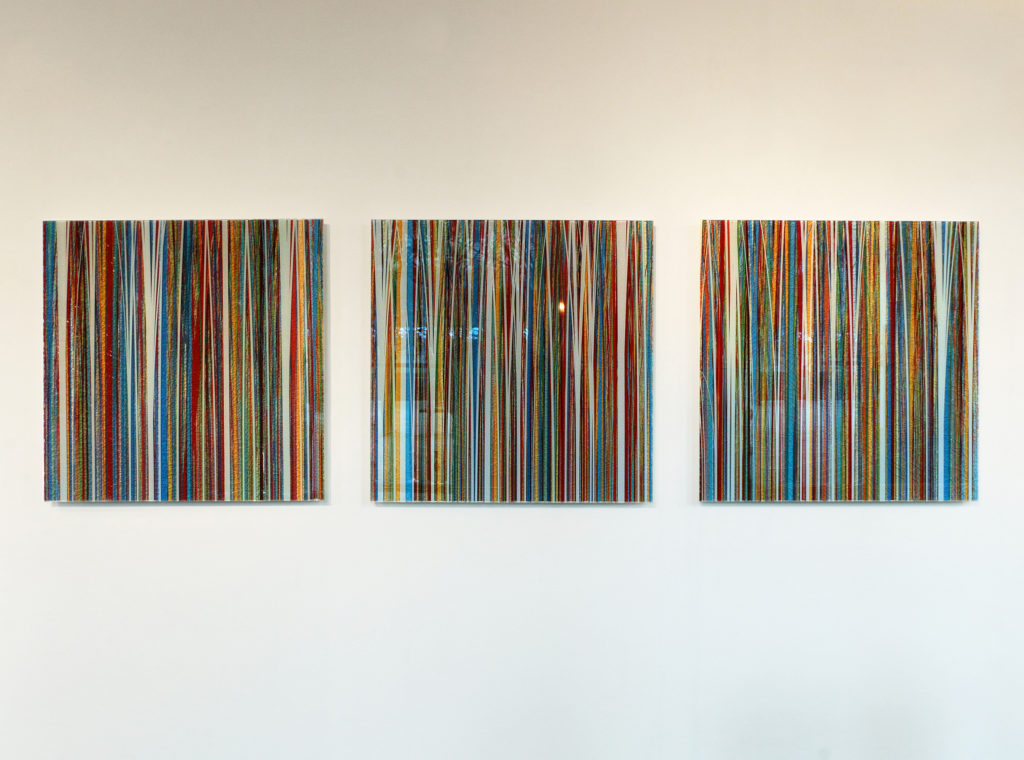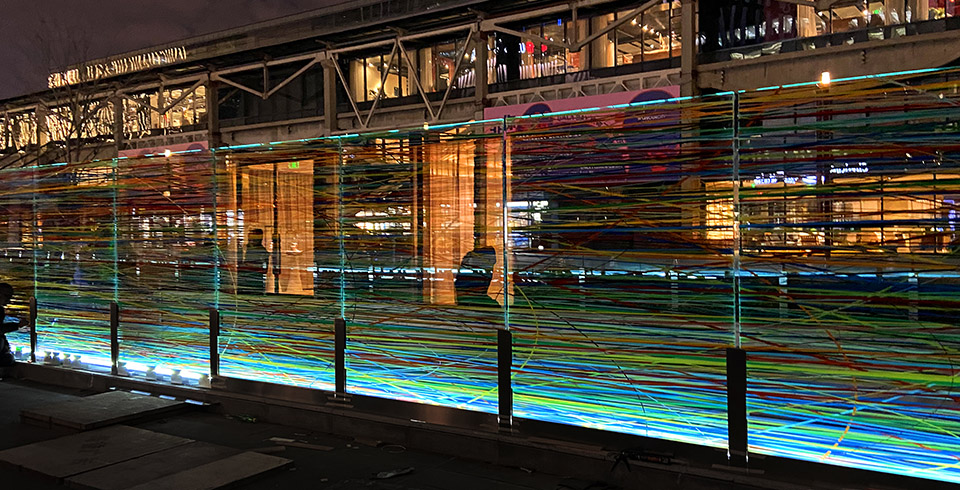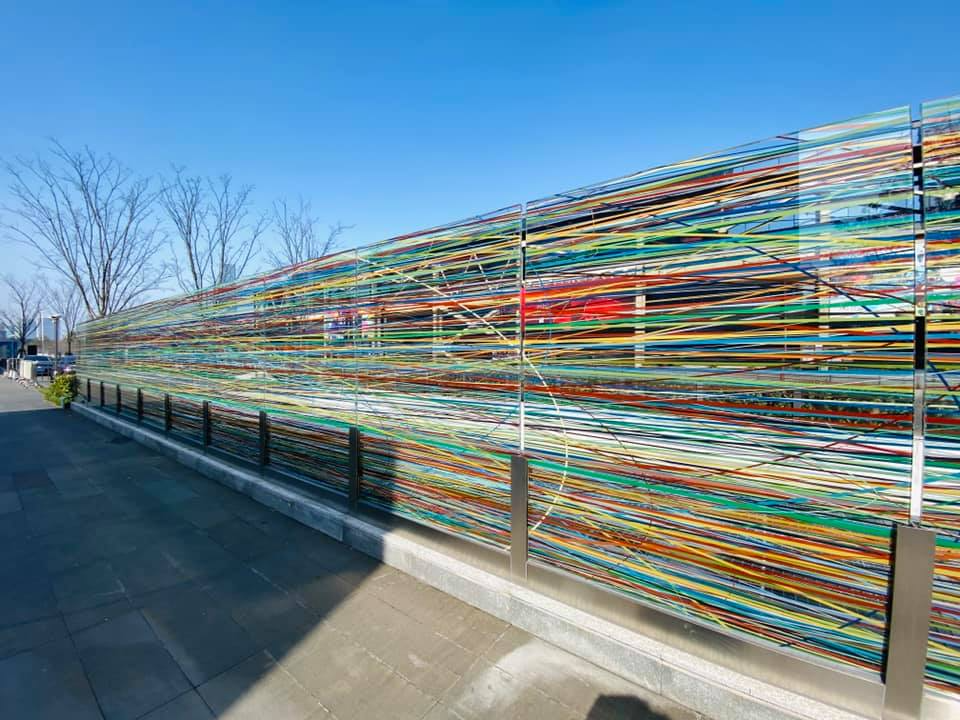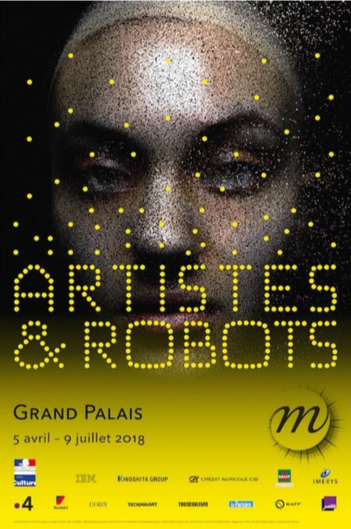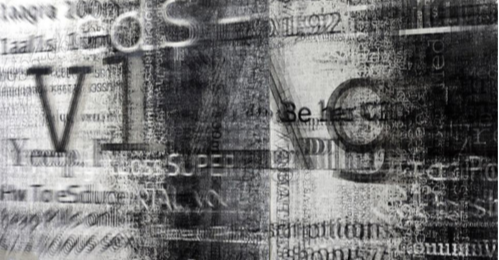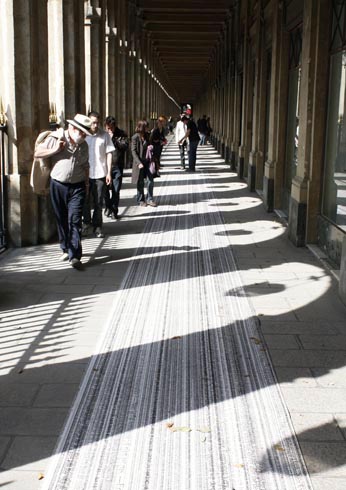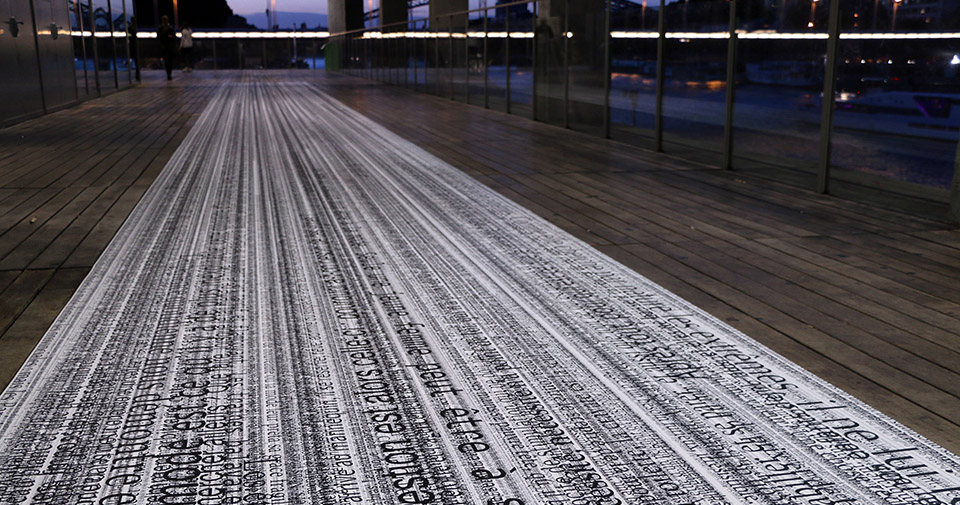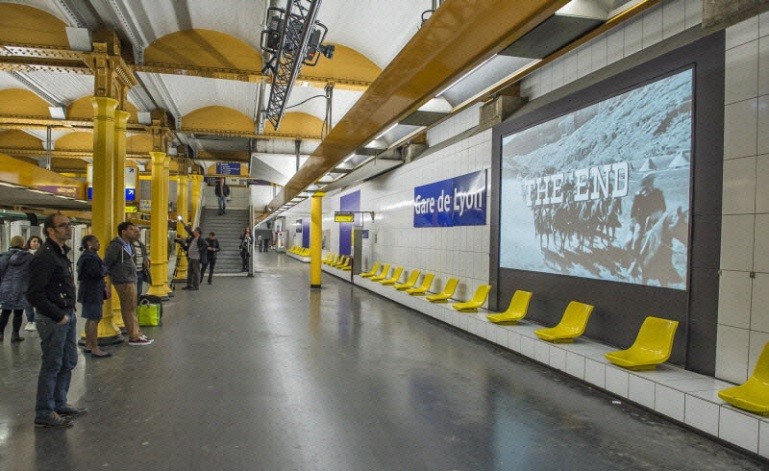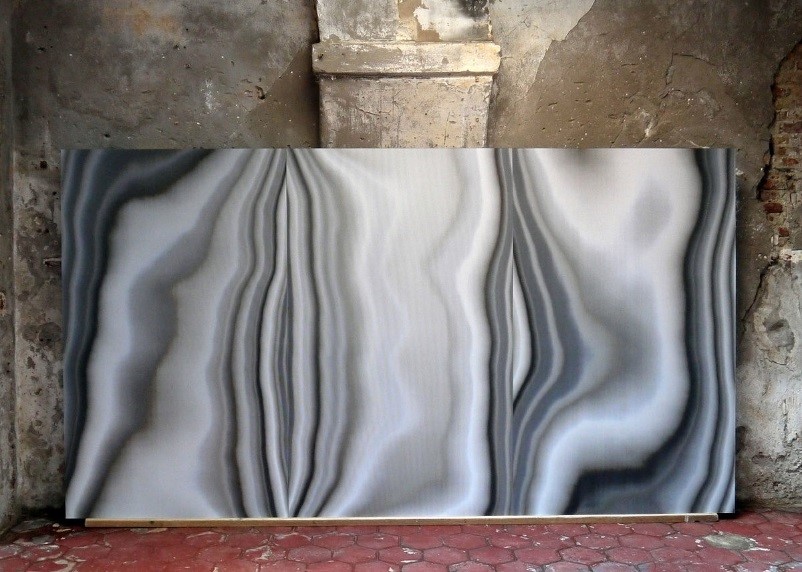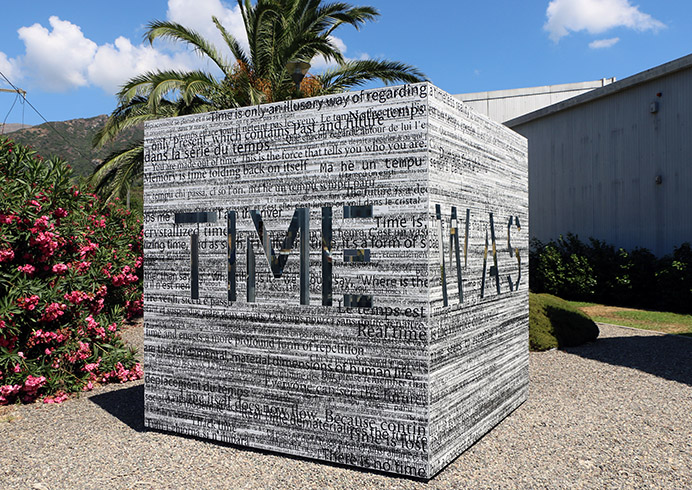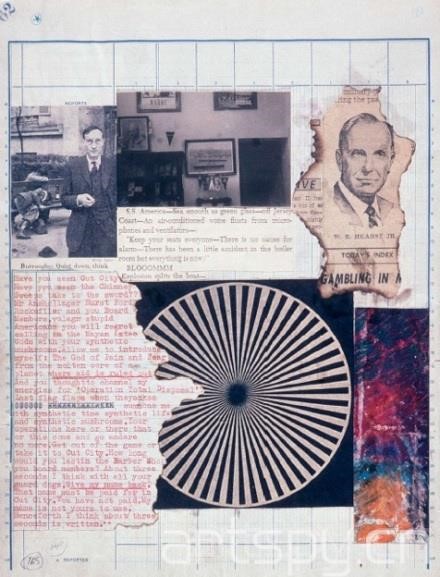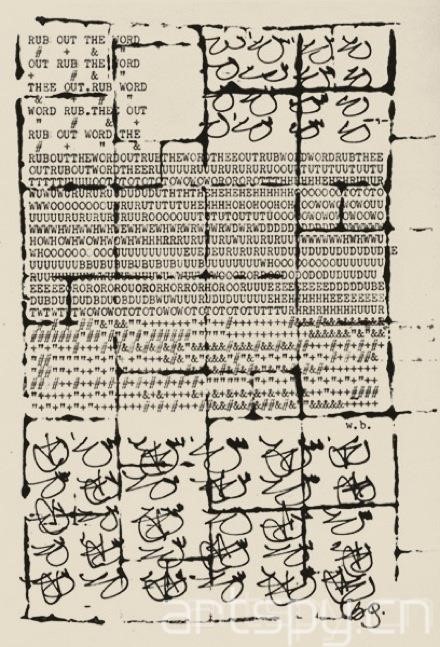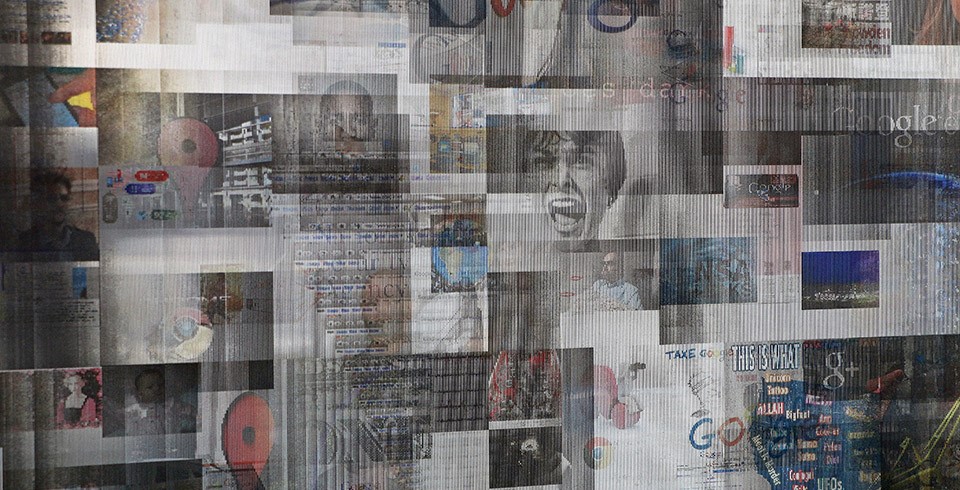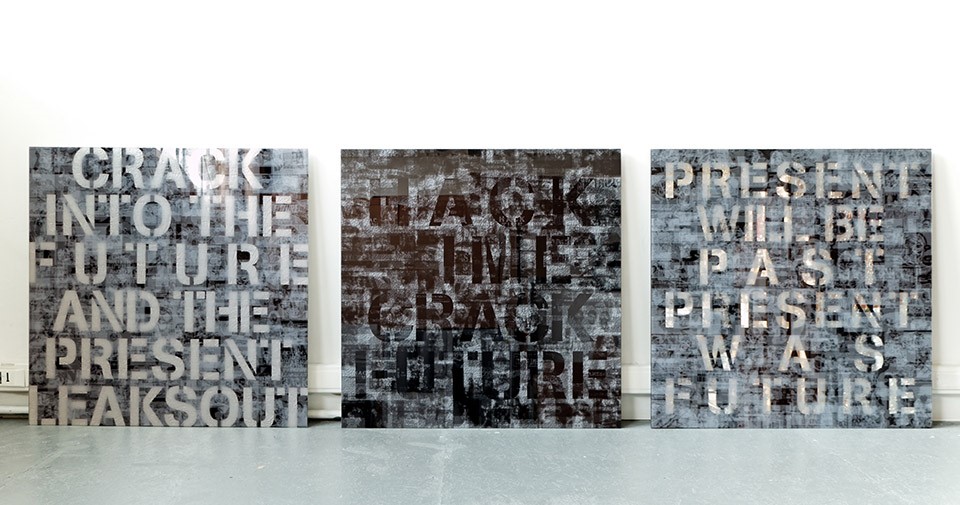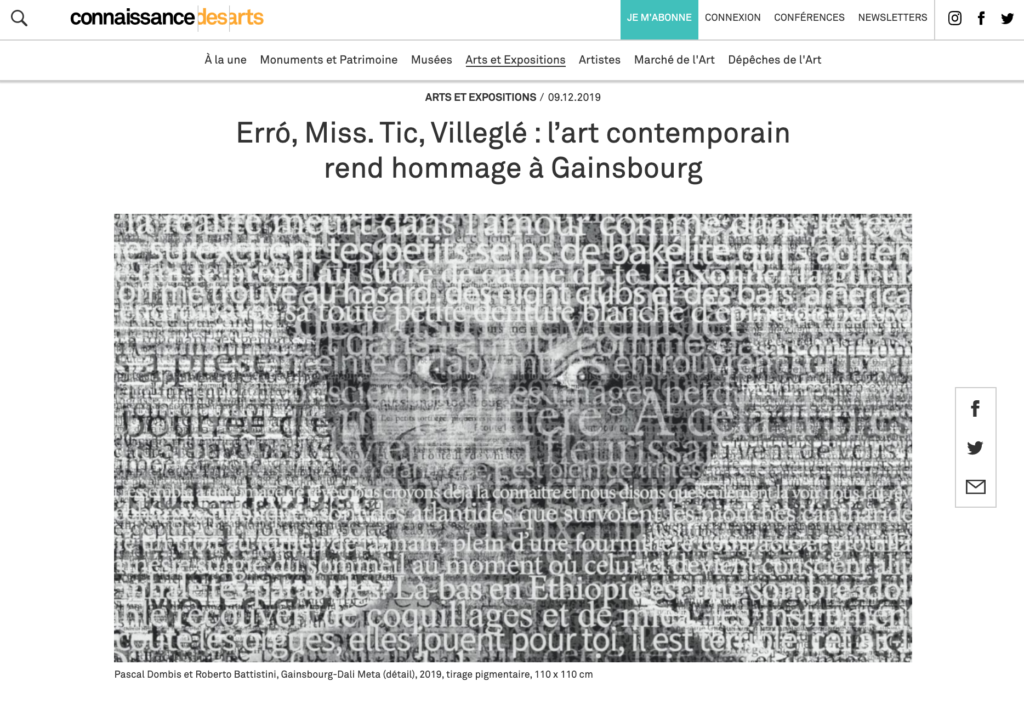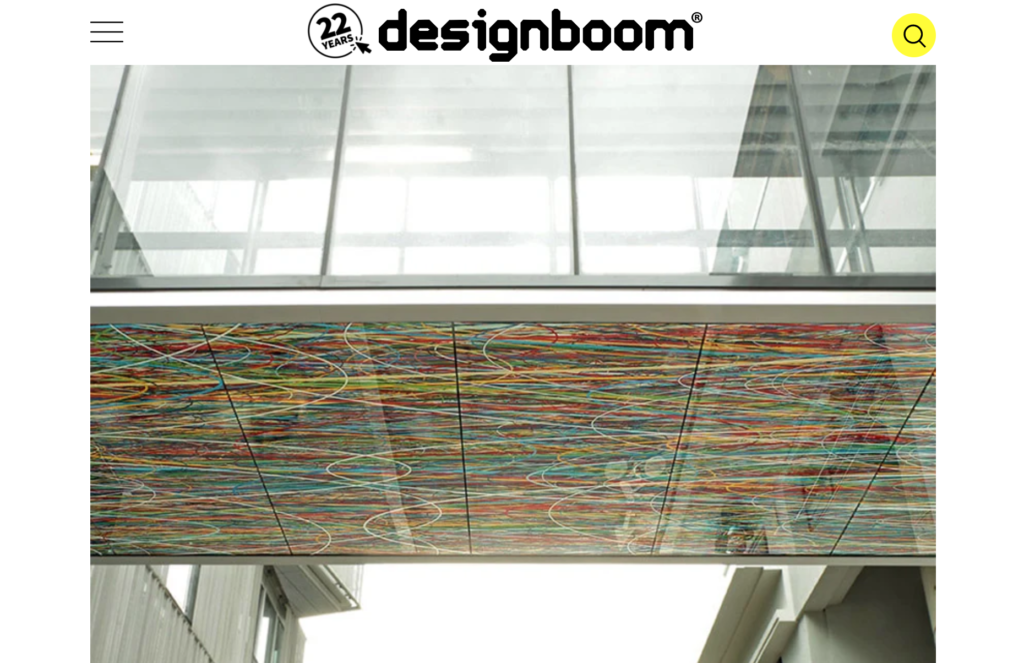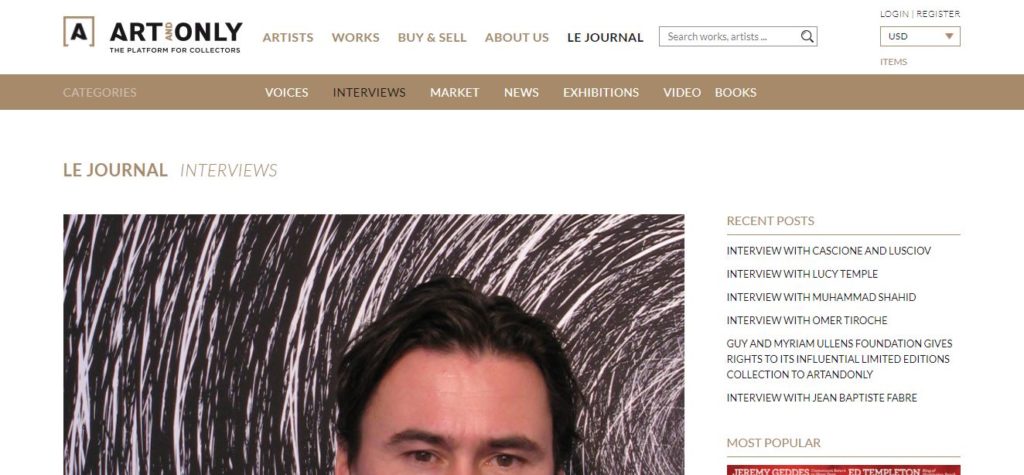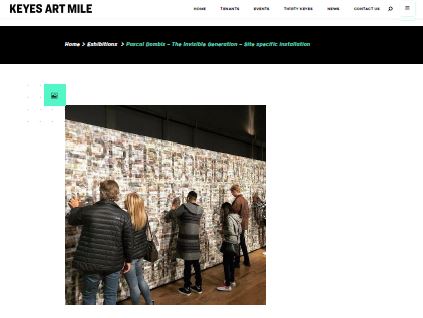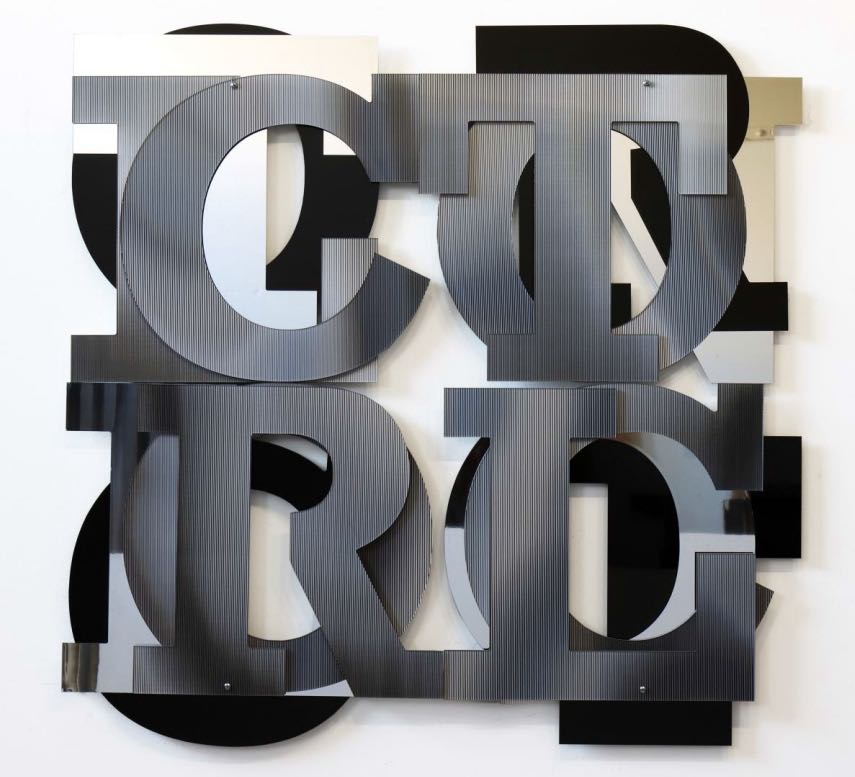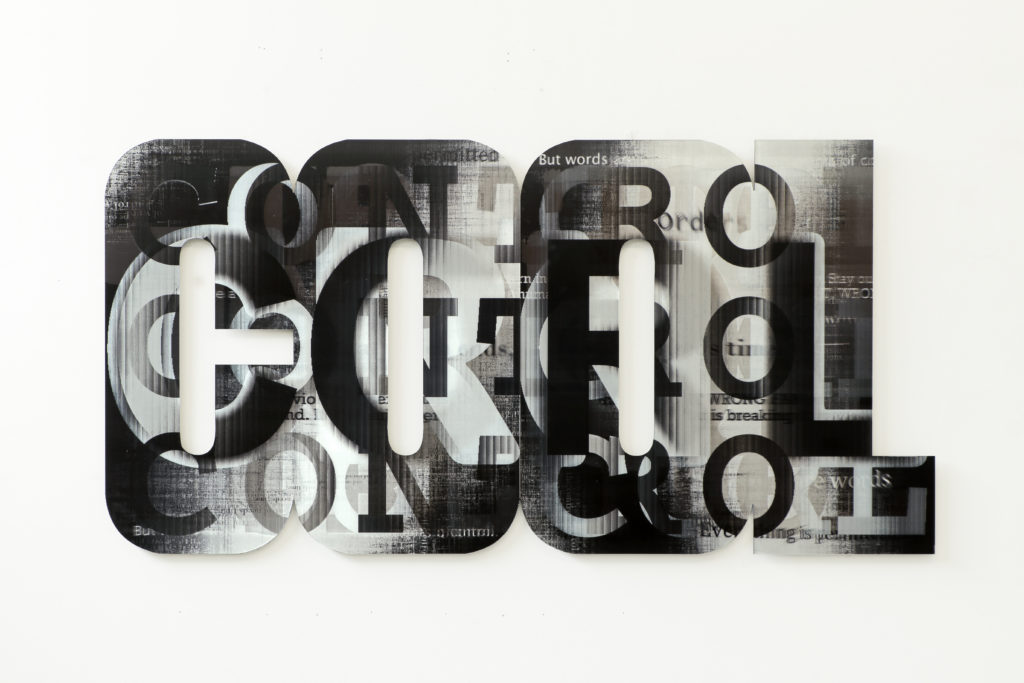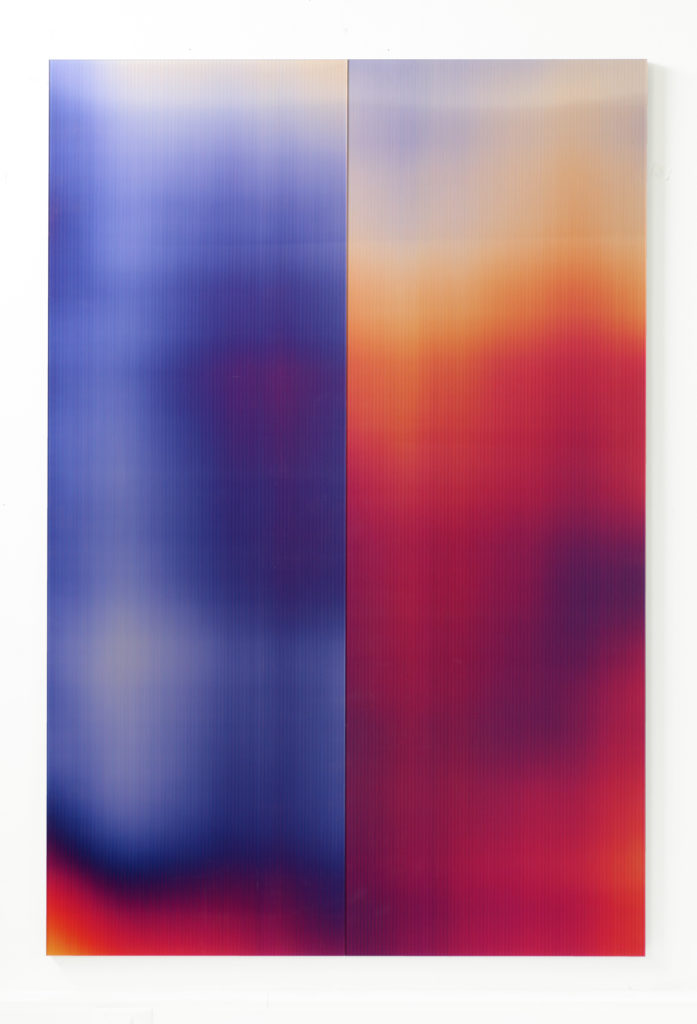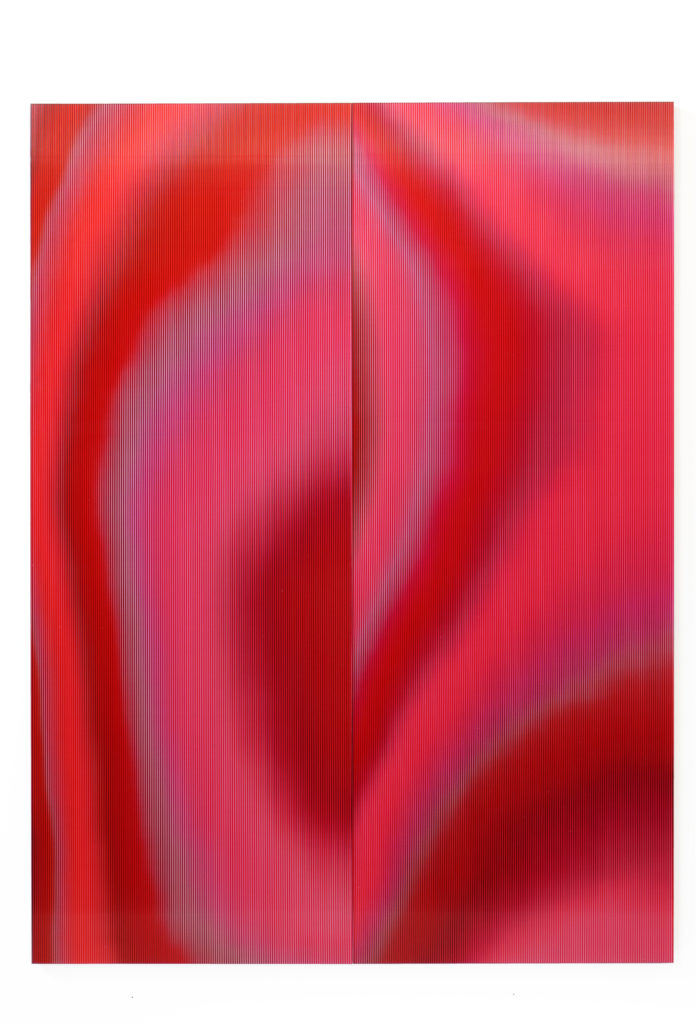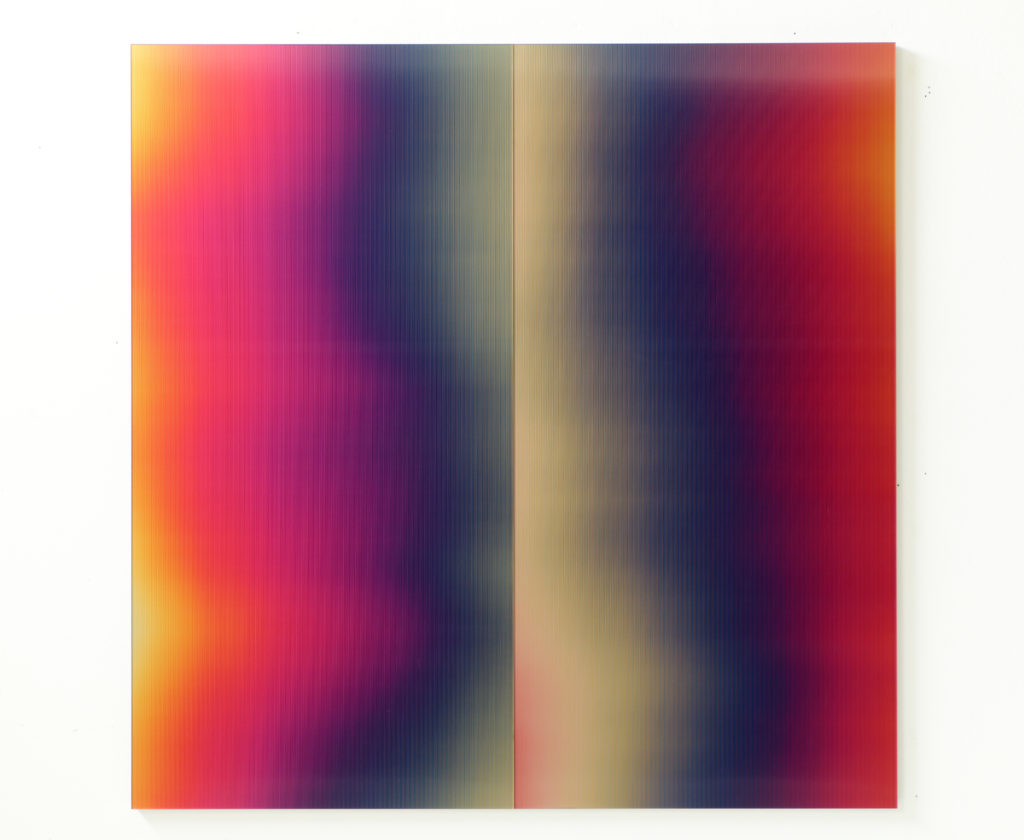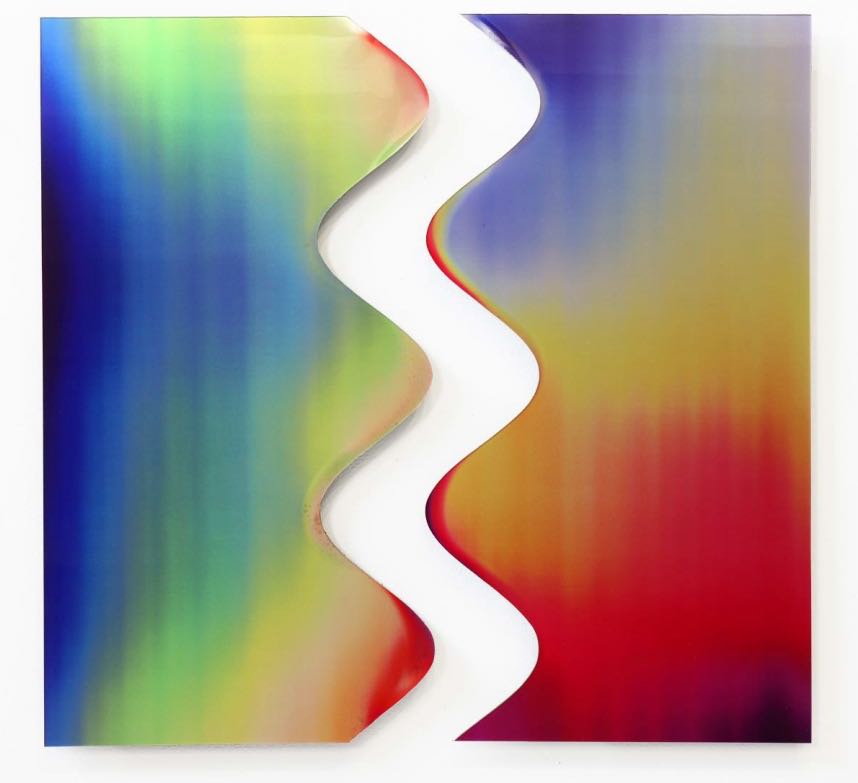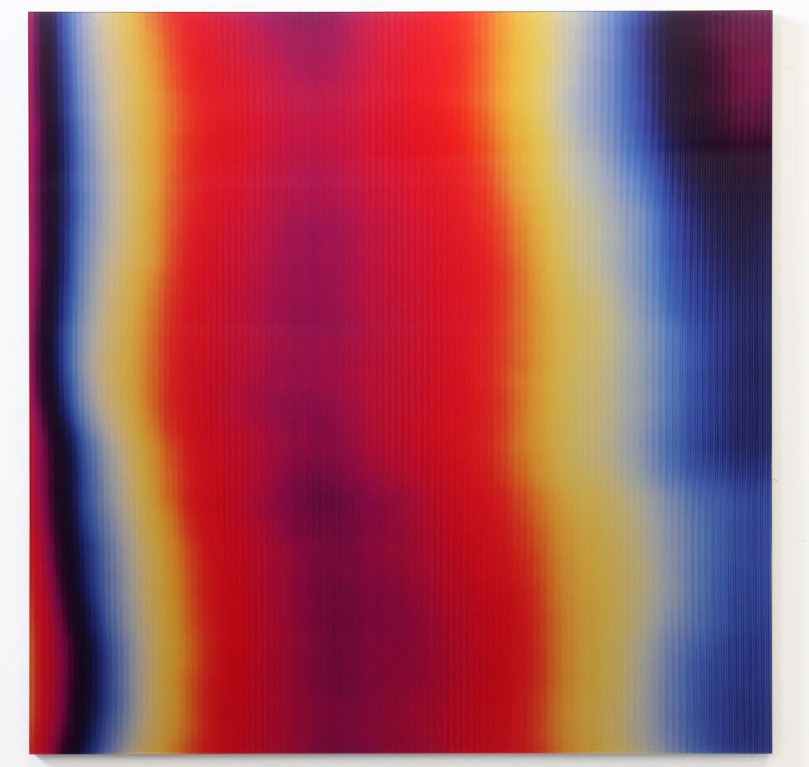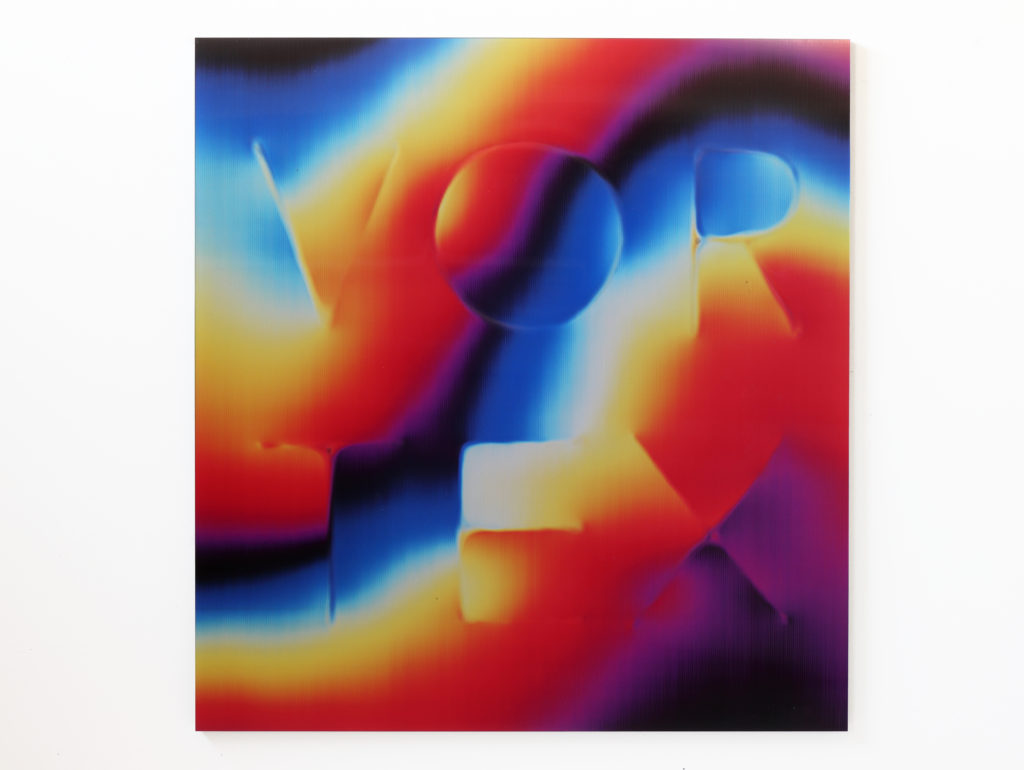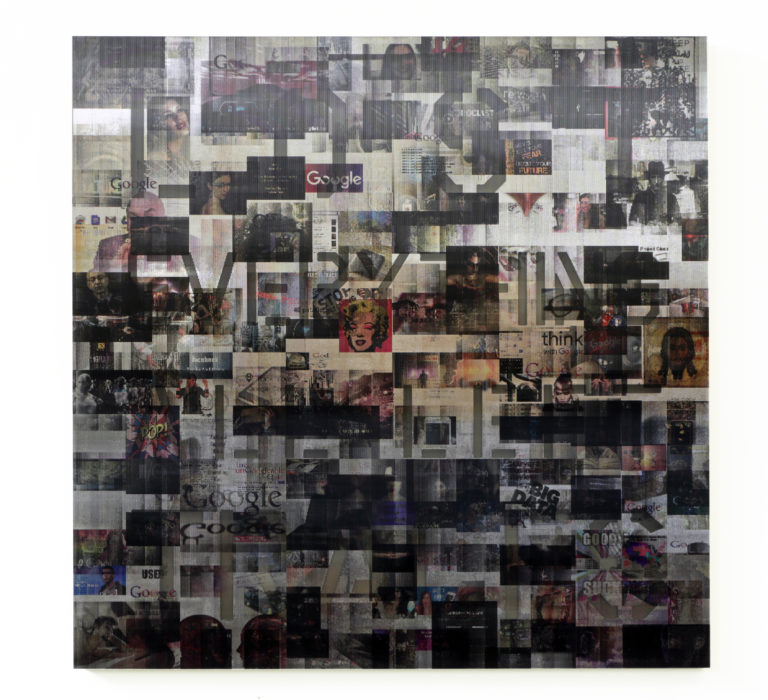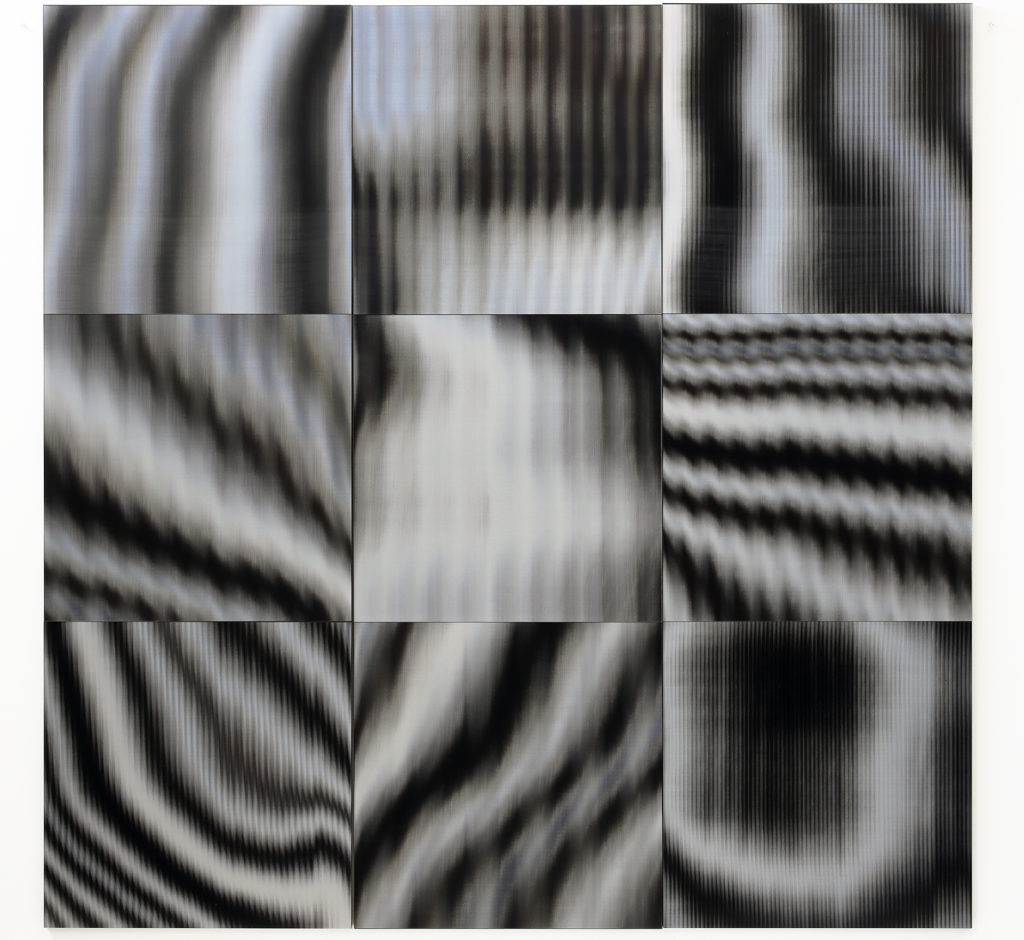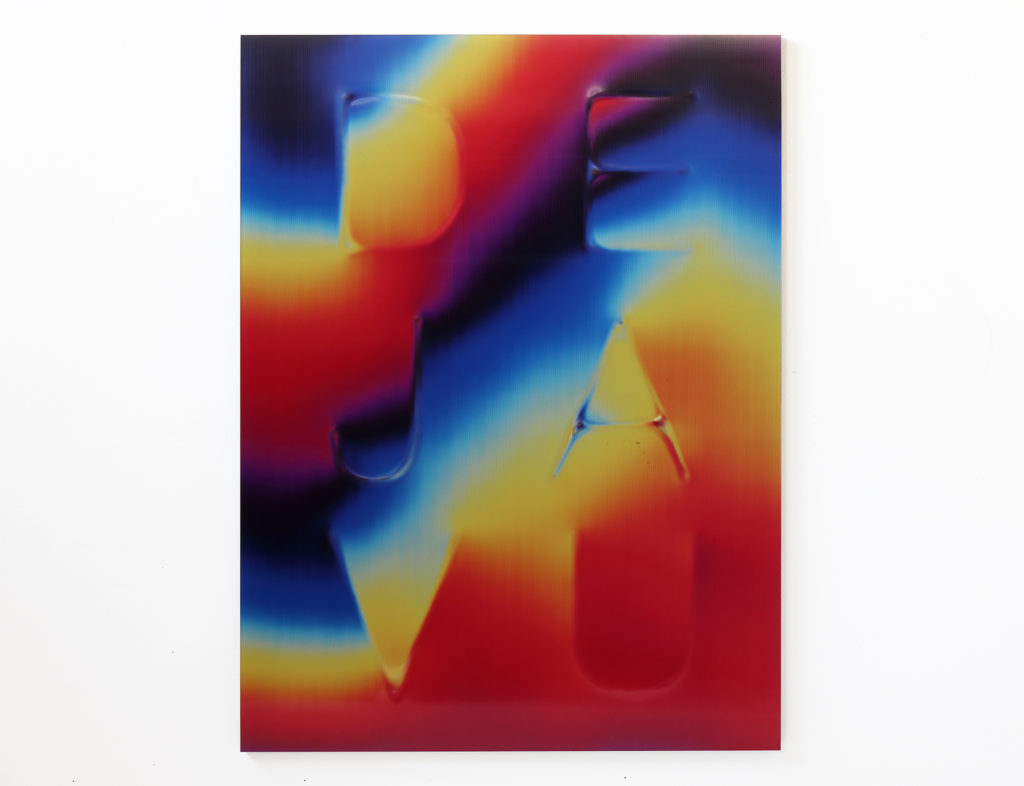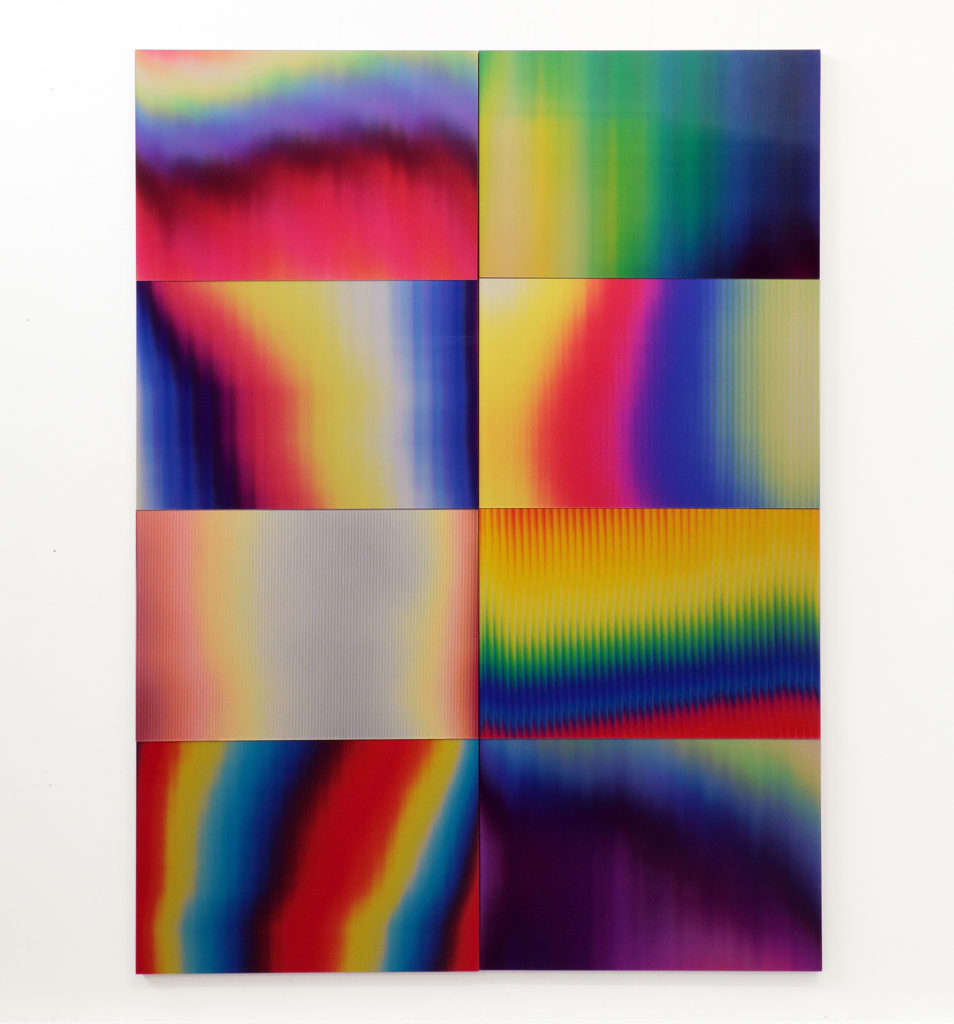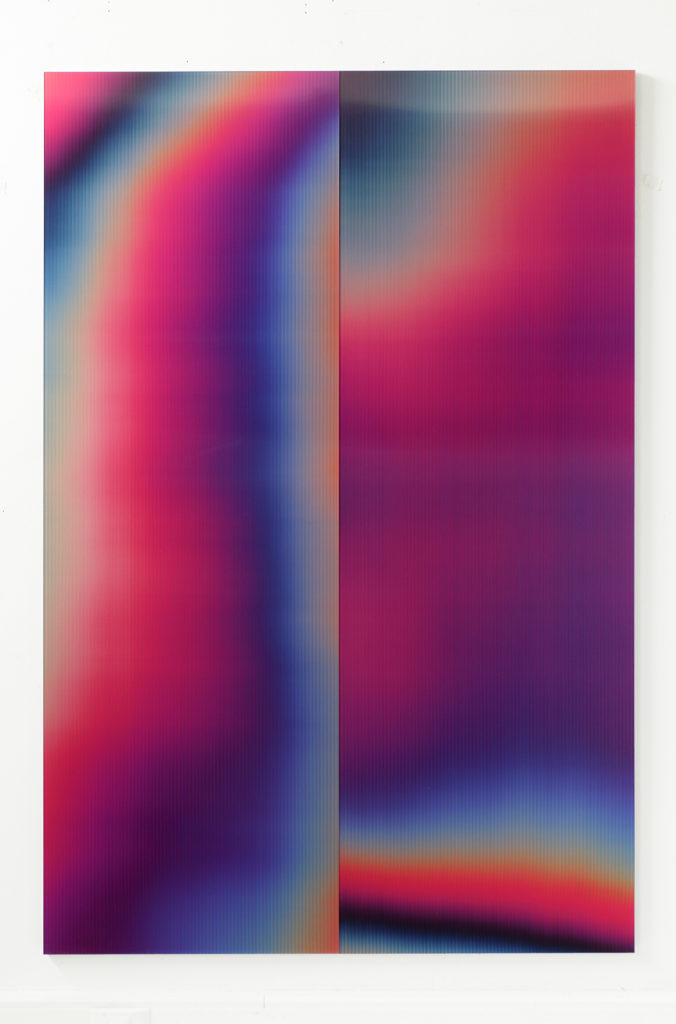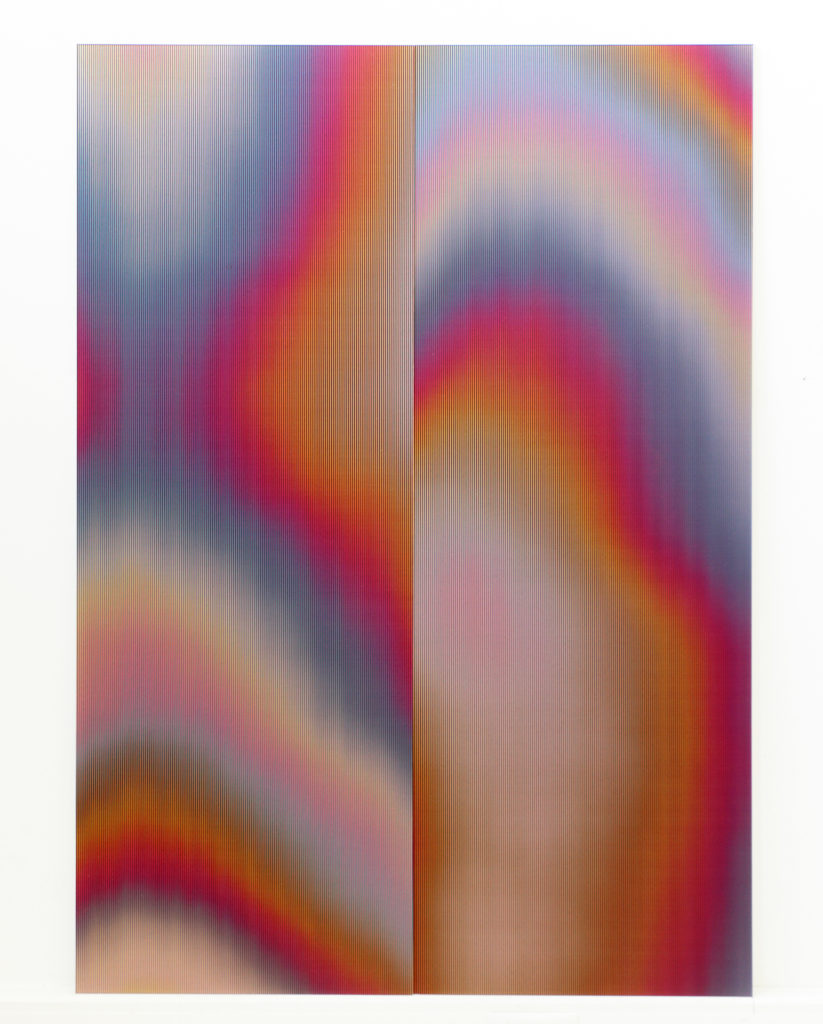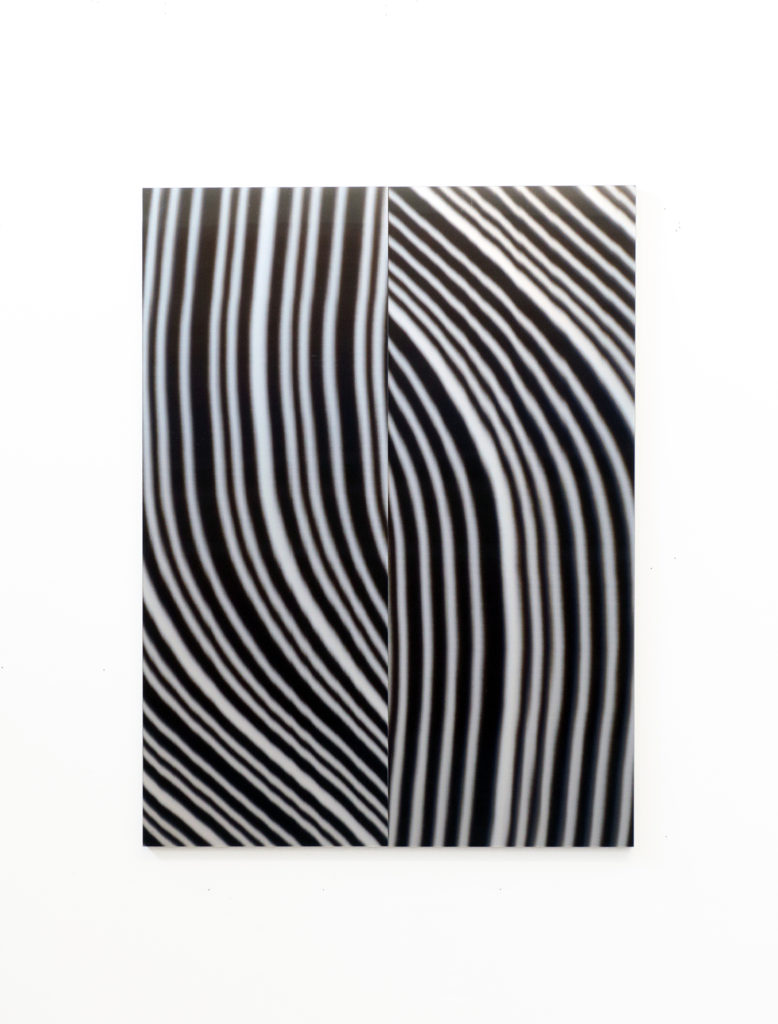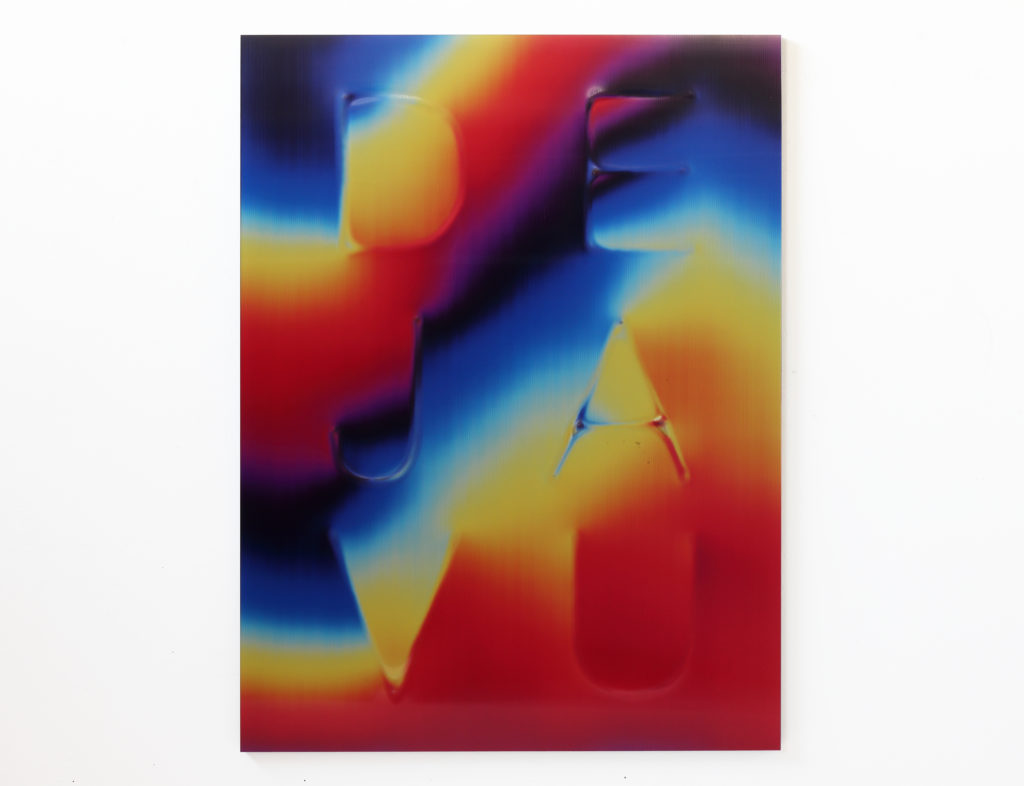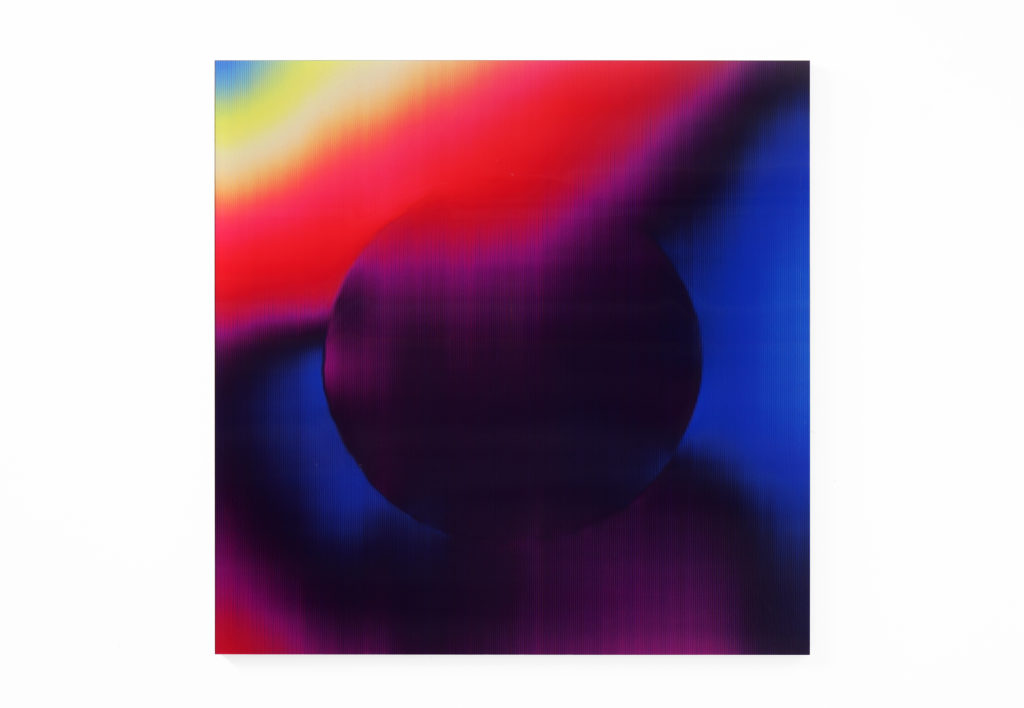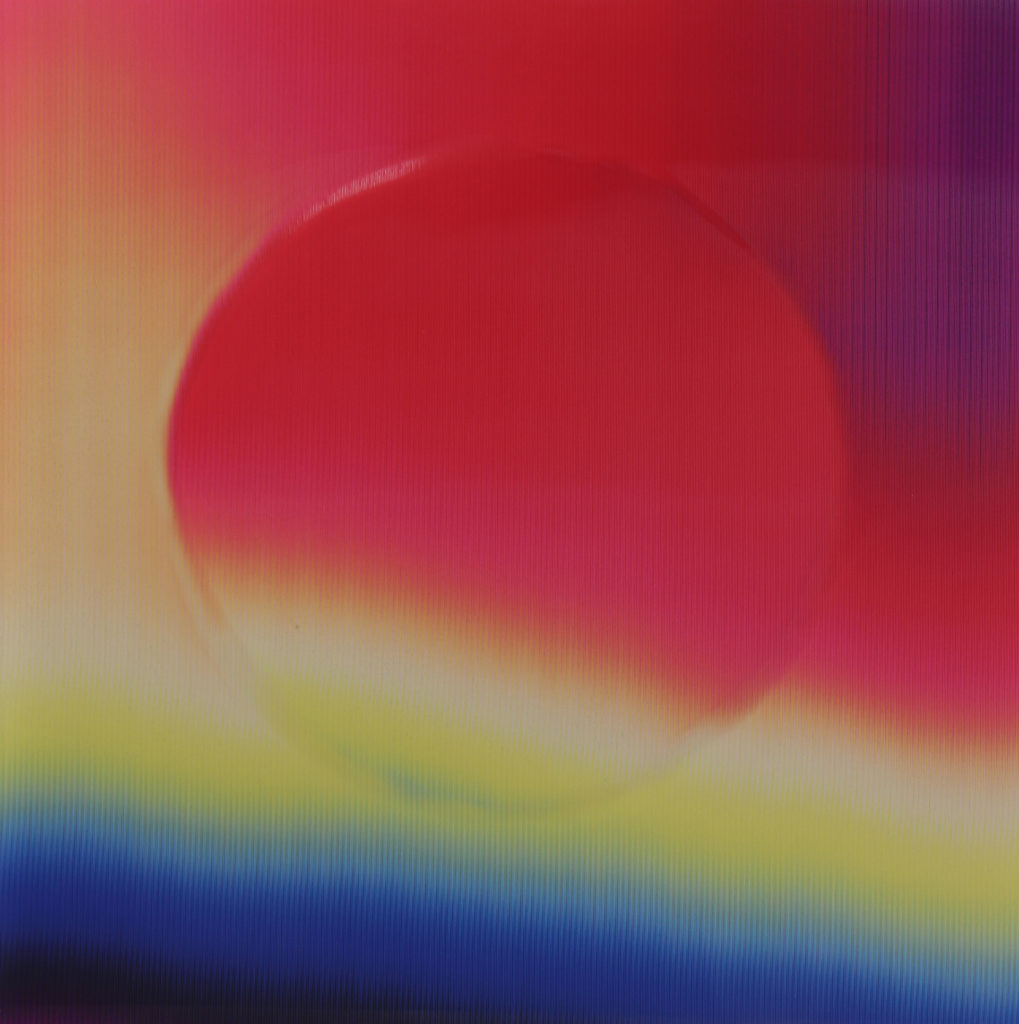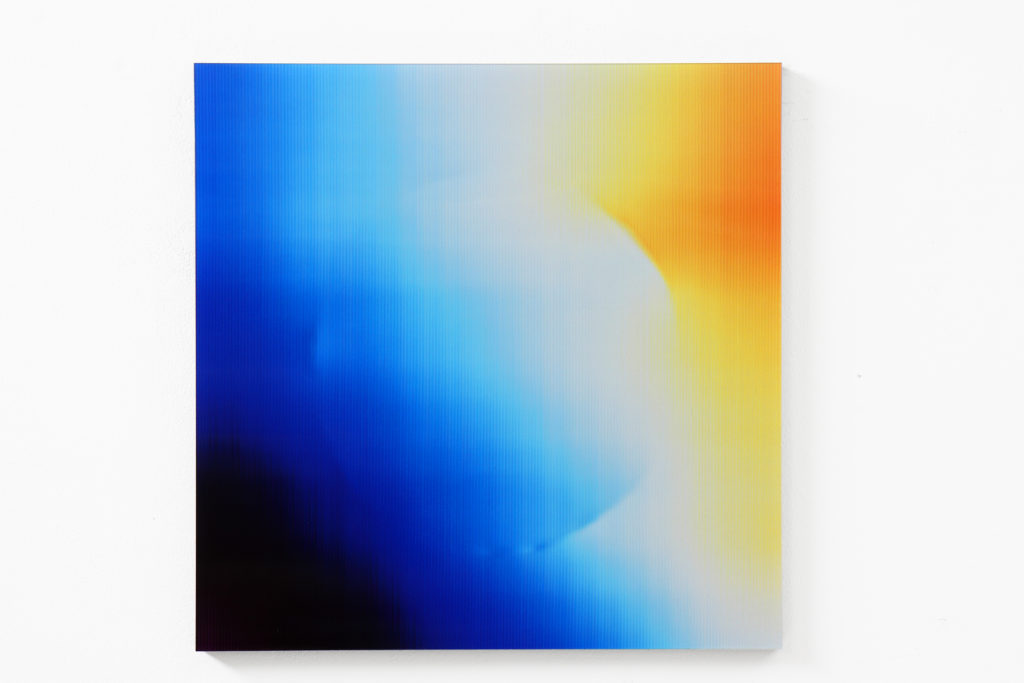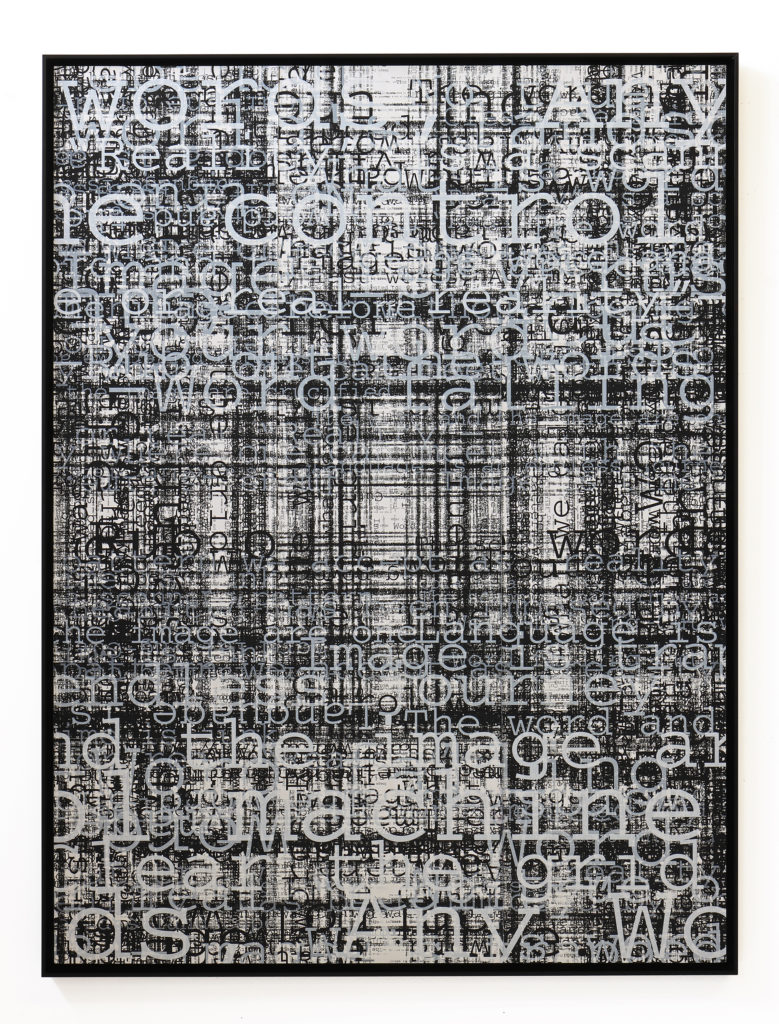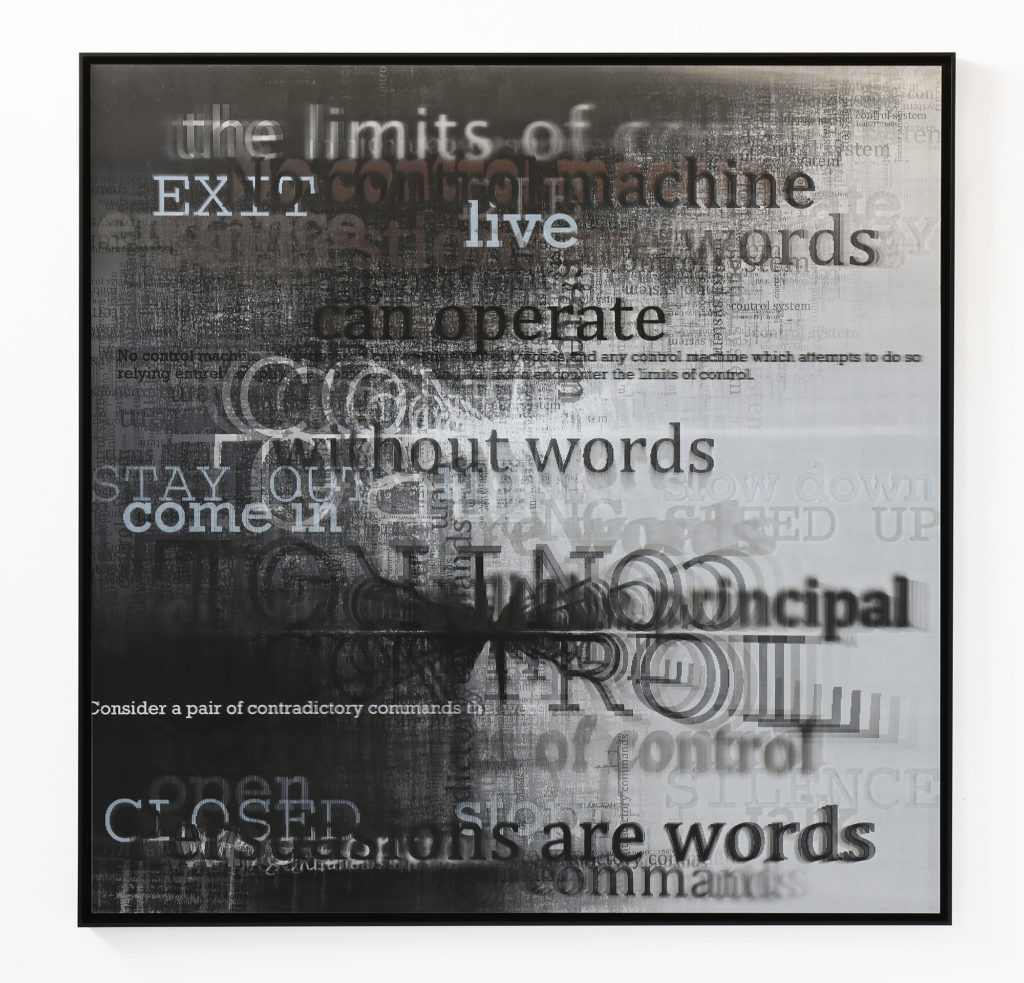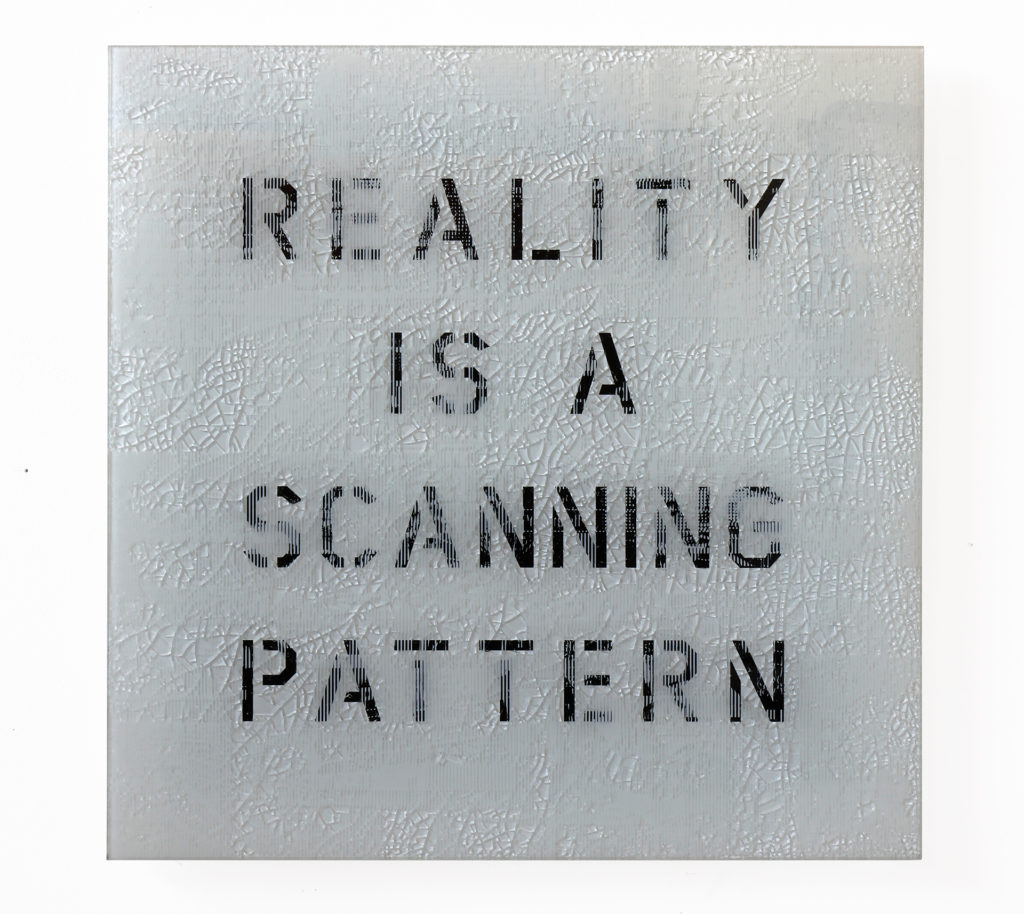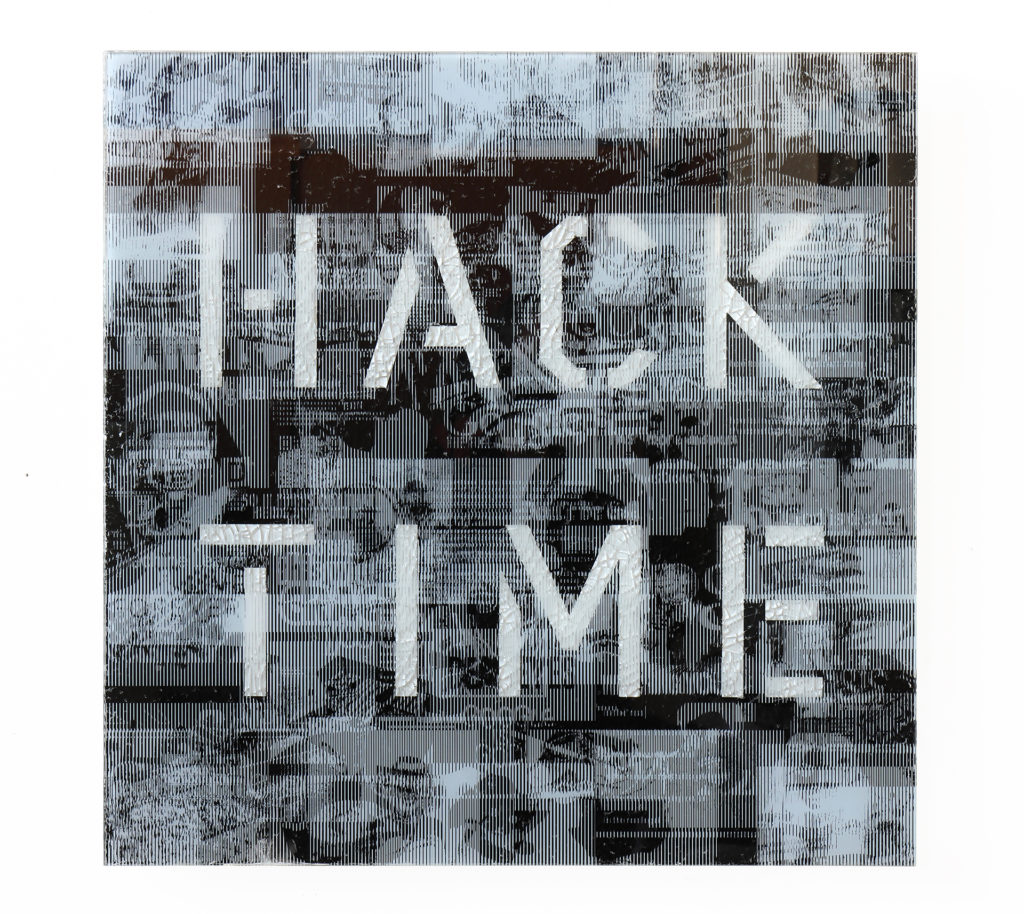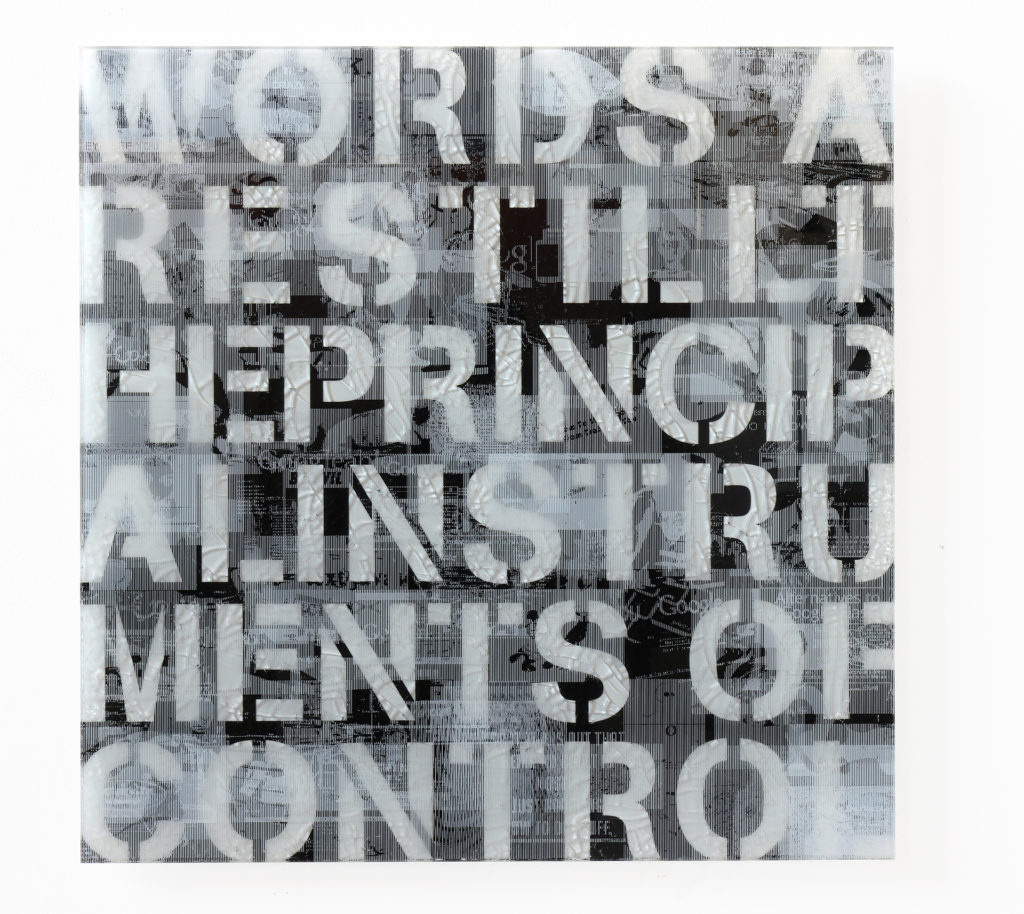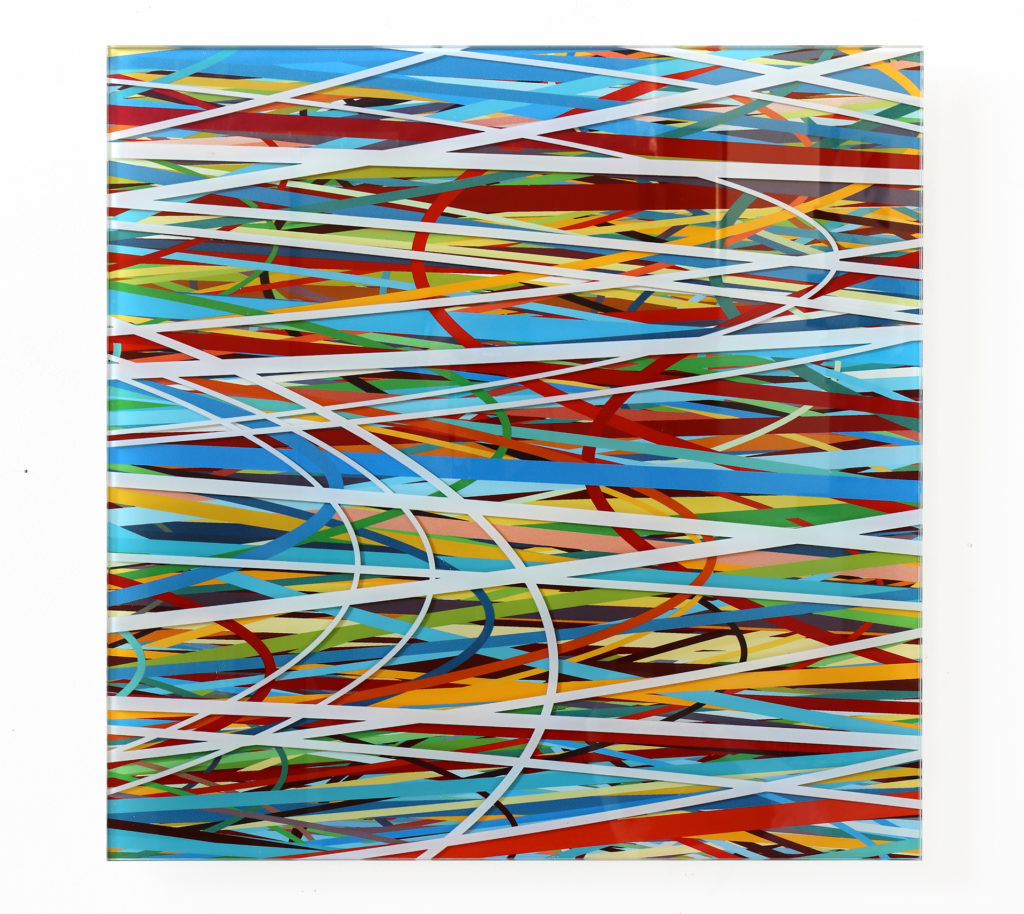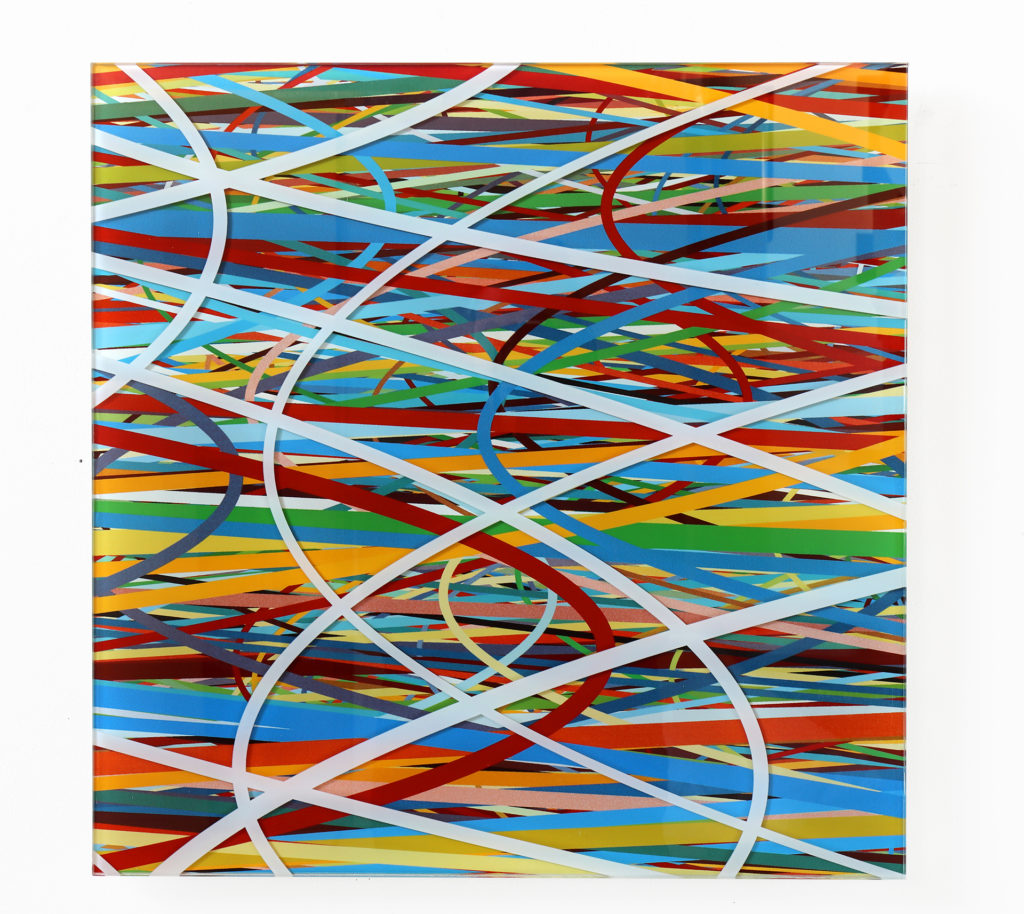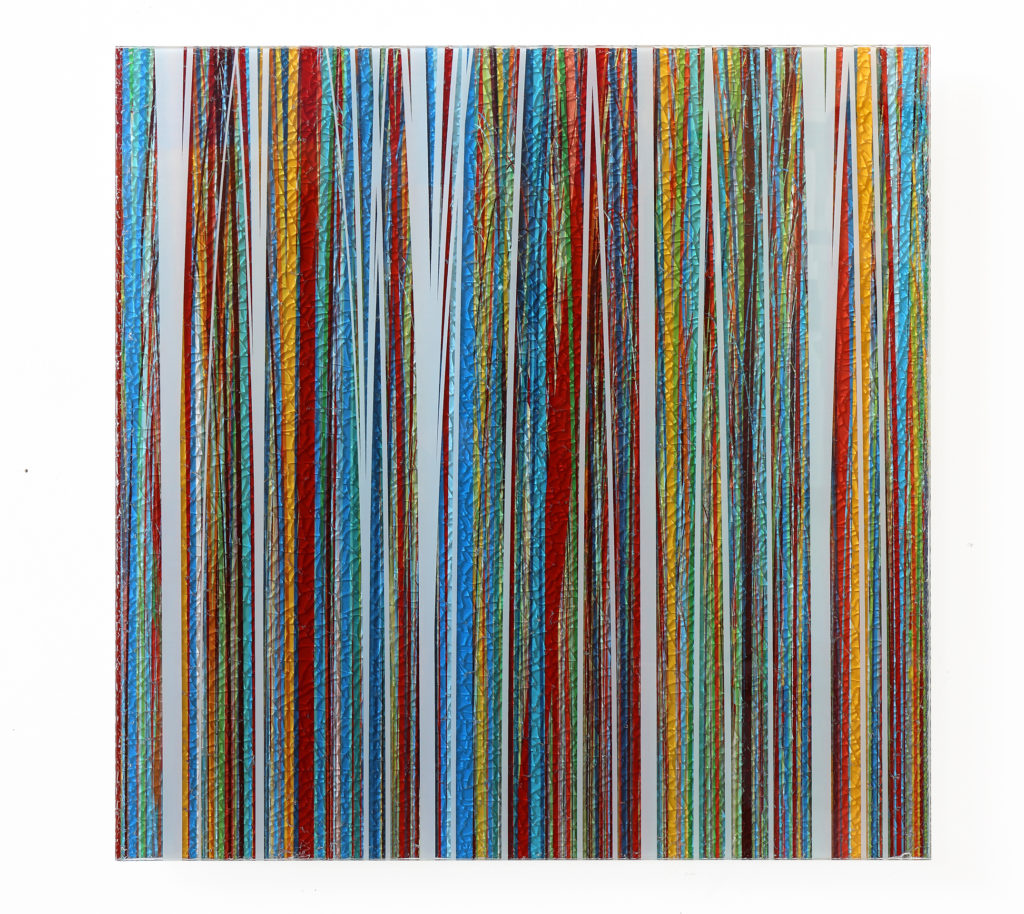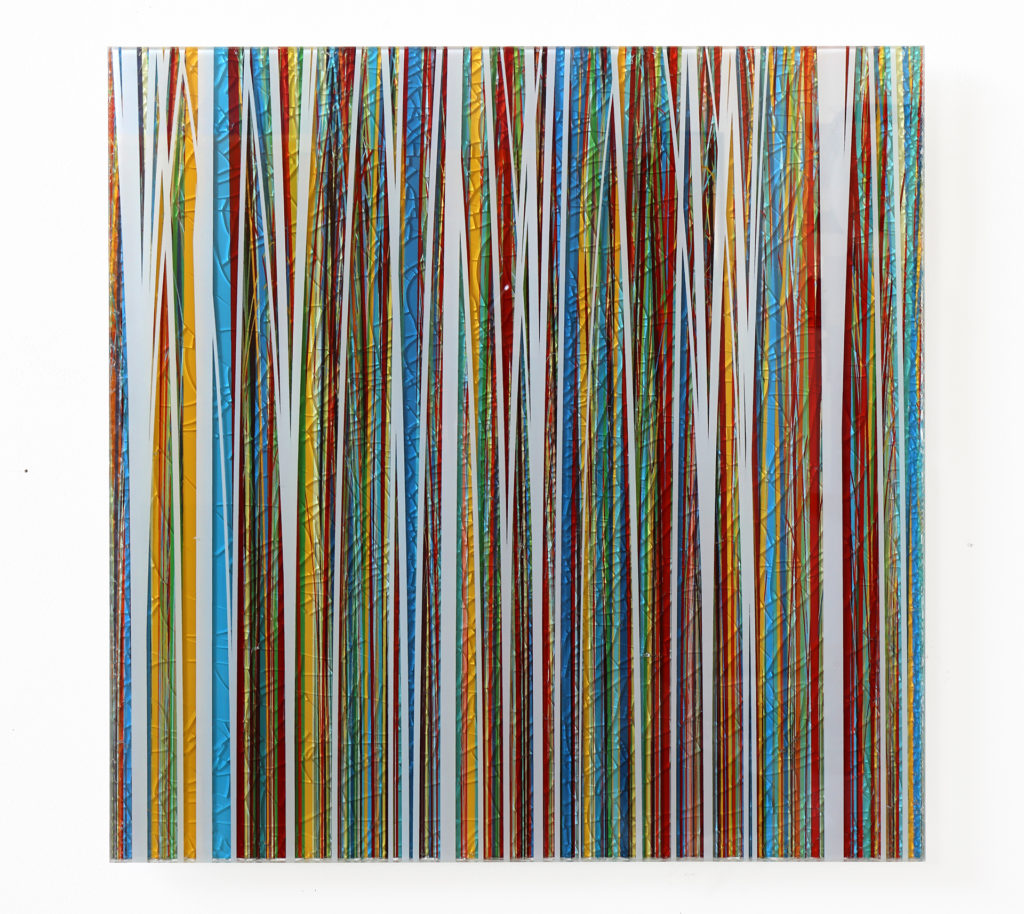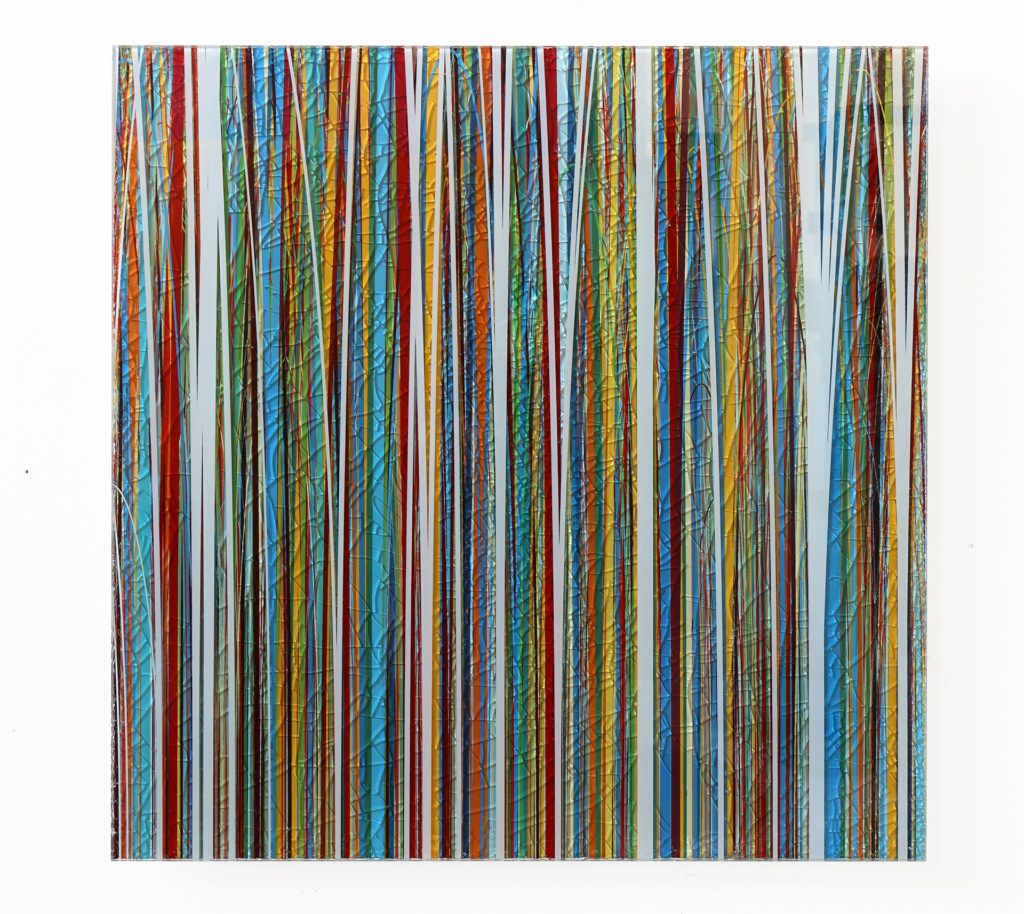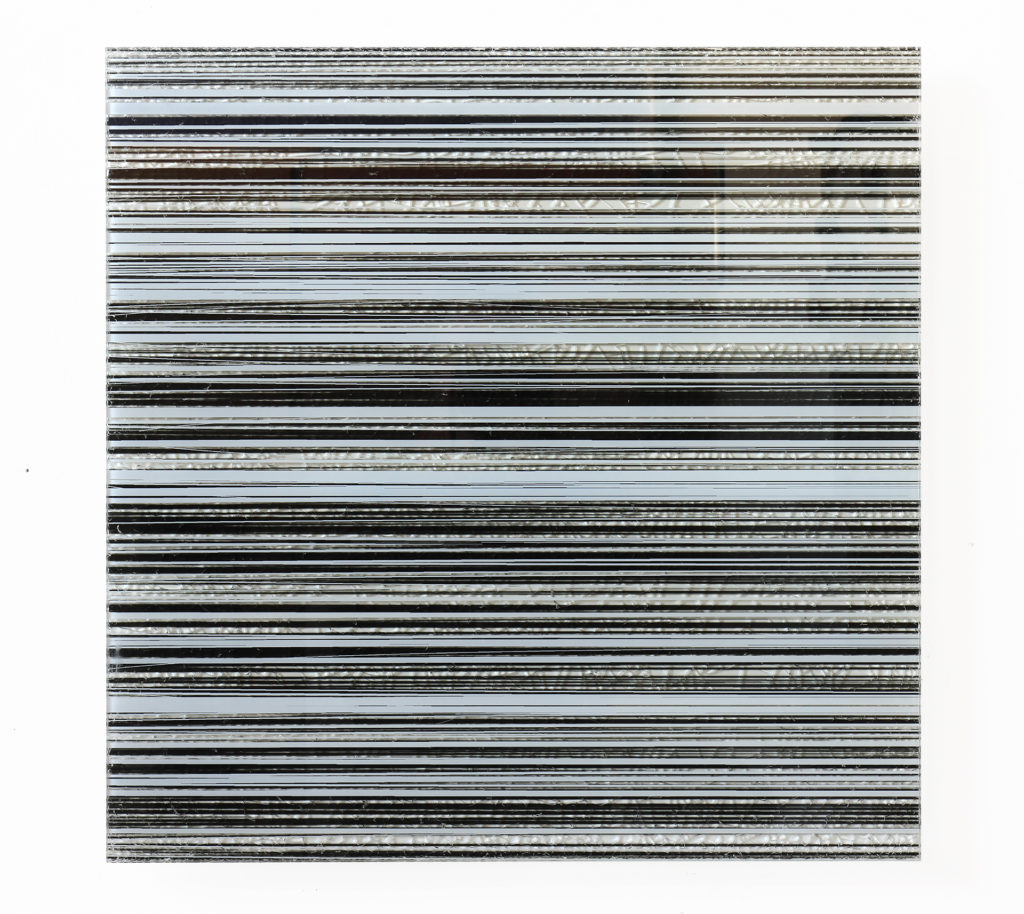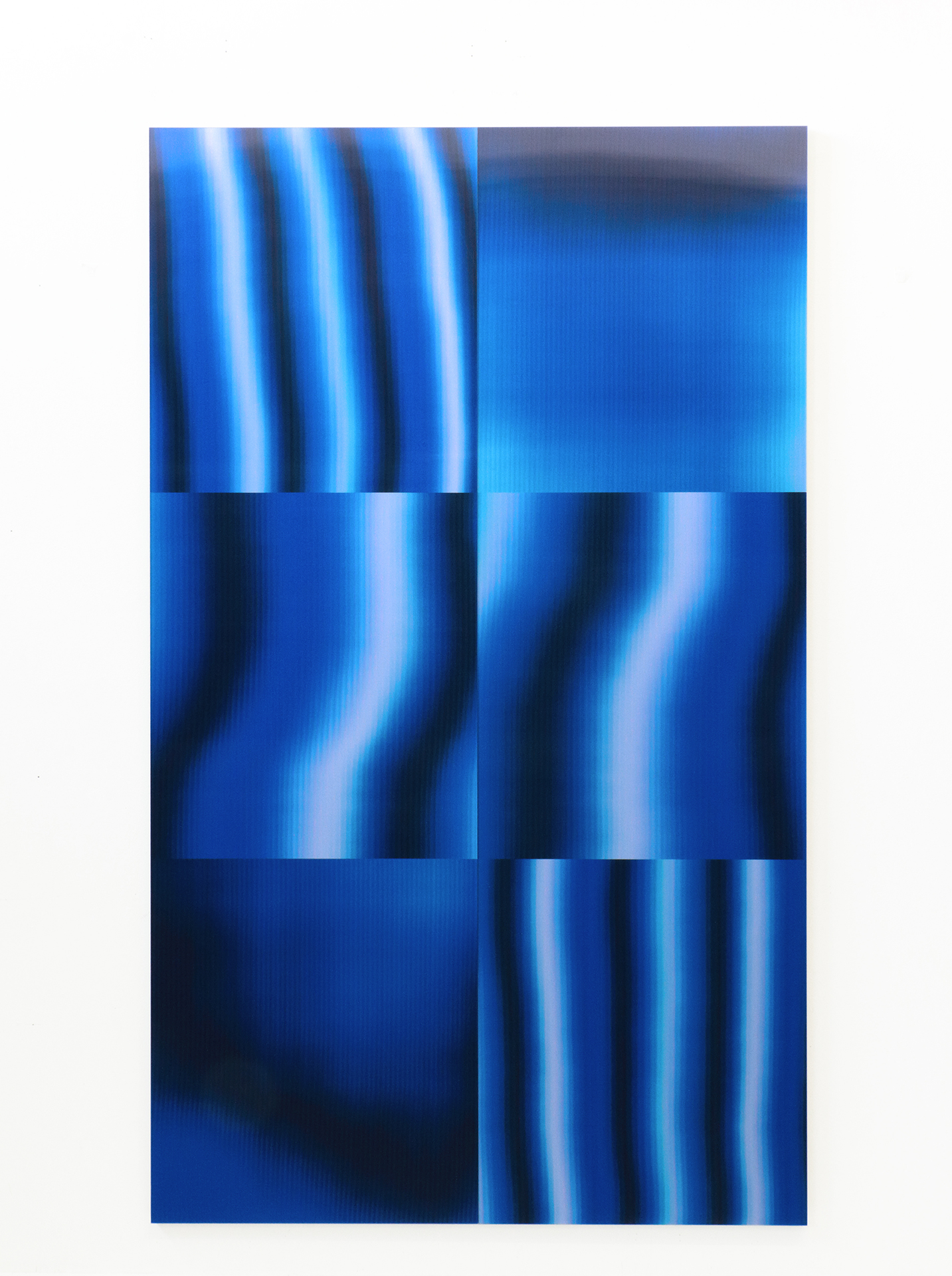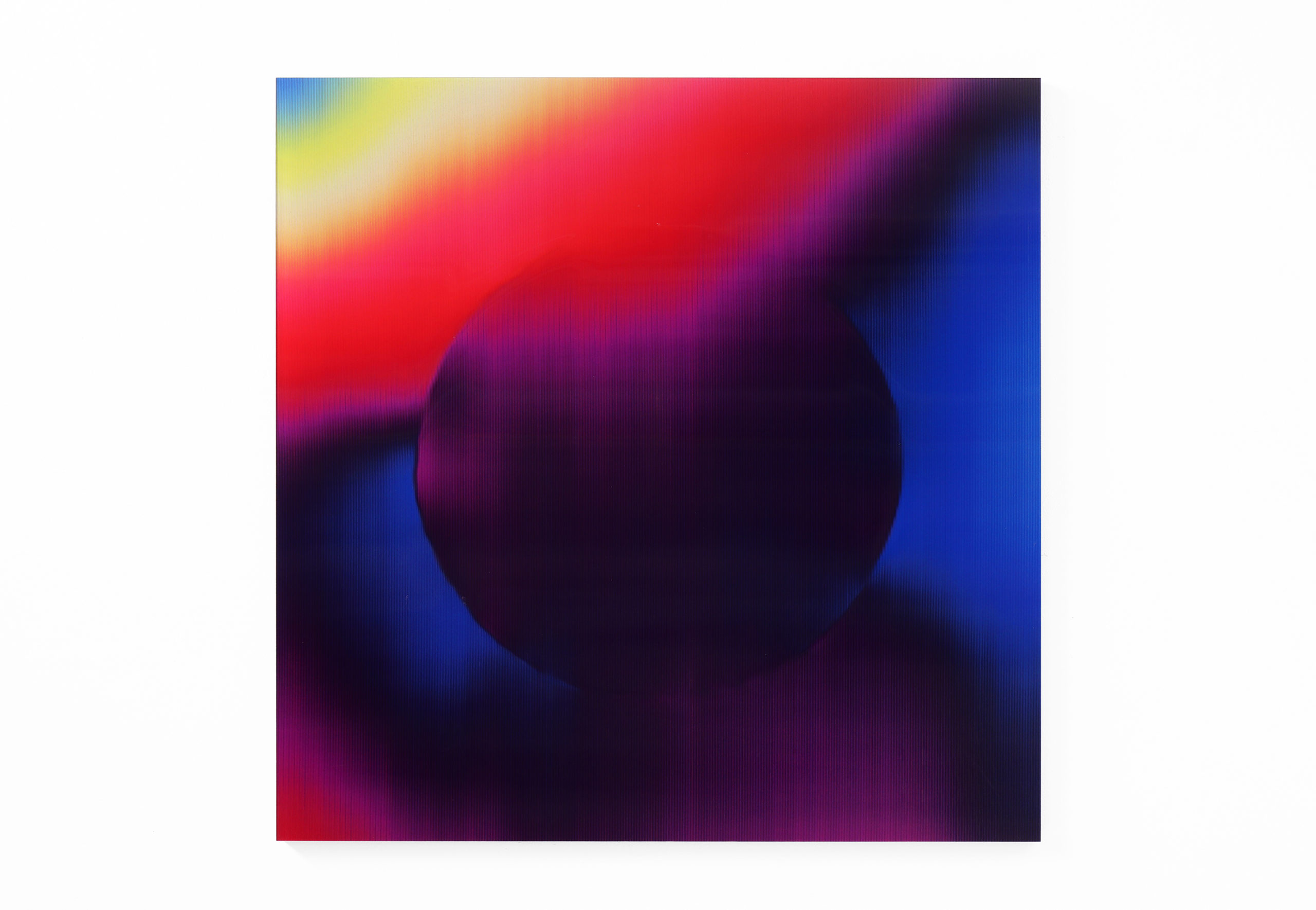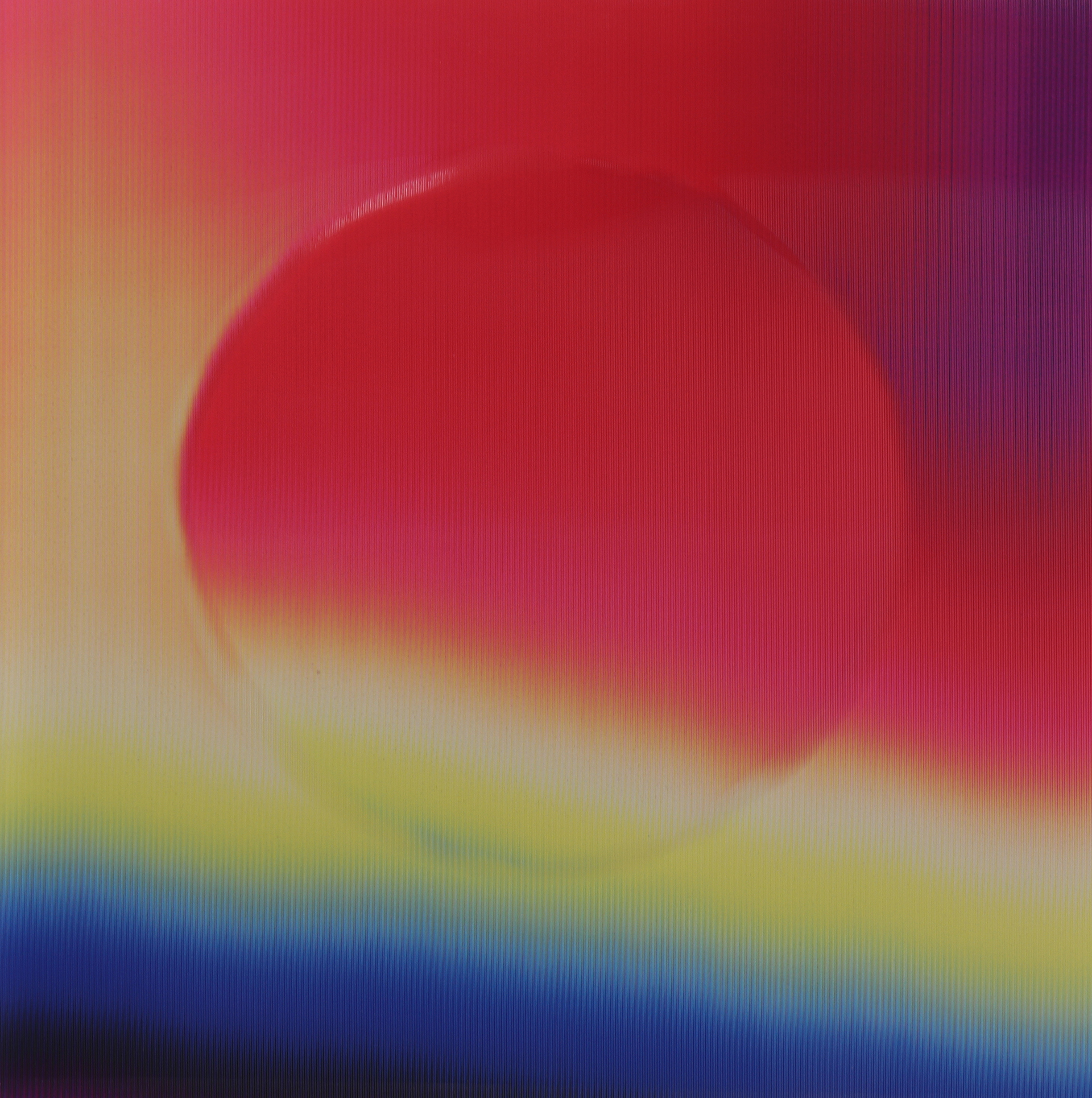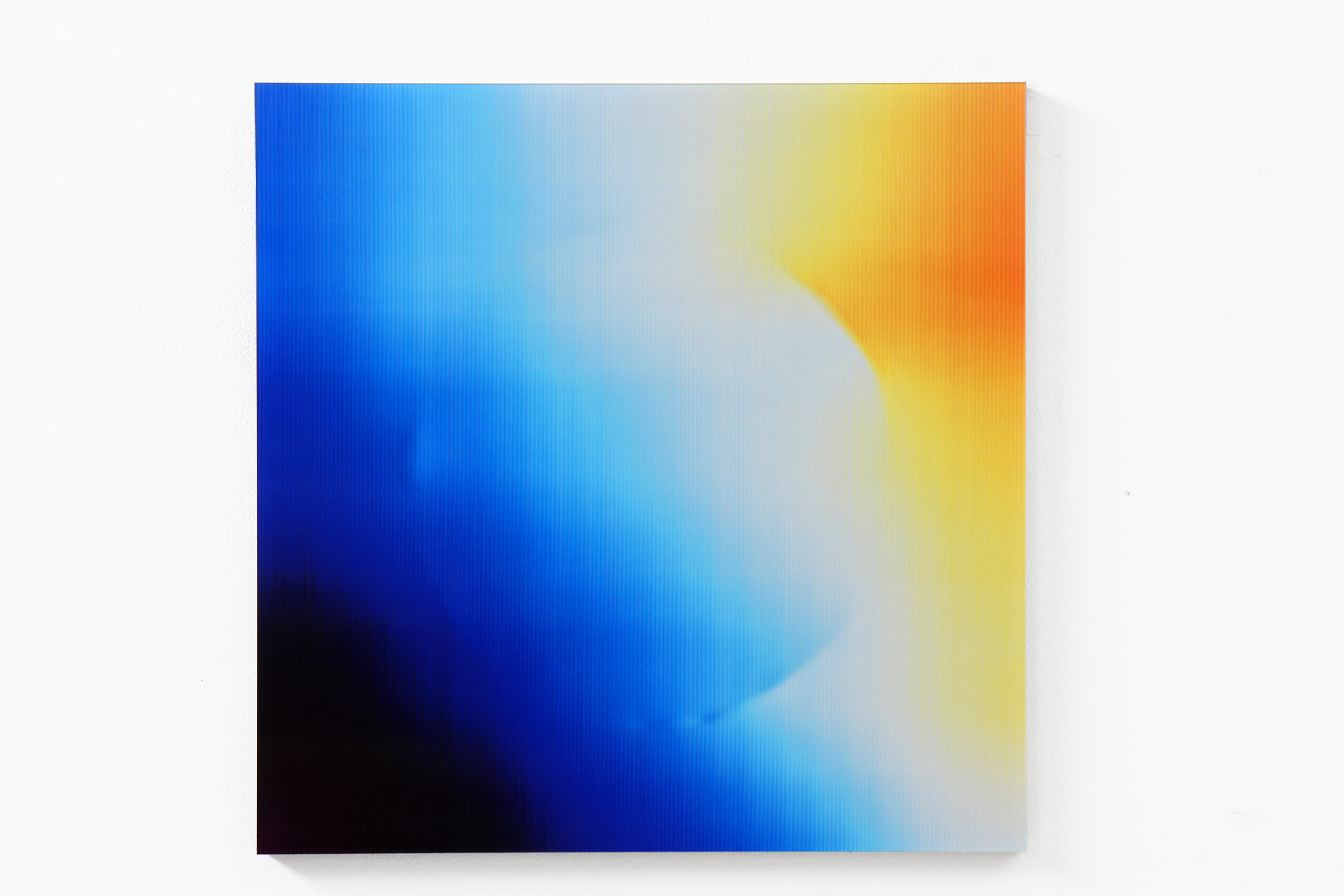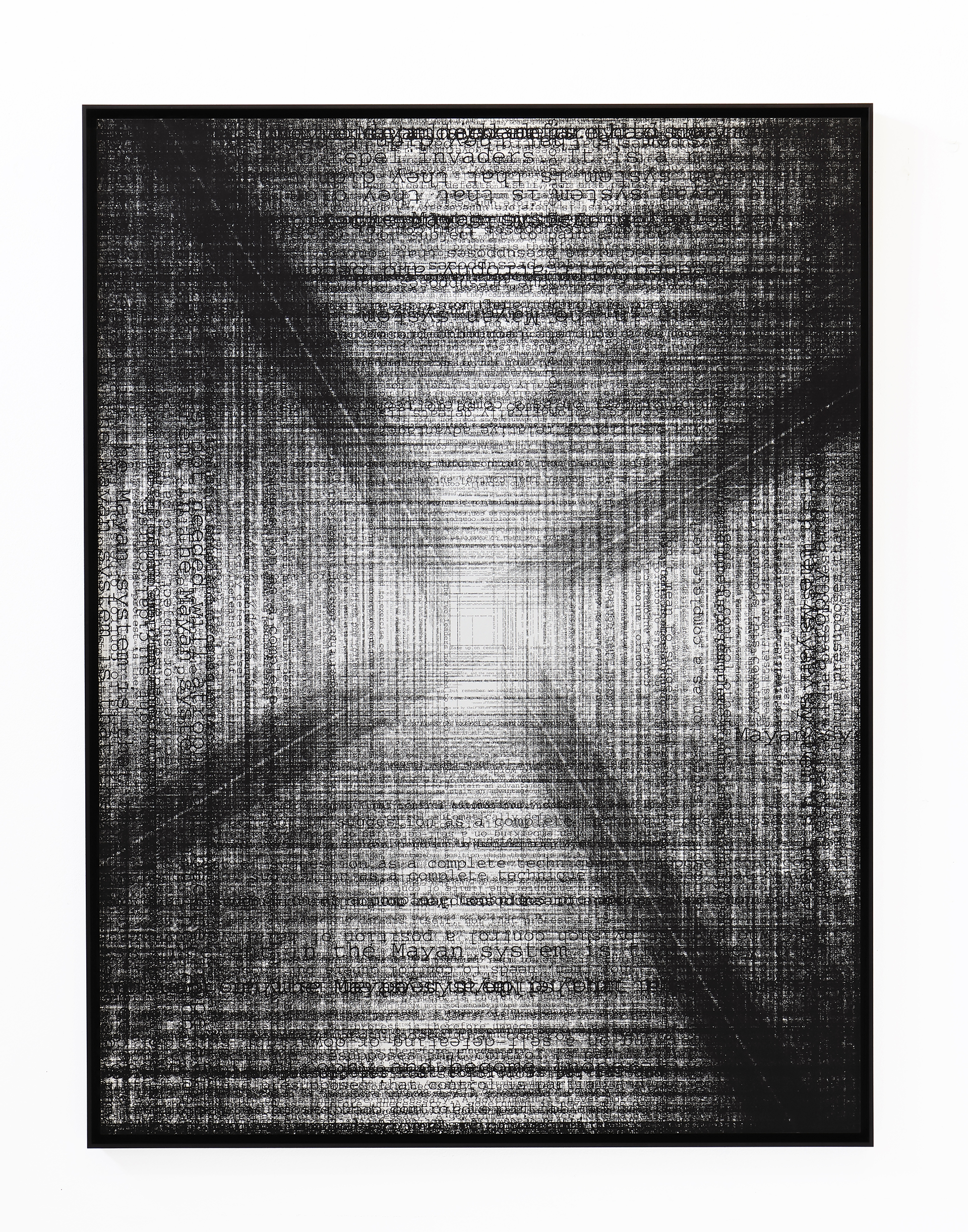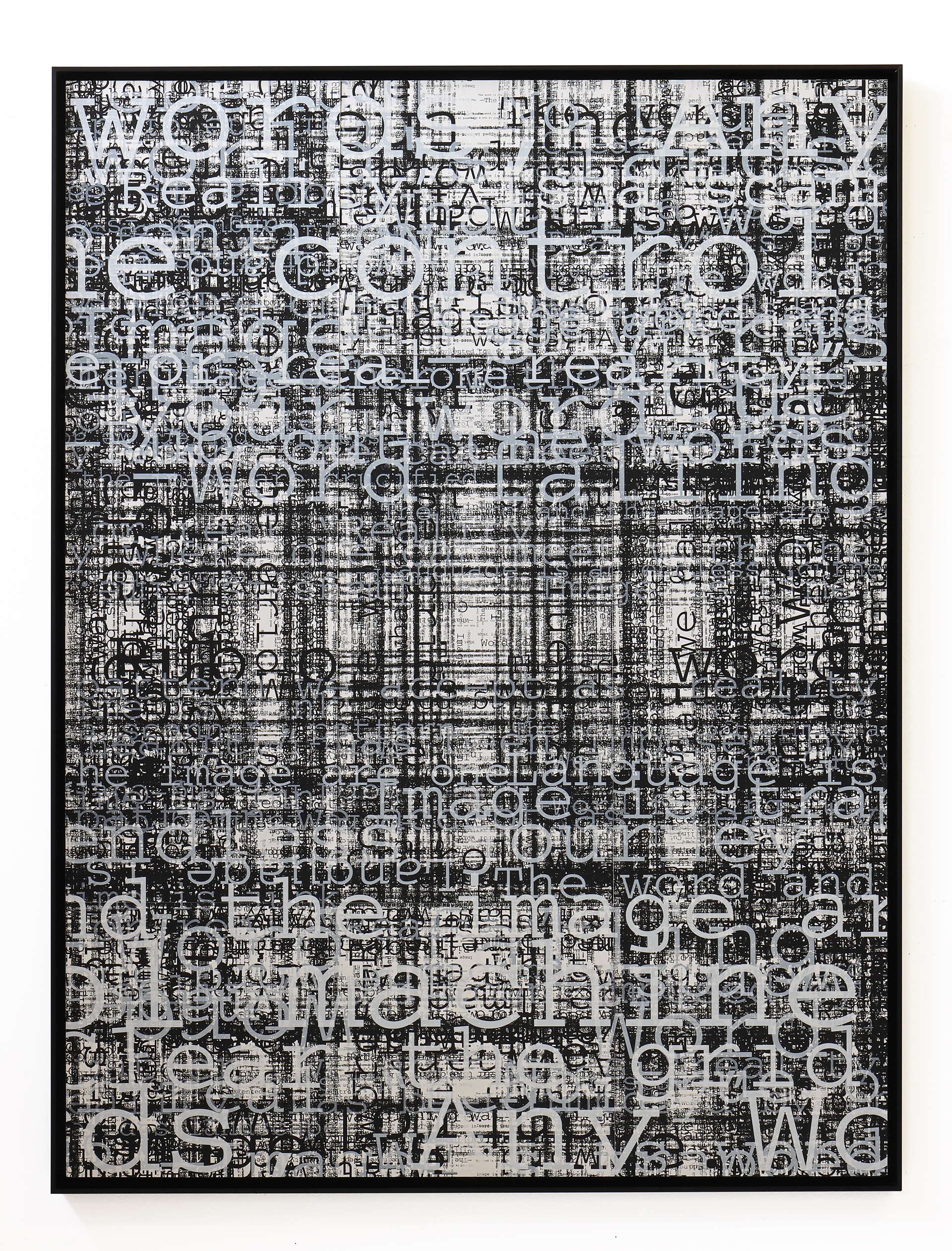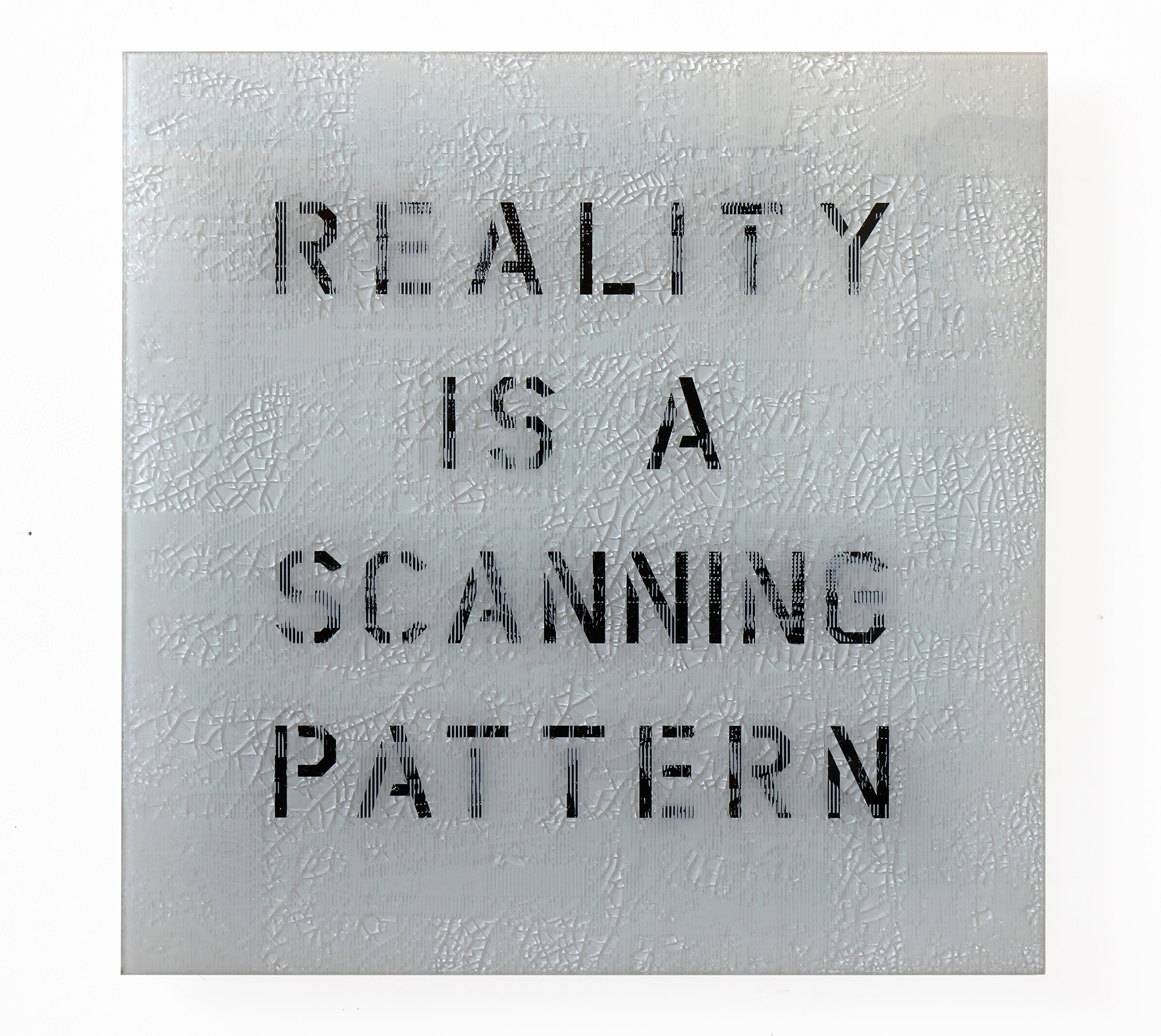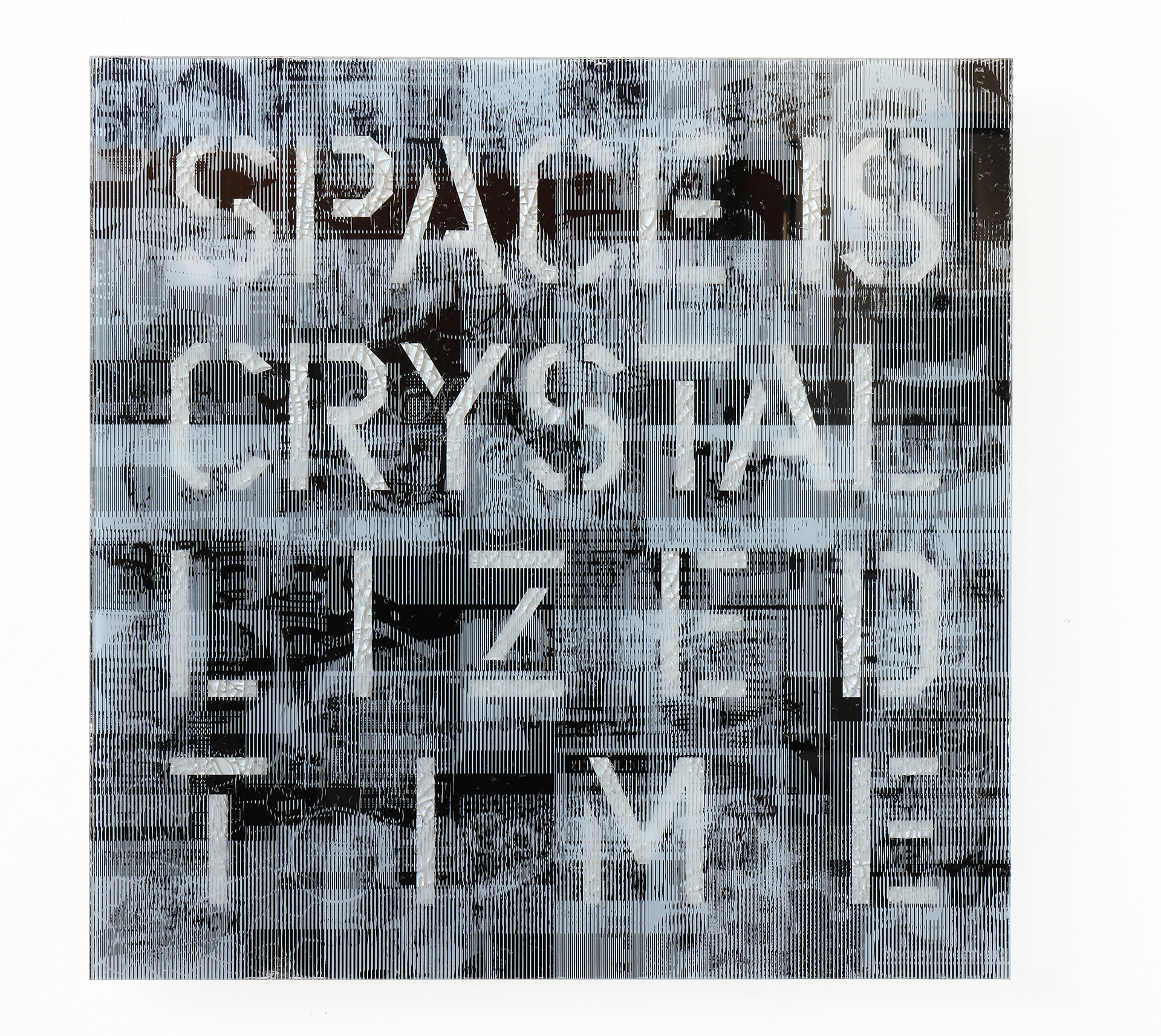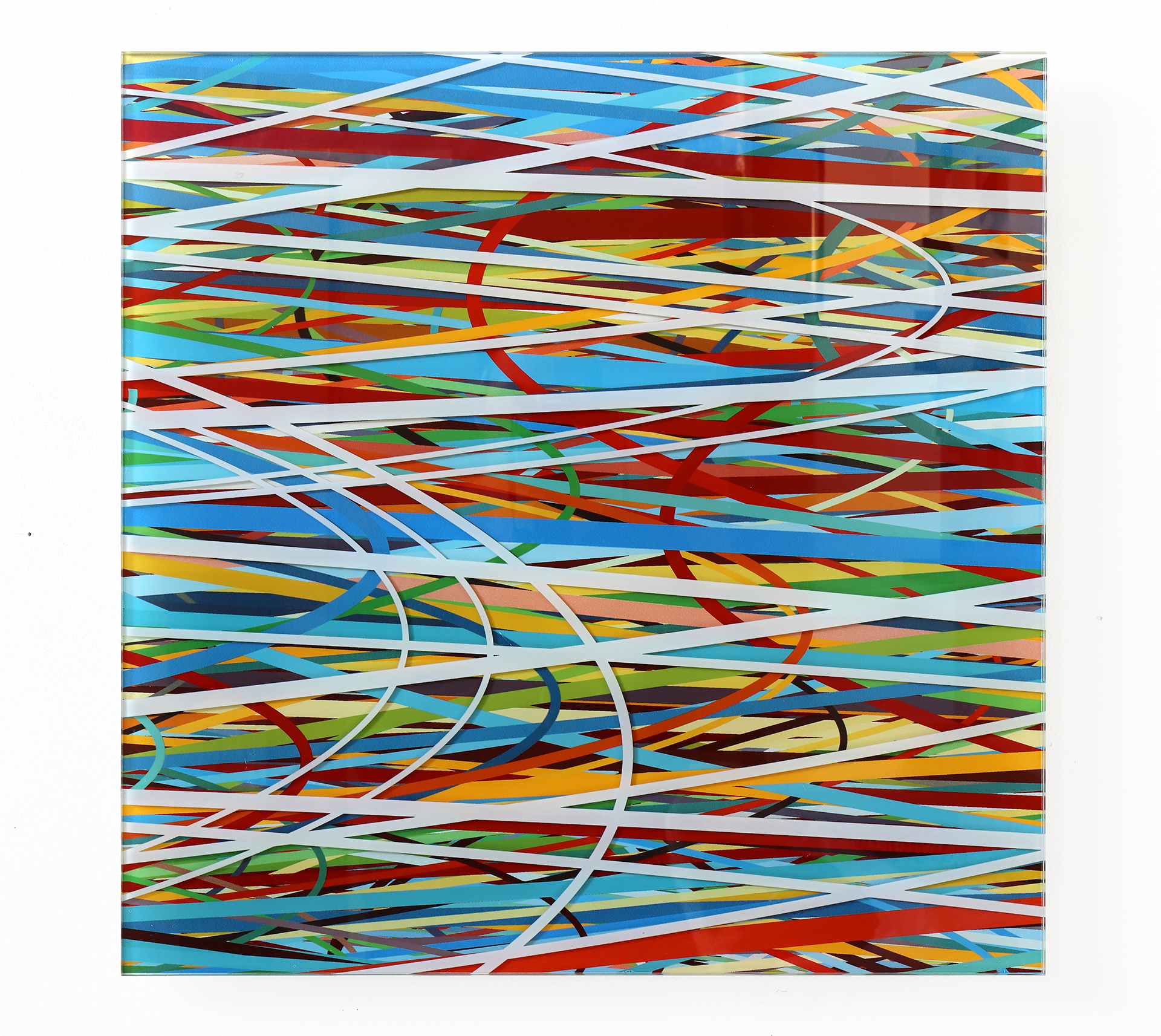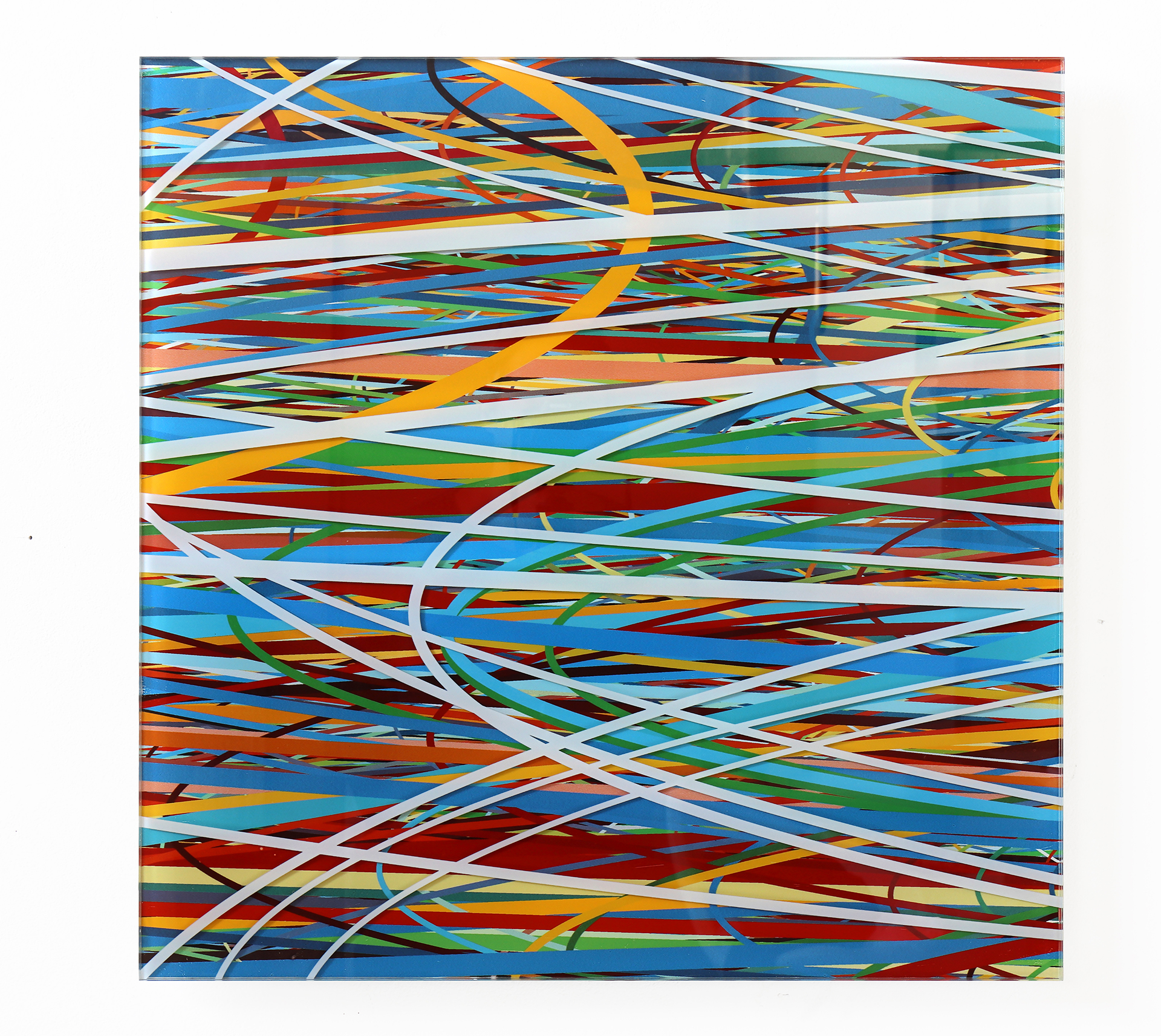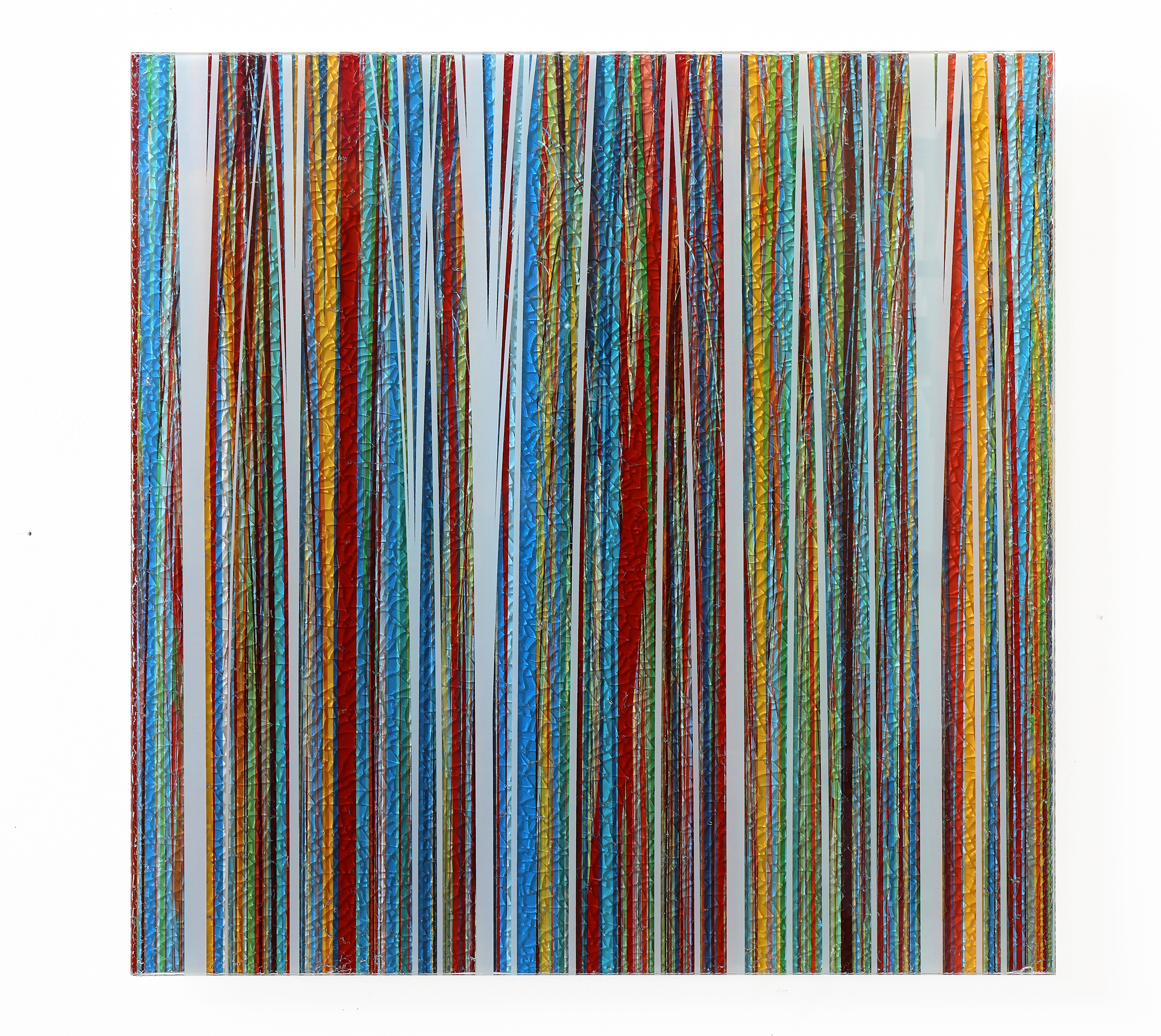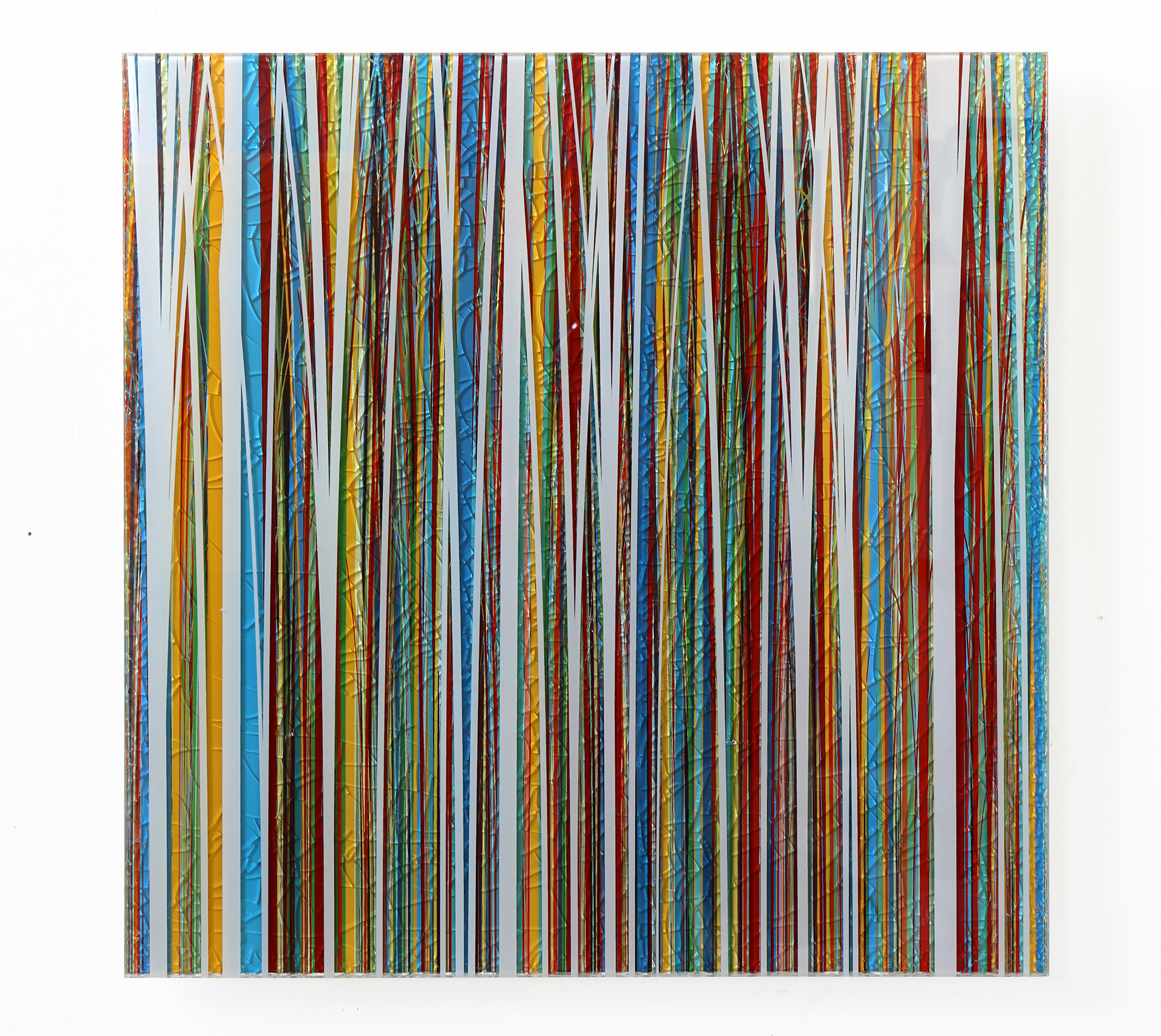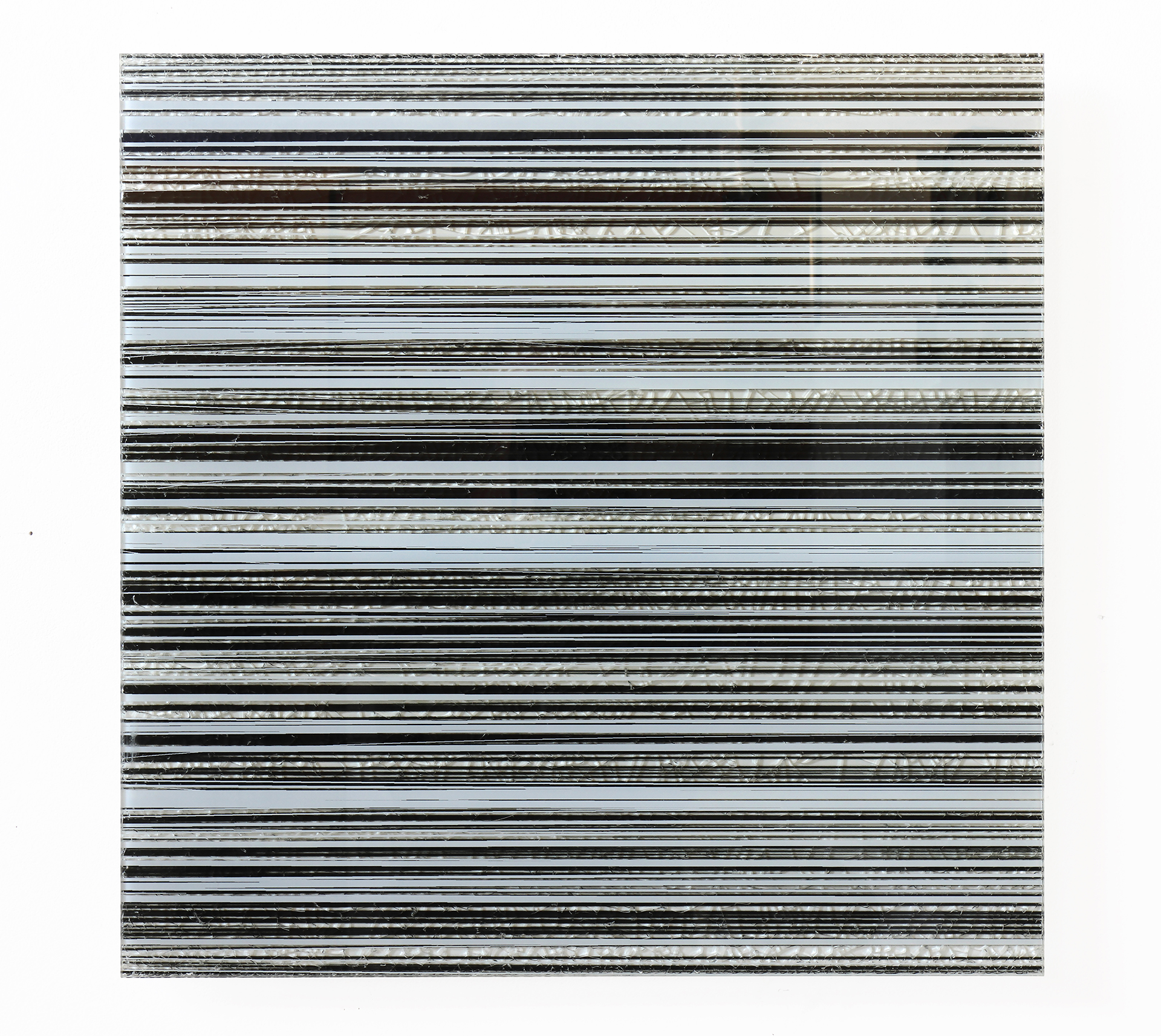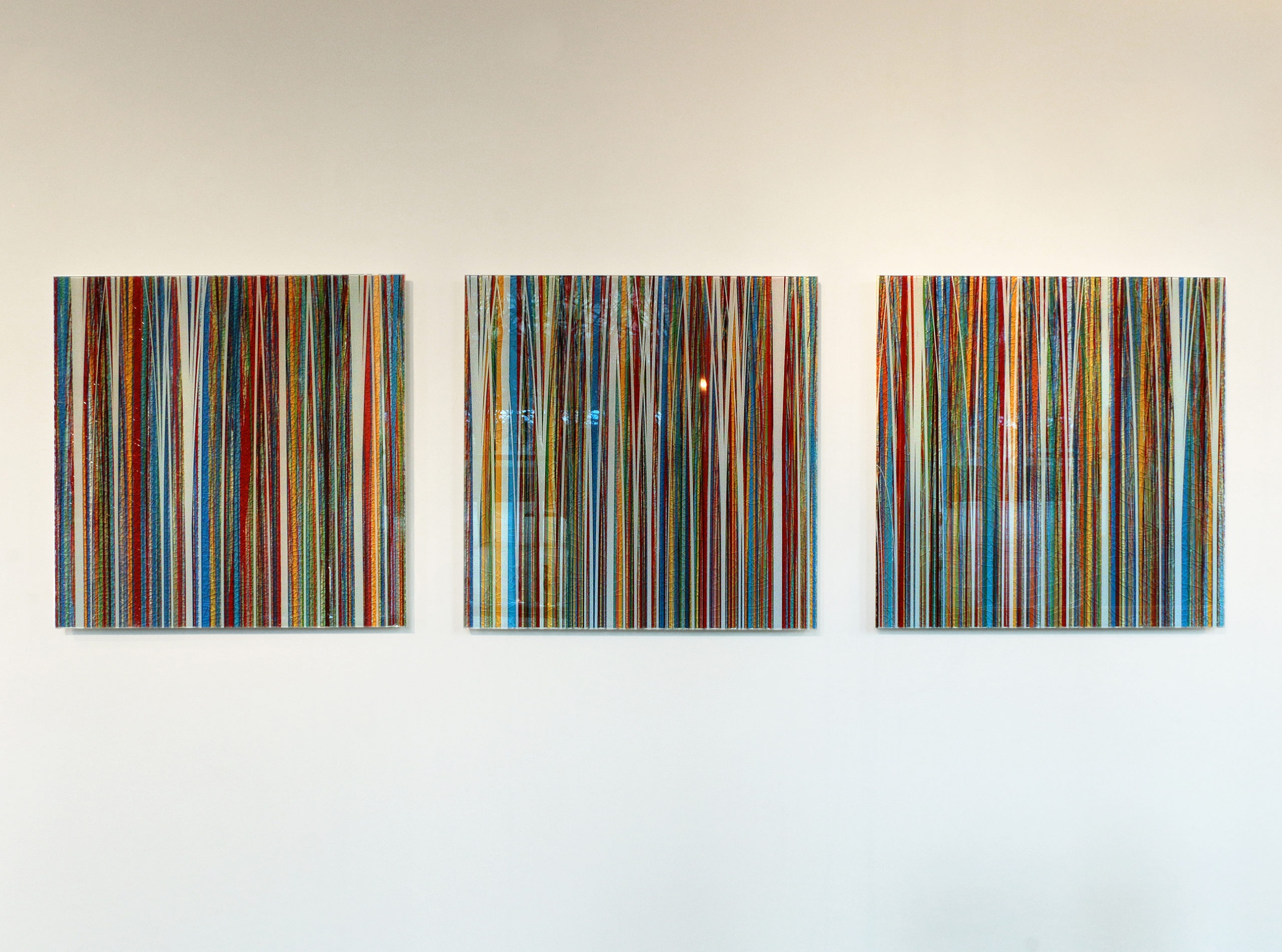看展览 Exhibition
预告片 Trailer
艺术家影片Artist Video
台北·敦仁 展馆 DunRen Gallery
上海.外滩 展馆 Shanghai Gallery
‘DÉJÀ VU’似曾相识
— Pascal Dombis 帕斯卡尔.多比斯个展
PascalDombis 帕斯卡尔.多比斯 (法,b.1965) 出生于法国,法国国立里昂应用科学学院主修工程科学,于美国波士顿塔夫茨大学修习计算机艺术,现居住创作于法国巴黎。Dombis 多比斯是一位研究语言、算法、控制权等领域的视觉艺术家,他创造动态的视觉环境和艺术作品,以技术过程的过度操作、重複性和不可预测性而著名。曾在珀斯文化中心(Perth Cultural Centre)、巴黎皇家公园 (Jardin du Palais-Royal)等地举办个展,参与知名全球艺术串联活动「白夜」 (La nuit Blanche)计划、 威尼斯双年展等大型艺术盛事,作品由布达佩斯美术馆、 韩国大丘美术馆等重要机构永久收藏。
Dombis 多比斯曾在访谈中提及他的作品受到美国作家 William Burroughs 威廉. 巴勒斯影响,探讨如何解放文字,将线性文本随机切割成不同的部分,然后重新 组合成一个新的、不可预测和不合逻辑的「文本」。作品对每个观衆而言,如同视觉图像触发意识中的记忆,曾经看过的场景及光影,每个元素都将有意义。 Dombis 多比斯多年使用計算機與算法来生成简单複製几何与印刷符号,处理文 本、图像、线条,透过简单的代码提供指令,在过程中不断添加其他随机参数, 创造不可预测的动态视觉图形。而「偶然性」与「随机性」被 Dombis 多比斯当作是艺术核心工具,他设法「亲手」对随行性进行某种程度的掌握。事实上,当进行随机实验千万次之后,Dombis 多比斯便掌握了许多变因的关键,因此随机性的因子便能被控制。作品 Double connection,艺术家手动编辑选定线条,在数千线条中掌握了部分的顔色值,使其具有美学整体性。
Dombis 多比斯也创建了类似 AI 的数据库,但是运作模式与传统 AI 算法的数据库截然不同,艺术家在搜集过程中将上千万影像相互连结,让其位元图像 (meta-picture)或位元故事(meta- story)的交互运作模型,关係著设定的关键字词,如作品 Image is Time,图像由艺术家介入一张张挑选,非透过计算机随机搭配。技术上,Dombis 多比斯利用程式算法的重覆动作,并以光栅(Lenticular)手法再现视觉,解构再重组。并对于每件使用光栅立体印刷技术的作品,进行大量的校准操作,贯彻「随机性与掌控度」的创作运用,他谈到:「在数位时代,人类受到直接性的支配,改变著我们的未来,也改变我们的过去。」其引起的动态与不可预测的视觉呈现,産生让人著迷的悖论。
DÉJA VU 的原意是指「既视感、似曾相识」,梦幻又疏离,作品试图唤起观者记忆中似曾相识的经验。PascalDombis 帕斯卡尔·多比斯认自己为现代主义者,认为当代艺术家应在自己命定的时代,不应重覆过去艺术家的影子,而是创造出从未存在过的事物。他使用非常规的方式呈现,让原生数位时代的观众感受到差异, 区辨在日常使用数位装置的经验。这次 Bluerider ART 带来 Pascal Dombis 的个展‘DÉJA VU‘似曾相识,传达艺术家利用电脑技术的偶发性到诠释权的控制创作过程。
当观众凝视最新的Post-Digital Surface系列作品时,将感受到⾊彩与光线交织的动态,无⽌尽的重複聚合与离散的光线运动,简单纯粹的形式与视觉产⽣的错觉,融合为⼀。
⽽耐⼈寻味的作品「垃圾邮件景观」(SpamScape),则巧妙地利⽤当代数位讯息庞⼤、滥⽤电⼦邮件的现象,使⽤机器⼈筛选机制构成画⾯,让许多字⺟、单词、切割的⽂本充斥著空间,反应了数位及⼈类在讯息上的战争。
作品The Limits of Control,则以威廉.巴勒斯的文本为基础,应用有机增长算法使原有文本长度增加数百万倍,而文字却自然形成如 X 或十字等几何形状,藉以探讨数据过剩(大数据)、元数据、非线性、几何和语言等问题。

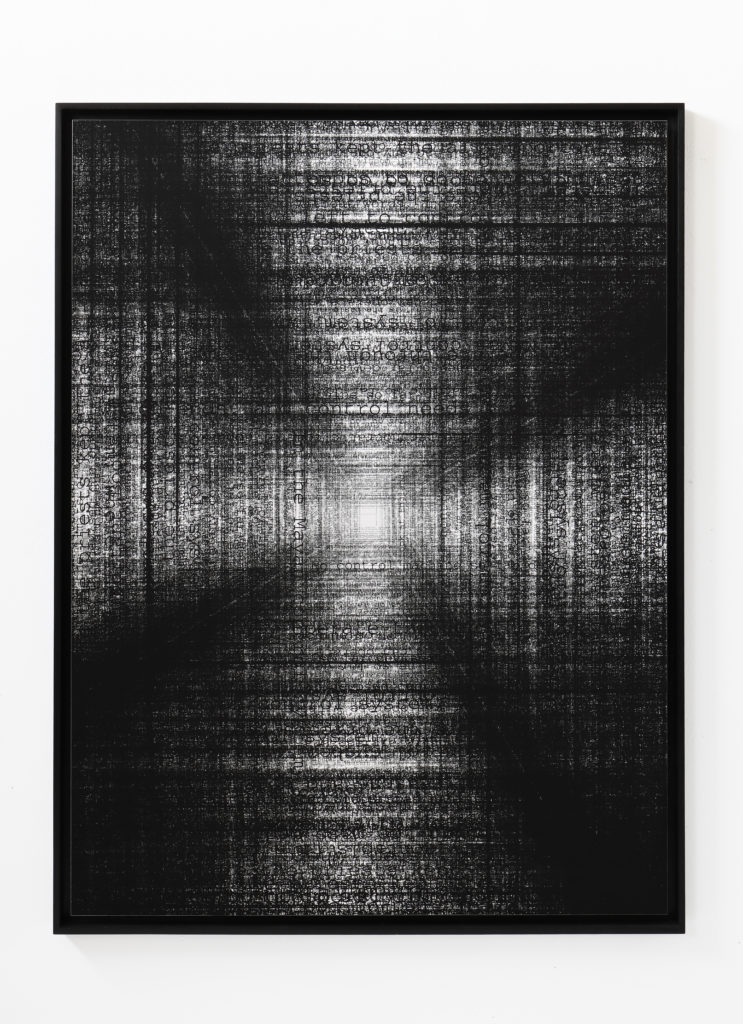
The Limits of Control (B3) | 90x120cm | 2015 | Pigment print on archival paper, laminated on aluminium composite 
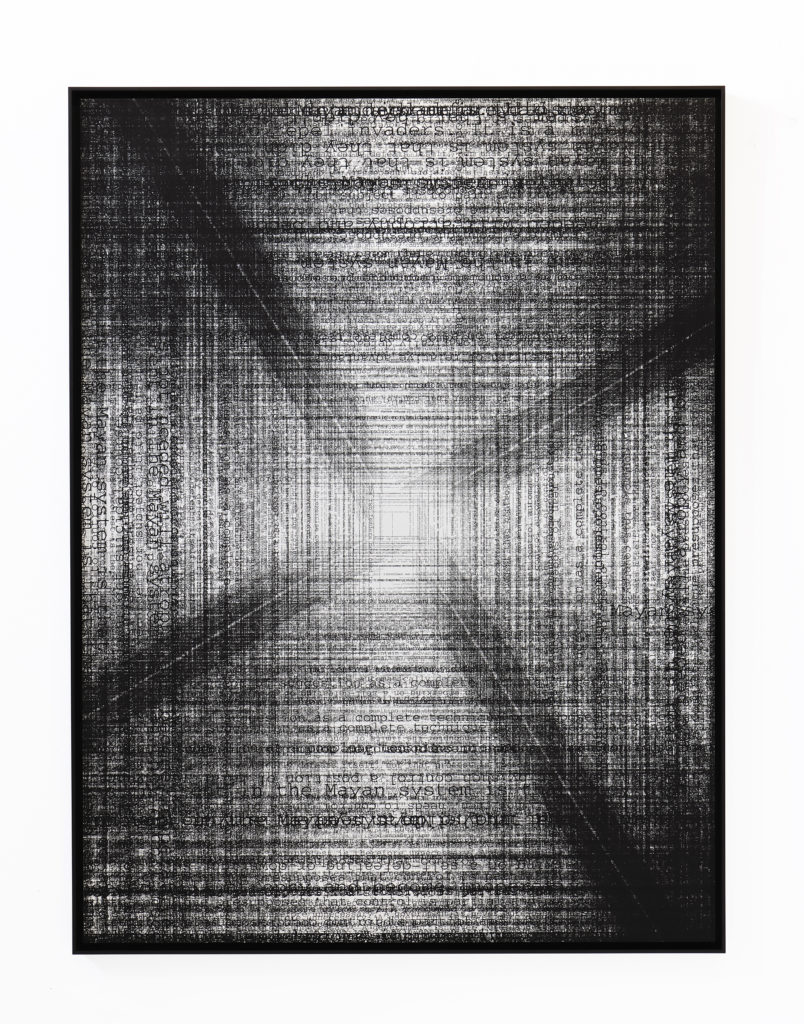
The Limits of Control (B6)|110x120cm |2015| Pigment pirnt on archival paper, mounted on aluminum panel
新作 I AM NOT A ROBOT ,呈现成千上万脸孔的排列,交错著真实个人及经由演算法製造的AI面孔图像,并以文字” Are You Real, Are You Robot,… ”传达现实世界发生真实与虚拟群像的真伪难辨现象。
Irrational Geometrics系列作品,贯彻艺术家的创作手法,使用无数线条、文本与图像缝合,绵密地交织在一块,呼应著在上海嘴滨江金融城船厂1862艺术中心展出的大型艺术装置Double Connection (2020),透过线性与行人、车辆、街道的反射,将城市光景浓缩成一个双重语境。
‘DÉJÀ VU‘似曾相识
– Pascal Dombis帕斯卡尔.多比斯个展
Bluerider ART 台北.敦仁
展期:2021.11.20 – 2022.1.29
Tue.-Sun., 10am – 7pm
台北市大安路一段101巷10号1楼
Bluerider ART 上海.外滩
展期:2021.11.27 – 2022.1.29
Tue.-Sun., 10am – 7pm
上海市黄浦区四川中路133号
艺术家 Artist
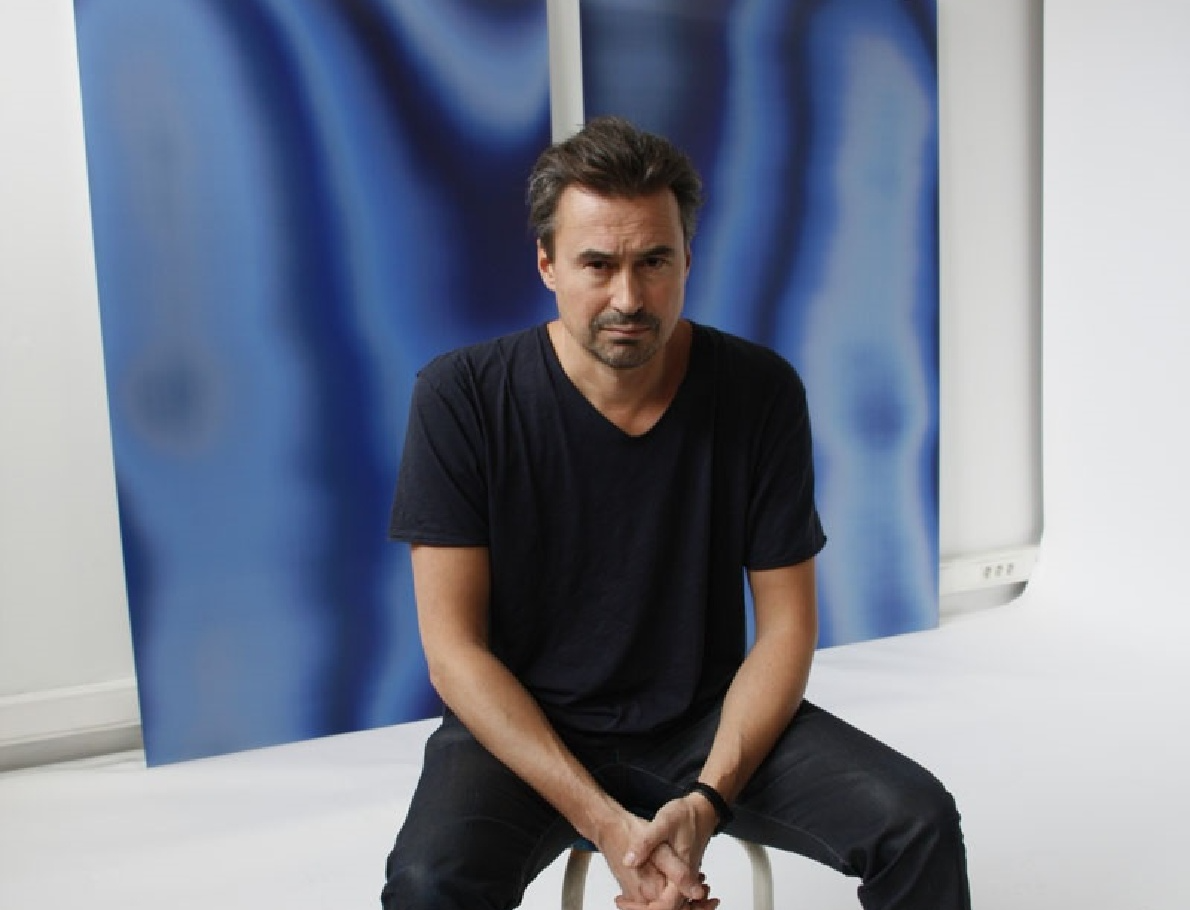

Pascal Dombis 帕斯卡尔·多比斯
(France, b.1965)
PascalDombis 帕斯卡尔.多比斯 (法,b.1965) 出生于法国,法国国立里昂应用科学学院主修工程科学,于美国波士顿塔夫茨大学修习计算机艺术,现居住创作于法国巴黎。Dombis 多比斯是一位研究语言、算法、控制权等领域的视觉艺术家,他创造动态的视觉环境和艺术作品,以技术过程的过度操作、重複性和不可预测性而著名。曾在珀斯文化中心(Perth Cultural Centre)、巴黎皇家公园 (Jardin du Palais-Royal)等地举办个展,参与知名全球艺术串联活动「白夜」 (La nuit Blanche)计划、 威尼斯双年展等大型艺术盛事,作品由布达佩斯美术馆、 韩国大丘美术馆等重要机构永久收藏。
Pascal Dombis 于巴黎大皇宫 Grand Palais 参与联展 Artistes & Robots,並展出作品 Spam Space (2018)
Dombis除了利用算法随机排列各式几何线条,在作品中也加入了文字的元素。长达五年 (2010-2015) 的著名创作计画 Text(e)~Fil(e)s,2010年于巴黎皇家宫殿 (Palais Royal) 展出,长252米,如铺盖于地上的缎带,作品中堆叠成千上万条欧美著名文学家,如 伏尔泰、卢梭、狄德罗、狄更斯、波特莱尔…等,撰写有关巴黎皇家宫殿的文本。Text(e)~Fil(e)s系列也曾以时尚、织品相关文章内容排列,2015于巴黎时尚与设计中心 (Cité de la Mode et du Design, Paris)木栈道现地製作展出。当人来人往的人潮走过皇家宫殿的长廊,不仅丰富了视觉感受,更提供一种沉浸式的观展体验。
Pascal Dombis 于巴黎新兴複合式数位艺术空间 EP7 media façade 展出影像作品 The End (less) (2018)
Ligne-Flux (2016), @ Ecole Nationale Supérieure d’Architecture, Strasbourg, FR , Pascal Dombis & Gil Percal (architect), Foot-bridge under face, printed glass, 2016年於法国圣特拉斯堡的建筑学院 (Ecole Nationale Supérieure d’Architecture, Strasbourg)校园天桥设计作品。
Perspectives Inversées (2017), 巴黎皇家宫殿花园 (Jardin du Palais-Royal, Paris)由三面玻璃面板组成的。
Time Cube (2017), @ Orenga de Gaffory, Patrimonio, FR , UV black print on digitally cut aluminum composite with inside mirror. Pascal Dombis展现了丰富的创作能量,不仅在创作题材上不断突破,以线条、文字、图像的元素加入作品中;更在作品展示的形式上不断创新。将文字系列的作品立体化,Dombis打造出Time Cube (2017),这件四方体、中间镂空的作品。置于户外空间,高两米五的立体装置,观者可以绕著Time Cube移动,阅读作品中呈现的文句,进入互动性的观展体验。
Dombis 多比斯曾在访谈中提及他的作品受到美国作家 William Burroughs 威廉. 巴勒斯影响,探讨如何解放文字,将线性文本随机切割成不同的部分,然后重新 组合成一个新的、不可预测和不合逻辑的「文本」。作品对每个观衆而言,如同 视觉图像触发意识中的记忆,曾经看过的场景及光影,每个元素都将有意义。 Dombis 多比斯多年使用计算机与算法来生成简单複製几何与印刷符号,处理文 本、图像、线条,透过简单的代码提供指令,在过程中不断添加其他随机参数, 创造不可预测的动态视觉图形。而「偶然性」与「随机性」被 Dombis 多比斯当作是艺术核心工具,他设法「亲手」对随行性进行某种程度的掌握。事实上,当 进行随机实验千万次之后,Dombis 多比斯便掌握了许多变因的关键,因此随机性的因子便能被控制。作品 Double connection,艺术家手动编辑选定线条,在数千线条中掌握了部分的顔色值,使其具有美学整体性。
Dombis 多比斯也创建了类似 AI 的数据库,但是运作模式与传统 AI 算法的数据库截然不同,艺术家在搜集过程中将上千万影像相互连结,让其位元图像 (meta-picture)或位元故事(meta- story)的交互运作模型,关係著设定的关键字词,如作品 Image is Time,图像由艺术家介入一张张挑选,非透过计算机随机搭配。技术上,Dombis 多比斯利用程式算法的重覆动作,并以光栅(Lenticular)手法再现视觉,解构再重组。并对于每件使用光栅立体印刷技术的作品,进行大量的校准操作,贯彻「随机性与掌控度」的创作运用,他谈到:「在数位时代,人类受到直接性的支配,改变著我们的未来,也改变我们的过去。」其引起的动态与不可预测的视觉呈现,産生让人著迷的悖论。
收藏纪录 Collection

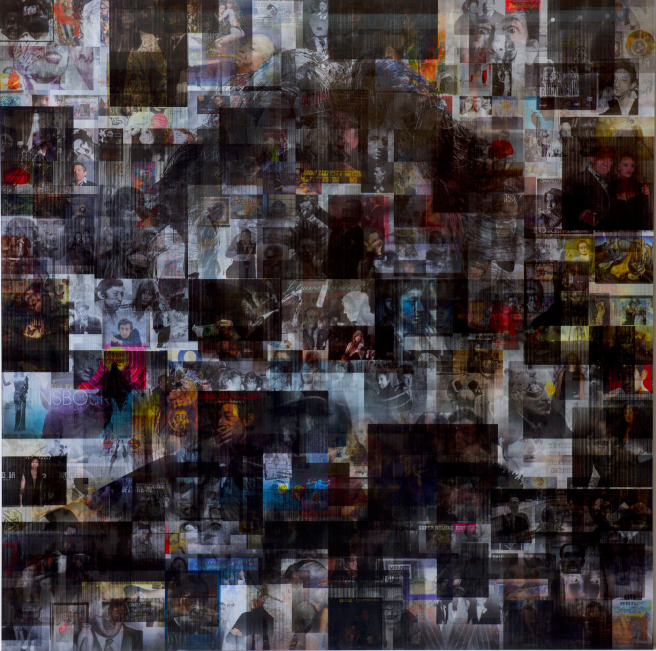
台湾国巨基金会收藏 
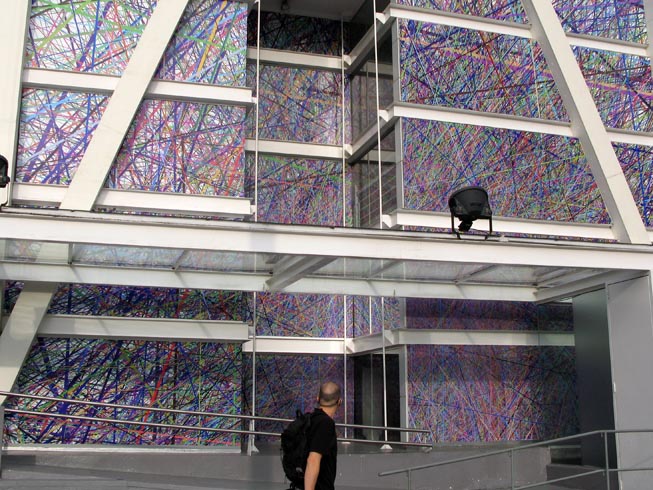
巴西圣保罗伊塔乌文化学院 Instituto Itaú Cultural 
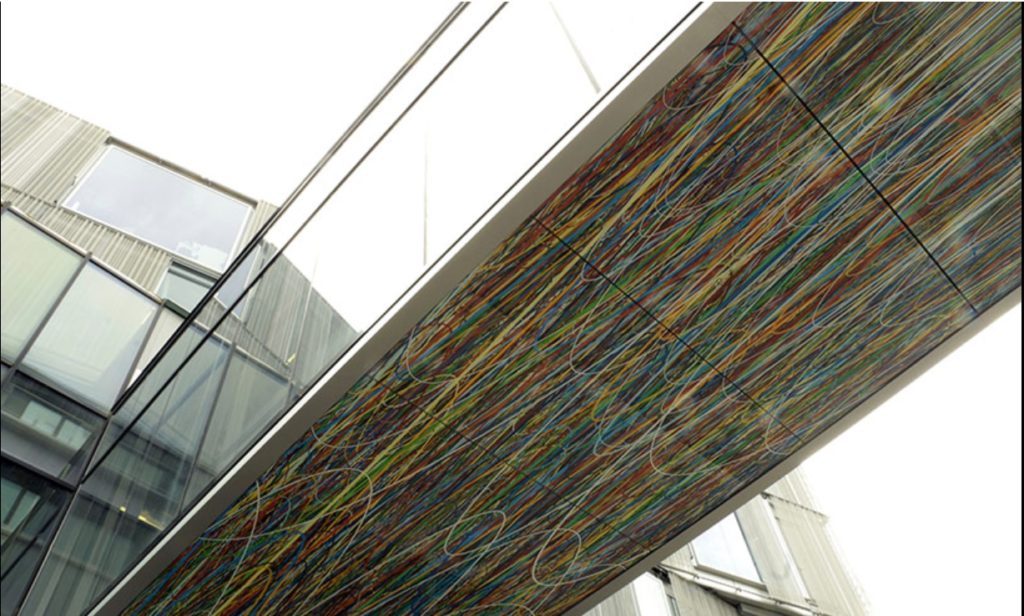
法国圣特拉斯堡建筑学院 Ecole Nationale Supérieure d’Architecture, Strasbourg, FR 
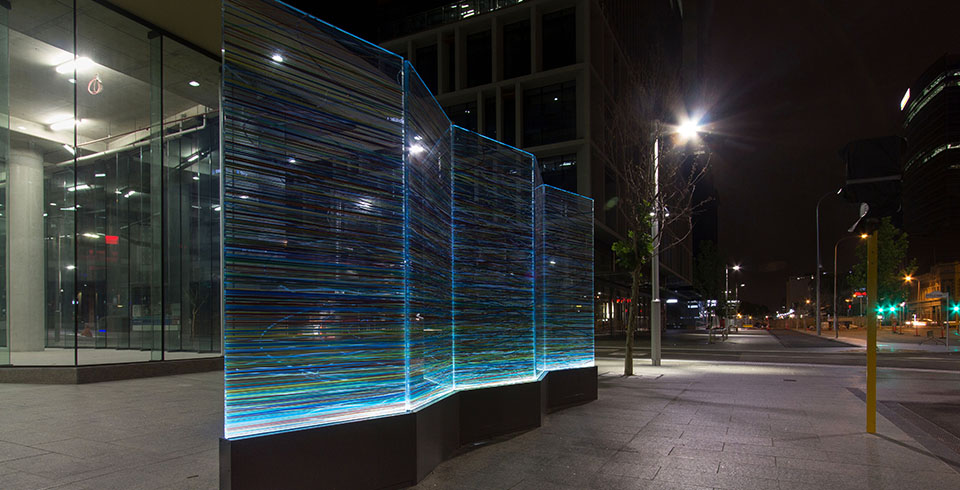
国王广场, 澳洲伯斯 Kings Square, Perth, AUS
媒体报导 Press
Pascal Dombis
(French, b. 1965)
Solo Exhibitions
2021 Barroco! II, Galerie Odile Ouizeman, Paris ,FR
2020 Futurs Antérieurs, La Chapelle, Chaumont – FR
2020 Regards d’Artistes, Château d’Aunoy, Champeaux – FR
2019 The Invisible Generation, Galerie Pascal Janssens / Keyes Art Mile, Johannesburg – SA
Crackography, Galerie Pascal Janssens, Gand – BE
2018 IBU Gallery, Paris – FR
2017 Perspectives Inversées, Jardin du Palais-Royal & IBU Gallery, Paris – FR
Crack Time, TZR Galerie, Düsseldorf – DE
2017 Time Is Time Was, Espace Orenga de Gaffory, Patrimonio – FR
2017 Image is Time, Galerie Pascal Janssens, Gand – BE
2016 Reality is a Scanning Pattern, Stiftung Bartels Fondation, Basel – CH
2015 The Limits of Control, Galerie Pascal Janssens, Gand – BE
2015 CONTROL, TZR Galerie, Düsseldorf – DE
2015 Text(e)~Fil(e)s, Cité de la Mode et du Design, Paris – FR (cat.)
2015 The End(less), Budapest Art Factory, Budapest – HU
2014 Mixed Grill(e), RAYGUN Art Projects, Toowoomba – AUS
2014 Irrational Geometrics, Holly Hunt, New York – USA
2013 Post-Digital, TZR Galerie, Düsseldorf – DE
2013 The End(less), Nuit Blanche, Métro Gare de Lyon, Paris – FR
2013 Glitch_Stitch, Galerie Pascal Janssens, Gand – BE
2012 Extra_Vague, Galerie RX, Paris – FR
2012 Eurasia, The Cat Street Gallery, Hong Kong – HK (cat.)
2012 Eurasia, TZR Galerie, Düsseldorf – DE (cat.)
2012 Le Musée en Herbe, Paris – FR
2012 IBU Gallery, Paris – FR
2011 Gott ist Tot, Claudio Bottello Contemporary, Turin – IT
2011 Pourquoi ?What_Next ?, Nuit Blanche, Saint-Eustache, Paris – FR
2010 Text(e)~Fil(e)s, Palais-Royal, Paris – FR (cat.)
2010 IBU Gallery, Paris – FR
2010 EXCES I, The Page Gallery (Die Galerie), Seoul – KR (cat.)
2010 EXCES II, Wooson (Seok) Gallery, Daegu – KR (cat.)
2009 Image-Flux, Galerie RX, Paris – FR (cat.)
2009 Time Spirals, The Cat Street Gallery, Hong Kong – HK (cat.)
2008 Géométries Irrationnelles, Galerie municipale, Vitry-sur-Seine – FR (cat.)
2007 BLINK, Artpool, Budapest – HU (cat.)
2007 RRB, Espace Orenga de Gaffory, Patrimonio – FR
2006 @tom1k, Hôtel Pams, Mairie de Perpignan, Perpignan – FR
2005 SpamScape, Maison Populaire, Montreuil – FR
2005 Château de Linardie, Senouillac – FR
2004 Hyper-Structures, Fort Napoléon, La Seyne-sur-Mer – FR (cat.)
2004 Galerie Mabel Semmler, Paris – FR (cat.)
2002 Galerie Mabel Semmler, Paris – FR
2001 Galerie EOF, Paris – FR
Group Exhibitions
2020 Algorithm & Appropriation, Bluerider Ren-Ai Gallery, Taipei – TW
2020 Hemera, IBU Gallery, Paris – FR
2019 The Invisible Man, Wood Street Galleries, Pittsburgh – USA
2019 Linha Atemporal, Dan Galeria, São Paulo – BR
2019 ArtJaws, Zurcher Gallery, New York – USA
2019 Einsichten IV, Galerie Hengevoss-Dürkop, Hamburg – DE
2019 Cape Town Art Fair, Galerie Pascal Janssens, Cape Town – SA
2019 SP-Arte, Dan Galeria, São Paulo – BR
2019 Art Paris, Galerie Hengevoss-Dürkop, Paris – FR
2019 Wechselspiel, Pforzheim Galerie, Pforzheim – DE
2019 Mutatio, Garage Amelot, Paris – FR
2018 Artistes & Robots, Galeries Nationales, Grand Palais, Paris – FR (cat.)
2018 Cape Town Art Fair, Galerie Pascal Janssens, Cape Town – SA
2018 Carte Blanche, Galerie Hengevoss-Dürkop, Hamburg – DE
2018 The End(less) / Exo Gallery, EP7, Paris – FR
2018 KIAF, The Page Gallery, Seoul – KR
2018 Carte Blanche Zeitgenössisch, Institut Français, Hamburg – DE
2017 Cybernetic Consciousness, Itaú cultural, Sao Paulo – BR (cat.)
2017 Modus Operandi, The Société, Bruxelles – BE
2017 Interferences, Galerie NMarino, Paris – FR
2017 Cape Town Art Fair, Galerie Pascal Janssens, Cape Town – SA
2017 Das Skulpturenprojekt, Städtische Galerie, Villingen-Schwenningen – DE
2017 FNB JoburgArtFair, Galerie Pascal Janssens, Johannesburg – SA
2017 Variation, Cité internationale des arts, Paris – FR
2017 A bao a qou, Bamhaus, Luxembourg
2016 Monochrome, The Société, Bruxelles – BE
2016 Connected, Centrale for contemporary art, Bruxelles – BE (cat.)
2016 Société de Service, Plateforme, Paris – FR
2016 Cape Town Art Fair, Galerie Pascal Janssens, Cape Town – SA
2016 Interactivo, Galería Odalys, Madrid – ES (cat.)
2016 Summer Exhibition, Galerie Pascal Janssens, Gent – BE
2016 Bizarro, Galerie Frédéric Castaing, Paris – FR
2016 RE-culture 4, Agora Argyri, PATRAS – GR (cat.)
2016 The End(less), Studio Abel14, Paris – FR
2015 Nel Blu dipinto di Blu, da Yves Klein a…, Museum of Modern and Contemporary Art, Acri – IT (cat.)
2015 Perspectives, Art Plural Gallery, Singapore
2015 Ré-émergence, La Maison Populaire, Montreuil – FR (cat.)
2015 Cine Retrospective, Perth Cultural Centre, Perth – AUS
2015 ArtParis, Galerie Pascal Janssens, Paris – FR
2015 London Art15, Galerie Pascal Janssens, London – UK
2015 Voltaje, Centro Creativo Textura, Bogotá – COL
2015 Variation, Espace des Blancs Manteaux – Paris, FR
2015 The End(less), La Noche en Blanco, Bogotá – COL
2015 Arte-Scienza, Palazzo Costanzi, Trieste, IT (cat.)
2014 Art14, Galerie Pascal Janssens, London – UK
2014 ArtParis, Galerie Pascal Janssens, Paris – FR
2014 Summer Show, Galerie Pascal Janssens, Gent – BE
2014 Portrait, Galerie RX, Paris – FR
2014 Art Taipei, The Cat Street Gallery, Tapei – TW
2013 NOISE, 55th Venice Biennale of Art (Collateral Event), Venise – IT (cat.)
2013Année Lenôtre, Les Nouvelles Folies Françaises, Domaine National de St-Germain-en-Laye – FR
2013 Oltre il sublime, Art Space Luisi Spa, Trieste – IT
2013 Wonder Works, The Cat Street Gallery, Hong Kong – HK
2013 Plaisir, Galerie RX, Paris – FR
2013 Made in light, Fondation Vasarely, Aix-en-Provence – FR
2013 Made in light, Fondation EDF, Paris – FR
2013 Artshow Busan, The Page Gallery, Busan – KR
2013 Show Off, the Media Art Fair, Galerie RX, Paris – FR
2013 KIAF, The Page Gallery, Seoul – KR
2012 Schrift und Bild, Museum Kunstpalast, Düsseldorf – DE
2012 Won Ocean, Neue Galerie Gladbeck, Gladbeck – DE
2012 Plaisir, Galerie RX, Paris – FR
2012 Update_4 Biennal, iMAL, Bruxelles – BE
2012 Non & Digital, The Central House of Artists, Moscow – RU
2012 Show Off, the Media Art Fair, Paris – FR
2012 Autour du Psychedelisme, Galerie Janos, Paris – FR
2011 Hybrid Boy, TZR Galerie, Düsseldorf – DE
2011 HK Art Fair, The Cat Street Gallery, Hong Kong – HK
2011 SOAF, The Page Gallery, Seoul – KR
2011 Signal 8, The Cat Street Gallery, Hong Kong – HK
2010 Tou_R0se, Traverse, Centre Bellegarde, Toulouse – FR
2010 Salon Dessin Contemporain, Galerie RX, Paris- FR
2010 HK Art Fair, The Cat Street Gallery, Hong Kong – HK
2010 New Era, Galerie RX, Paris – FR
2010 Paratissima, Claudio Bottello Contemporary, Turin – IT
2009 EcritureAbstraction, Galerie RX, Paris – FR
2009 HK Art Fair, The Cat Street Gallery, Hong Kong – HK
2008 Imaging by numbers, Block Museum, Chicago – USA (cat.)
2008 art.ficial 4.0, Instituto Itaú cultural, Sao Paulo – BR (cat.)
2008 Great wall of Oakland, Oakland – USA
2008 Videoholica 08, Velchev Art Museum, Varna – BU
2008 Signal 8, The Cat Street Gallery, Hong Kong – HK
2007 Traverse, Centre Bellegarde, Toulouse – FR (cat.)
2007 Victory Media Network, Dallas – USA
2007 Slought in Berlin, Galerie Heike Curtz, Berlin – DE
2007 Slick, Galerie Numeriscausa, Paris – FR
2006 Almost Art, Slought Fundation, Philadelphia – USA
2006 Process Revealed, Artpool, Budapest – HU
2006 Trampoline, Broadway Media Centre, Nottingham – UK
2005 Espace Recherches / DesignLab, Salon du Meuble, Paris – FR
2005 Nuit d’Art, Place Saint Sulpice, Paris – FR
2004 Plasticité, Galerie Mabel Semmler, Paris – FR
2004 Generative Art Conference, Milan – IT
2004 International Festival of Electronic Art 404, Rosario – AR
2004 Canon Digital Creator Award, SVA Computer Art, New York – USA
2003 Canon Digital Creator Award, Spiral gallery, Tokyo – JP (cat.)
2002 Espace Cardin, Paris – FR
2000 Le temps fractal, Galerie Xippas, Paris – FR (cat.)
2000 Universal Concepts Unlimited, New York – USA
1999 Fractalisations, Villa Tamaris, La Seyne-sur-Mer – FR (cat.)
1999 Fractalisations,Abbaye de Ronceray, Angers – FR
1999 Habiter les réseaux, Galerie de l’école des Beaux-Arts, Metz – FR
1999 Centre Culturel Français, Turin – IT
1997 Fractal Art, Fondation Ricard, Paris – FR (cat.)
1997 Fractal, Palazzo Economo, Trieste – IT
1997 Zoom, Visual Arts Gallery, Purchase College, New York – USA (cat.)
1997 Caos Vertiginoso, Galleria Cruce, Madrid – SP
1996 Microcosmos, University of Georgia, Athens – USA
1996 Vous avez dit Fractal, Musée, Médiathèque, Le Parefeuille, Enclos de la Source, Uzès – FR
1996 Modernita, Palazzo Bricherasio, Turin – IT (cat.)
1995 Galerie Arx, Turin – IT (cat.)
1995 Art Fractal, Galerie Angle, Saint-Paul-Trois-Châteaux – FR
1994 Ars Electronica (Honorary Mention), Linz – AT (cat.)
1993 Salon de Montrouge, Montrouge – FR (cat.)
1991 Salon de Montrouge, Montrouge – FR (cat.)
1991 Jeune Peinture, Paris – FR (cat.)
1990 Jeune Peinture, Paris – FR (cat.)
1988 Multi Media Art Gallery, New York – US
1988 Plan de Travail, Lyon – FR
1986 Plan de Travail, Lyon – FR
Publications
2018 Pascal Dombis, Monograph, Supernova éditions
2018 L’art au-delà du digital, Dominique Moulon, nouvelles éditions Scala
2018 Artistes & Robots, Laurence Bertrand Dorléac, Jérôme Neutres, Réunion des musées nationaux
2015 Art et Numérique en résonance, Dominique Moulon, Maison populaire et les nouvelles éditions Scala
2015 Mathematics and Art – A Cultural History, Lynn Gamwell, Princeton University Press
2014 Géométrie de l’excès, Michel Verlinden, Focus Vif Express
2013 Lettering Large The Art and Design of Monumental Typography, Steven Heller & Mirko Ilic, The Monacelli Press
2013 Artpool – The Experimental Art Archive of East-Central Europe, Artpool, Budapest
2012 A New Regime of Images, Christine Buci-Glucksmann, Art Absolument
2012 Pascal Dombis’ Eurasia, Kay Heymer, TZR Galerie, Düsseldorf
2011 CensorZip, Pipeline Magazine, issue #24
2011 Spigolature tra Venezia e la Francia, Giancarlo Pagliasso, revue Zeta
2010 Aesthetics of Digital Art, Simon Erohin, publisher: Aletheia (Russian)
2010 Exces, Henri-François Debailleux, Die Galerie, Seoul
2009 Art, Code, and the Engine of Change, Paul Hertz, CAA Art Journal
2008 Philosophie de l’ornement : D’Orient en Occident, Christine Buci-Glucksmann, Galilée
2007 From Technological to Virtual Art, Frank Popper, MIT Press
2007 SpamScape, Maria Maccotta et Pierre Vermeersch, La Re-Visite, Traverse, Toulouse
2007 Dombis fait bonne impression, Henri-François Debailleux, Libération
2006 Au-delà de la mélancolie, Christine Buci-Glucksmann, Galilée
2004 La Main de l’Homme, Blackhawk, La Seyne-sur-Mer
2002 La folie du voir, Christine Buci-Glucksmann, Galilée
2002 Pascal Dombis : Les peintures bien roulées de la computation, Joseph Nechvatal
2002 Dombis, des lignes à l’infini, Henri-François Debailleux, Libération
2000 L’art depuis 1945, Hervé Gauville, Hazan
Public Arts
2020 Lujiazui HARBOUR CITY, Pascal Dombis & Gil Percal, , Shanghai, CN
2016 Ecole Nationale d’Architecture de Strasbourg, Pascal Dombis and Gil Percal, FR
2015 Kings Square, Pascal Dombis and Gil Percal ,Perth, AUS
Collections
Daegu Art Museum, Daegu, KR
Ville de Vitry-sur-Seine – FR
Musée des Beaux Arts, Szepmuveszeti Muzeum, Budapest – HU
Seiko Epson Corp. – JP
Canon Inc. – JP
Victory Arts Collection – USA
Block Museum, Chicago – USA
Fondazione Palazzo Bricherasio – IT
Yageo Foundation – TW
台北·敦仁 作品 Works
COOL_CTRL (X2)
2017|110x110cm|16 cut characters assembled (lenticular print, black aluminum composite, mirror aluminum composite)
The Limits of Control (B3)
2015|90x120cm | Pigment print on archival paper, laminated on aluminium composite
COntrOL
2020|180x90cm|Cut lenticular print on aluminum composite
Post-Digital Surface (T1 )
2020|120x180cm|Lenticular print on aluminum composite
Post-Digital Surface (pink S10)
2021|90x120cm | Lenticular print on aluminum composite
Post-Digital Surface (U1)
2020|120x120cm|Lenticular print on aluminum composite
Post-Digital Surface
2019|2 panels, 82x69cm total (37x69cm each)|Cut and blowtorch burned lenticular print on aluminum composite
RightRong
2020|110x180cm|Cut lenticular print on aluminum composite
SpamScape (B7)
2020|120x90cm | Cut lenticular print on aluminum composite
Language Intersects with Time and Space
2018| 120x90cm | Cut lenticular print on aluminum composite
Good+Evil=Void (X1)
2012 | 110x110cm | Lenticular print on aluminum composite
Hot Dark Future (F1)
2021|90x90cm|Lenticular print on aluminum composite
Out Of Space, Out Of Time
2017 | 60x60cm | Lenticular print on cut mirror aluminum composite
Lost Everything, All Left Traces
2018 | 60x60cm | Lenticular print on cut mirror aluminum composite
上海·外灘 作品 Works
I AM NOT A ROBOT (F1)
2021| 55x80cm|Pigment print and acrylic gel on archival paper
DEJAVU
2021| 90x120cm| Blowtorch burned lenticular print on aluminum composite 01
Post-Digital Surface
2021|3 panels,60x180cm each| Lenticular print on aluminum composite
Post-Digital Surface
2019|60x160cm each | Lenticular print aluminum composite
Post-Digital Blue (R1)
2019| 110x180cm|Lenticular print aluminum composite
Post-Digital Surface (T4)
2021|120x180cm |Lenticular print aluminum composite
Post-Digital Surface (C S9)
2020|90x130cm| Lenticular print on aluminum composite
Post-Digital Surface (K S5)
2019|90x120cm| Lenticular print on aluminum composite
O(Post-Digital Burn)
2021|90x90cm|Blowtorch burned lenticular print on aluminum ocmposite and PVC
Post-Digital Burn O (D7)
2021| 60x60cm|Blowtorch burned lenticular print on aluminum composite and PVC
Post-Digital Burn O (D8)
2021| 60x60cm| Blowtorch burned lenticular print on aluminum composite and PVC
Post-Digital Burn O (D9)
2021| 60x60cm| Blowtorch burned lenticular print on aluminum composite and PVC
The Limits of Control (B6)
2015|110x120cm | Pigment pirnt on archival paper, mounted on aluminum panel
Operation Rewrite (control Machine)
2018|90x120cm|White ink cured and pigment print on archival paper, mounted on aluminum
Control (X2)
2015|110x110cm|Lenticular pirnt on aluminum compostie
Reality is a Scanning Pattern (G2)
2016| 60x60cm|Ceramic ink on multilayered cracked glass panel
Hack Time
2017| 60x60cm|Ceramic ink on multilayered cracked glass panel
Space is Crystallized Time
2017| 60x60cm| Ceramic ink on multilayered cracked glass panel
Words…Control
2016|60x60cm| Ceramic ink on multilayered cracked glass panel
Irrationnal Geometrics
2016|60x60cm each| Ceramic ink on multilayered glass panel
Irrationnal Geometrics
2016|60x60cm each|Ceramic ink on multilayered cracked glass panel
Irrationnal Geometrics (K-G1)
2016|60x60cm| Ceramic ink on multilayered cracked glass panel
